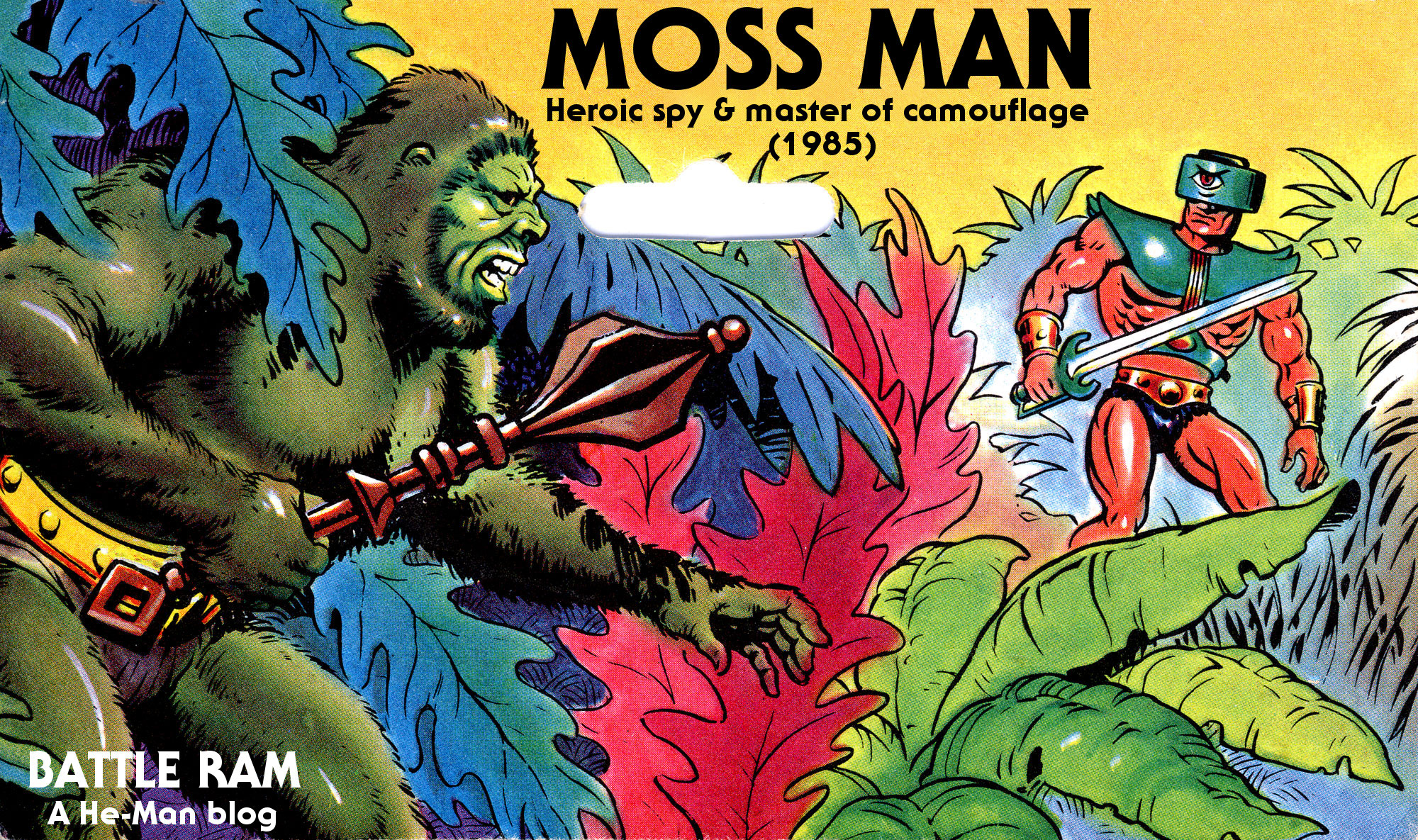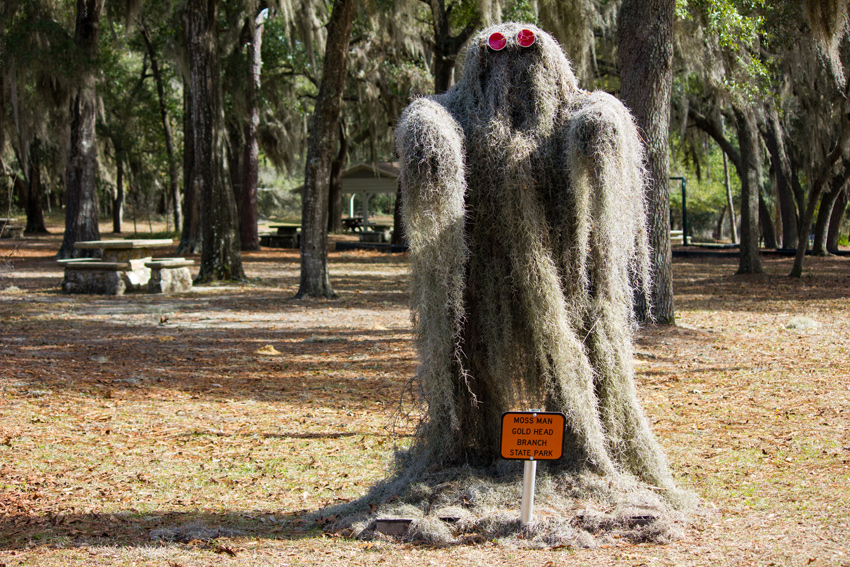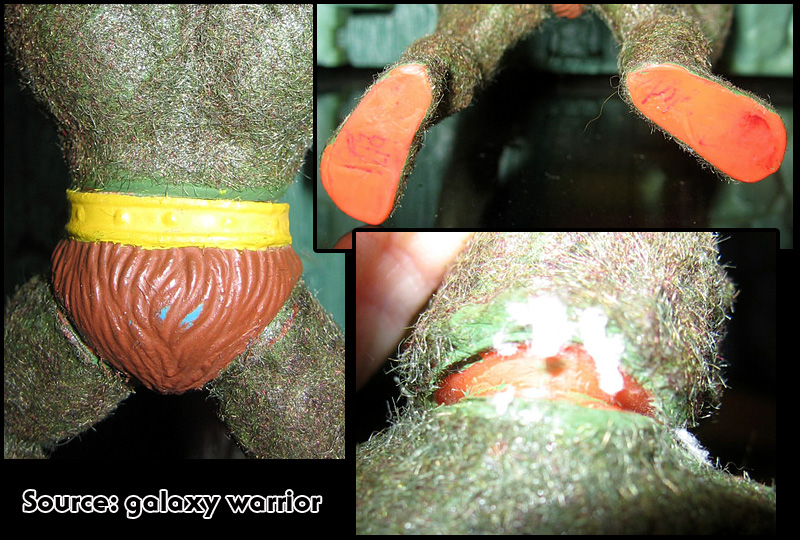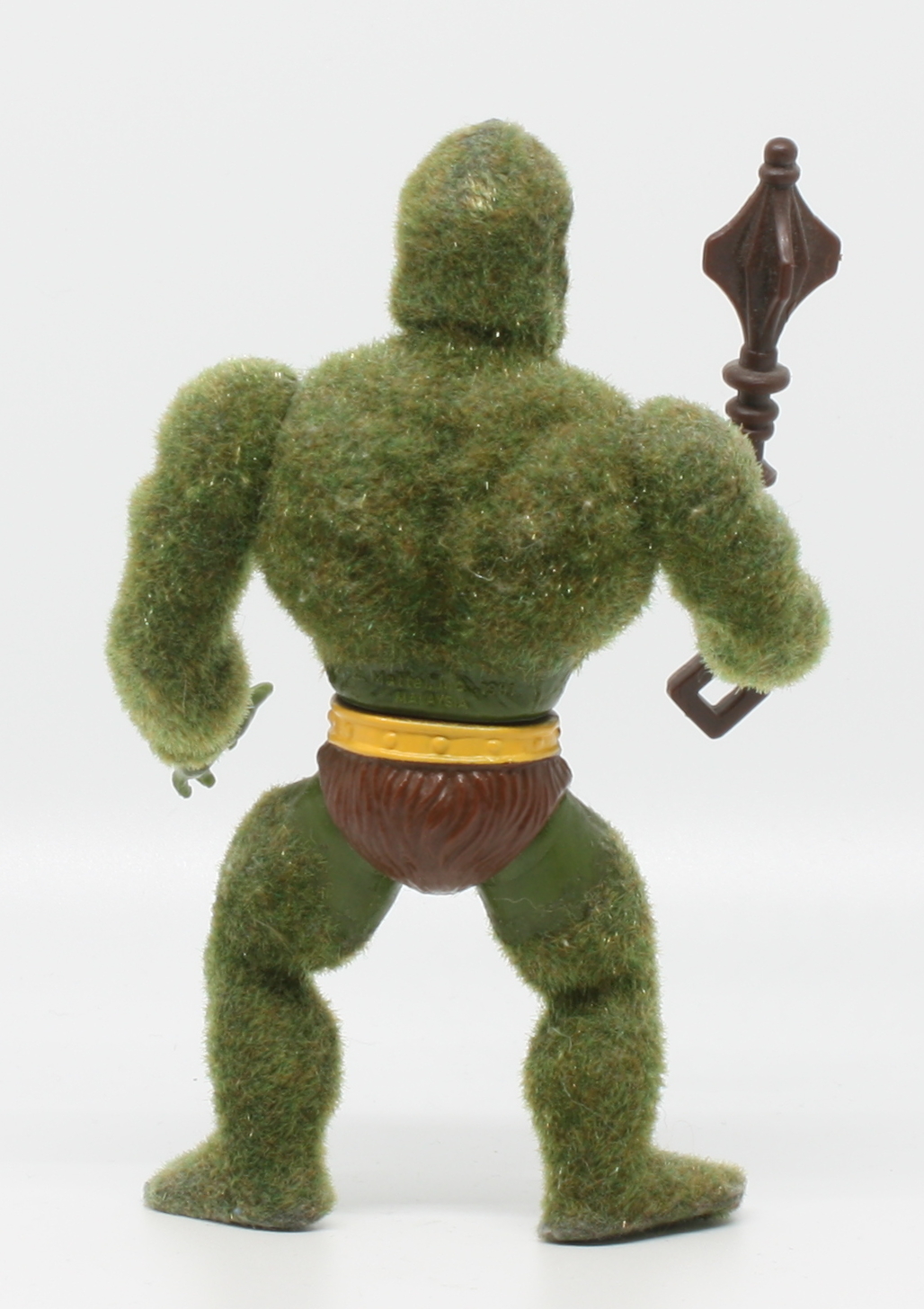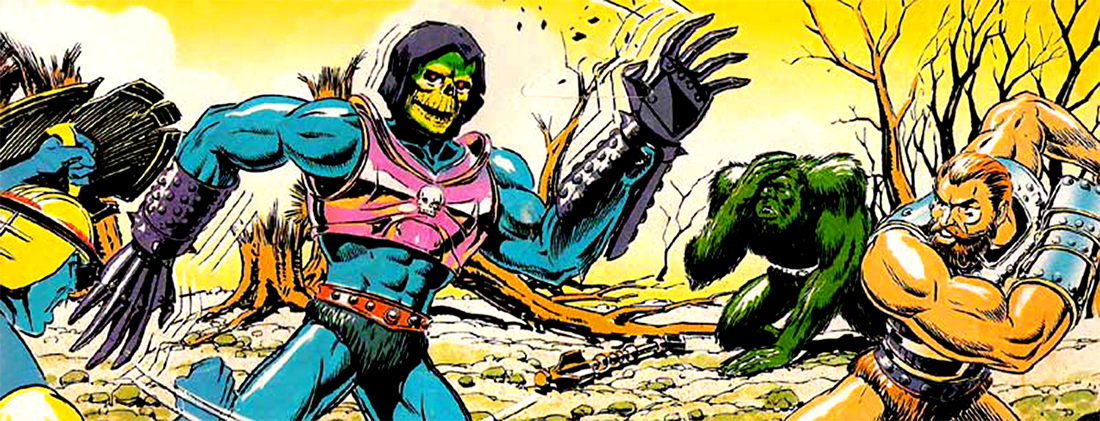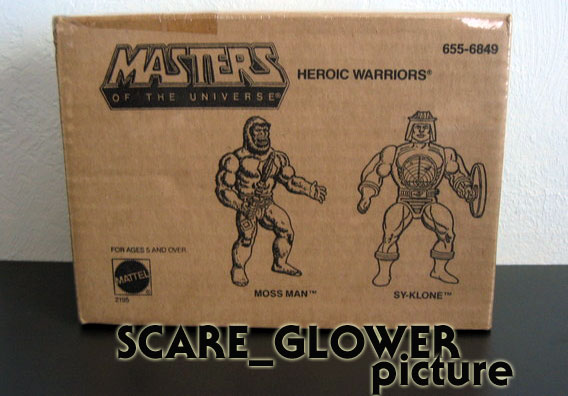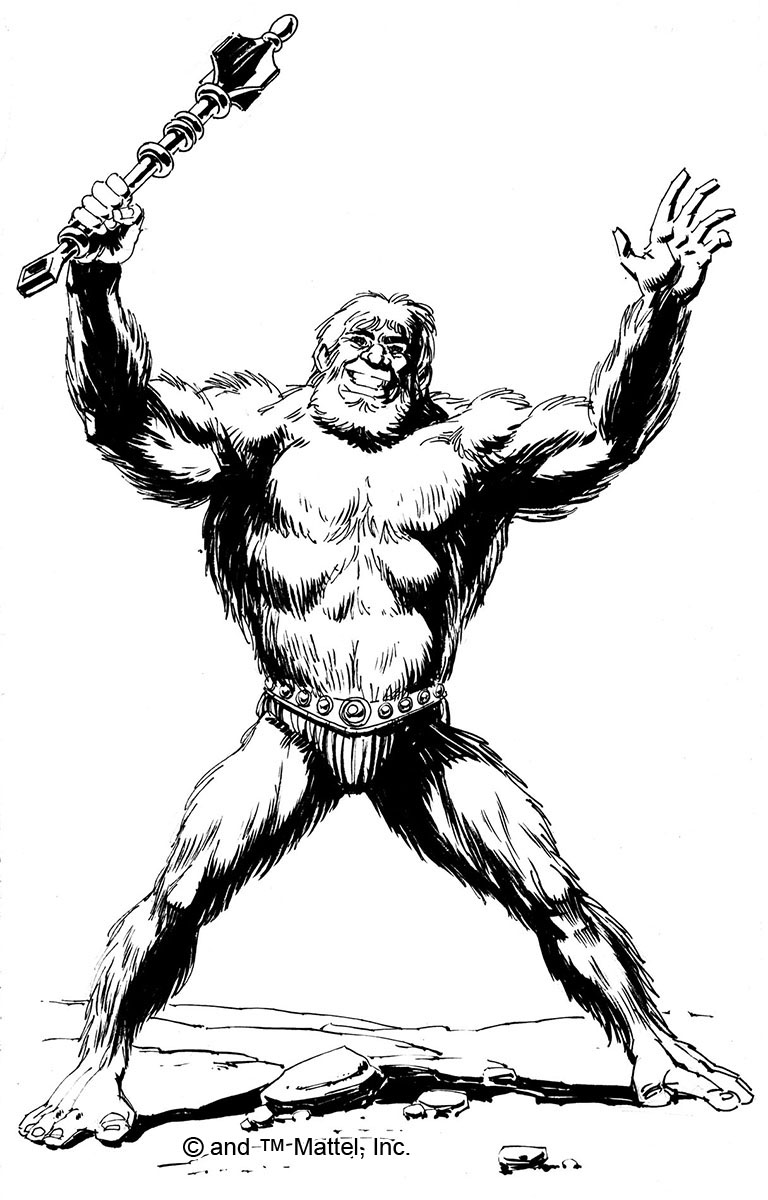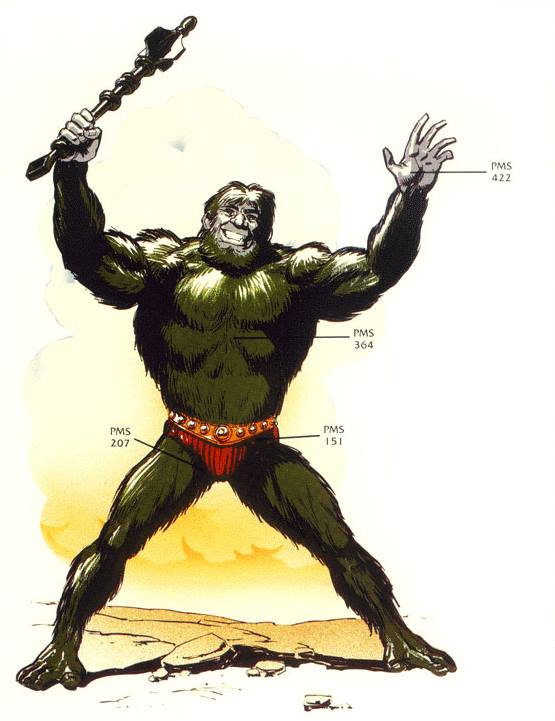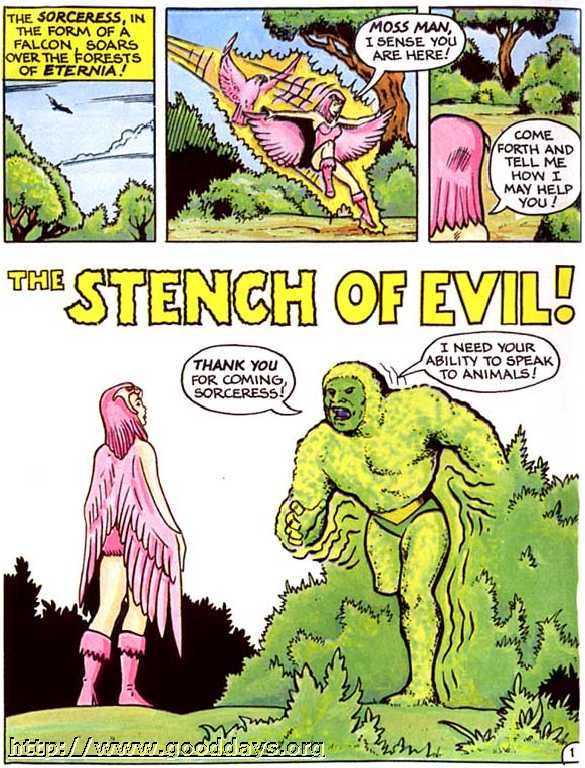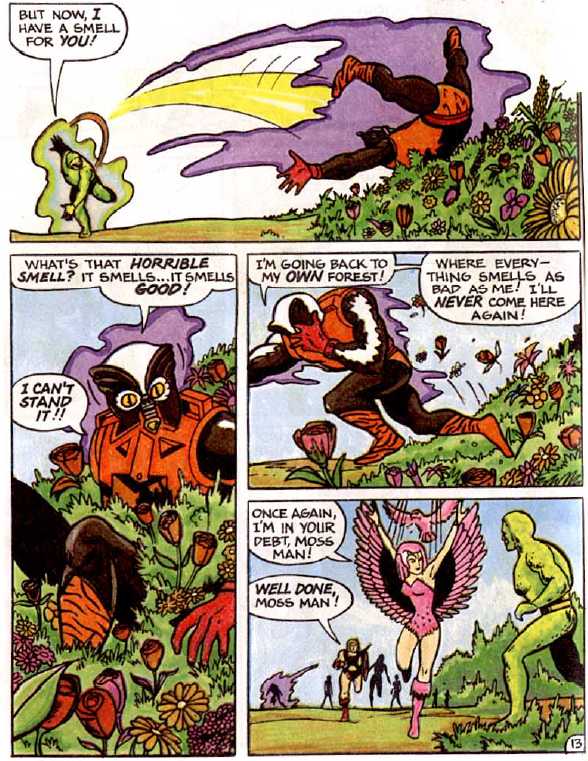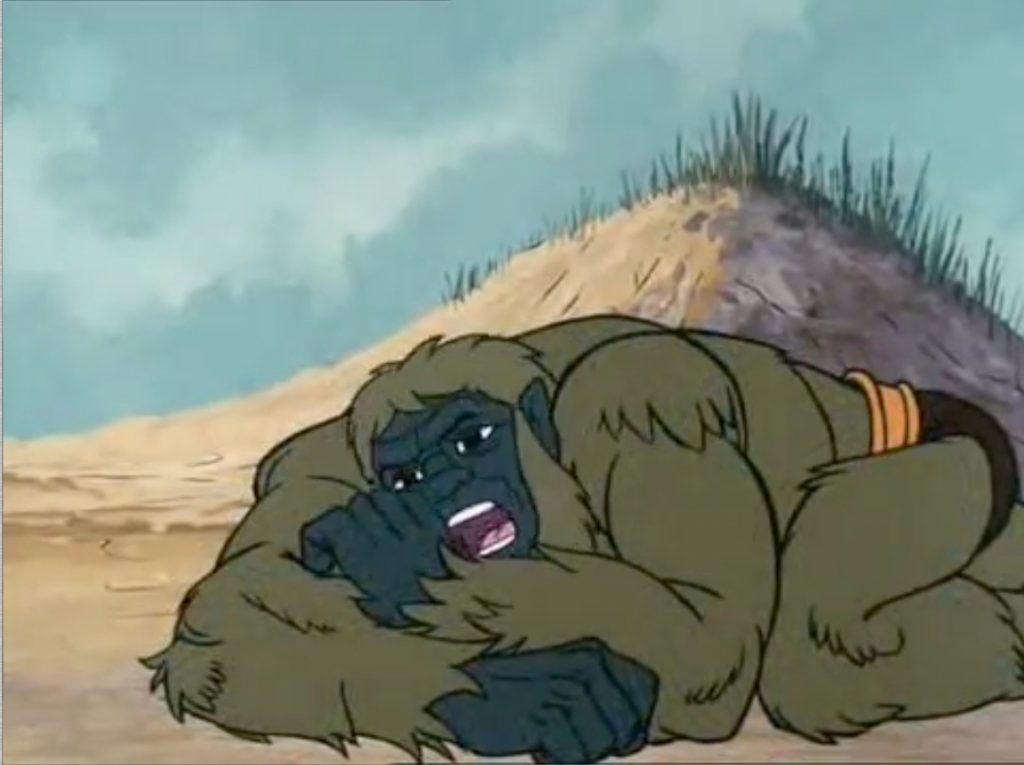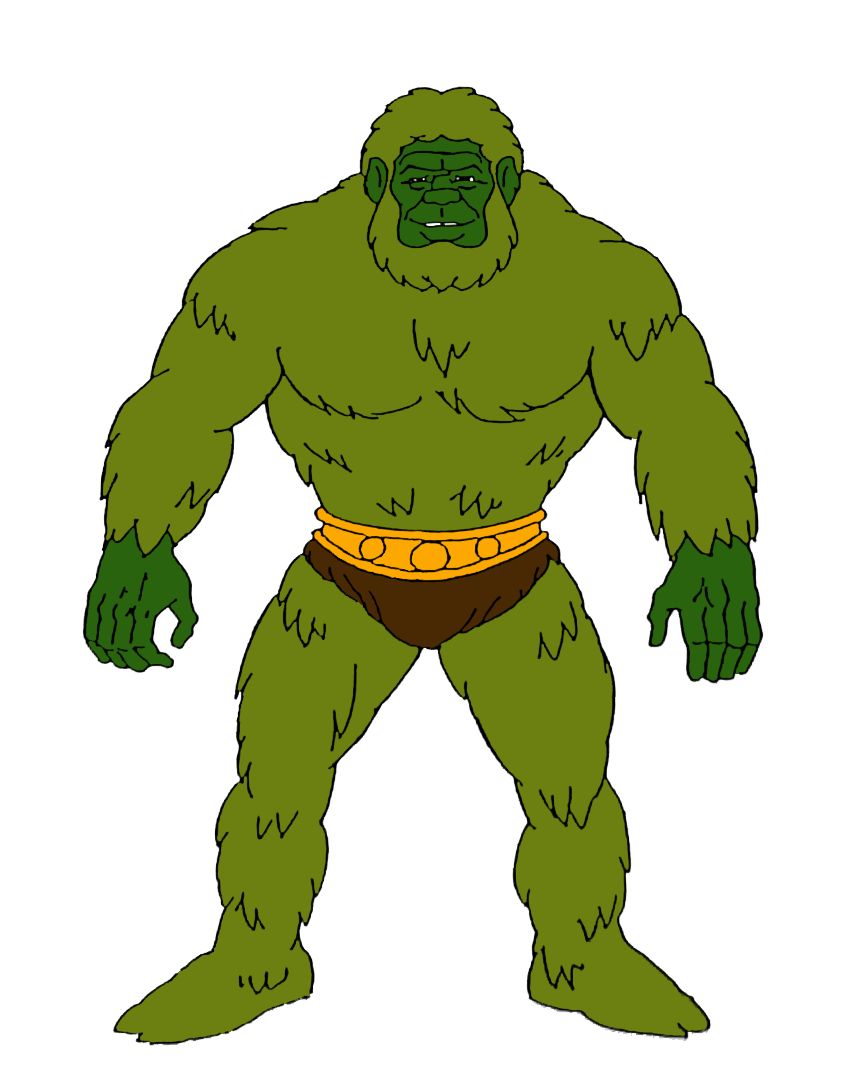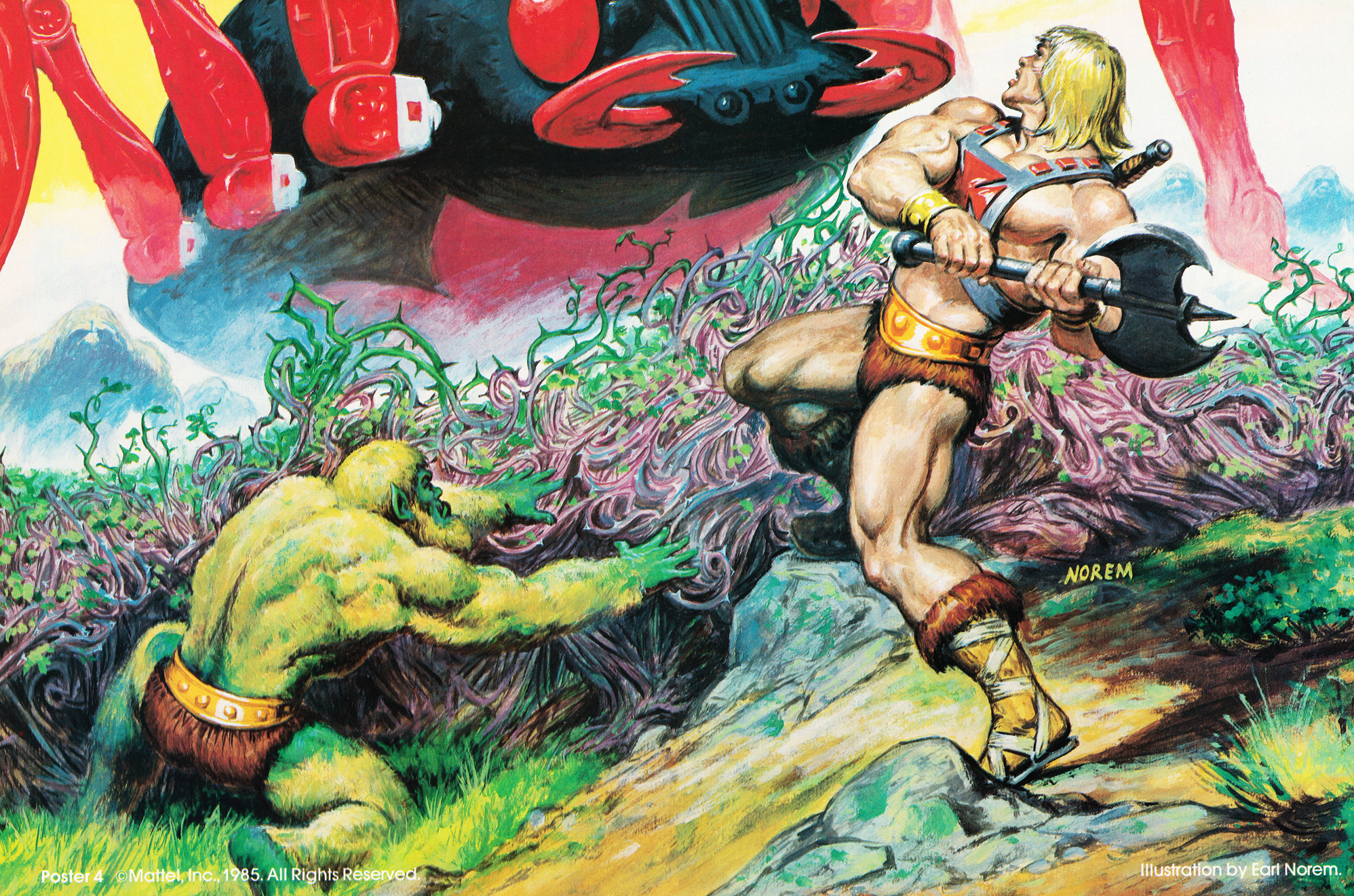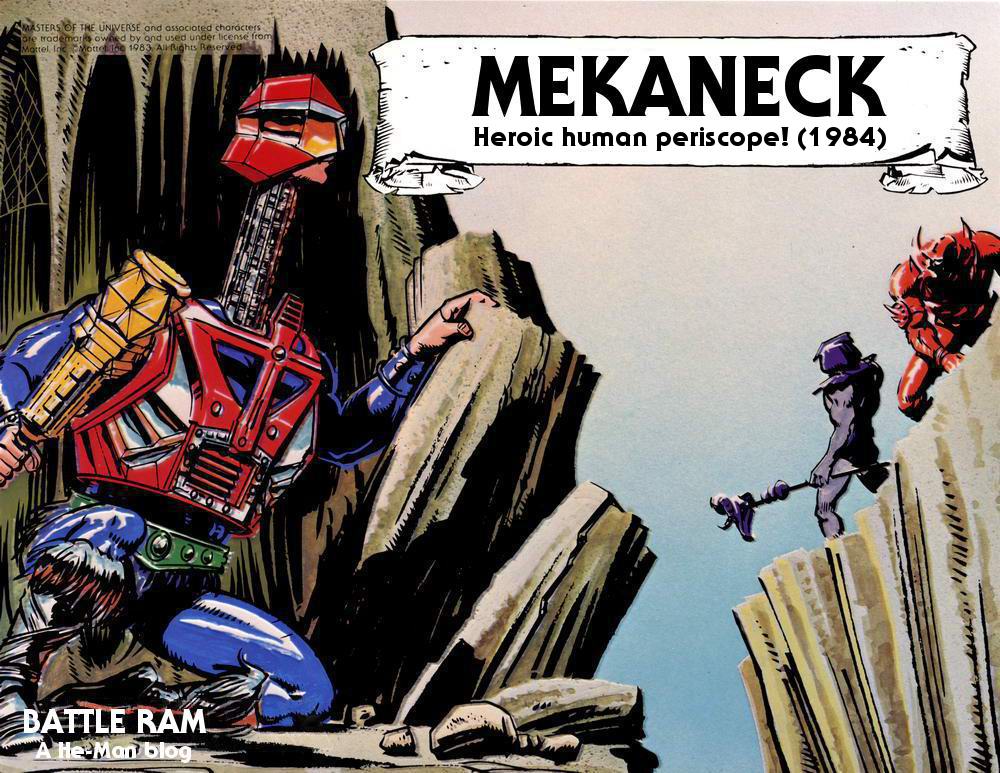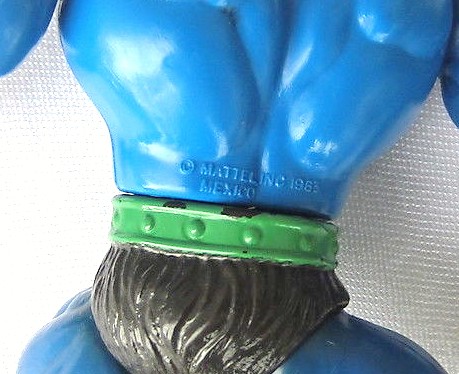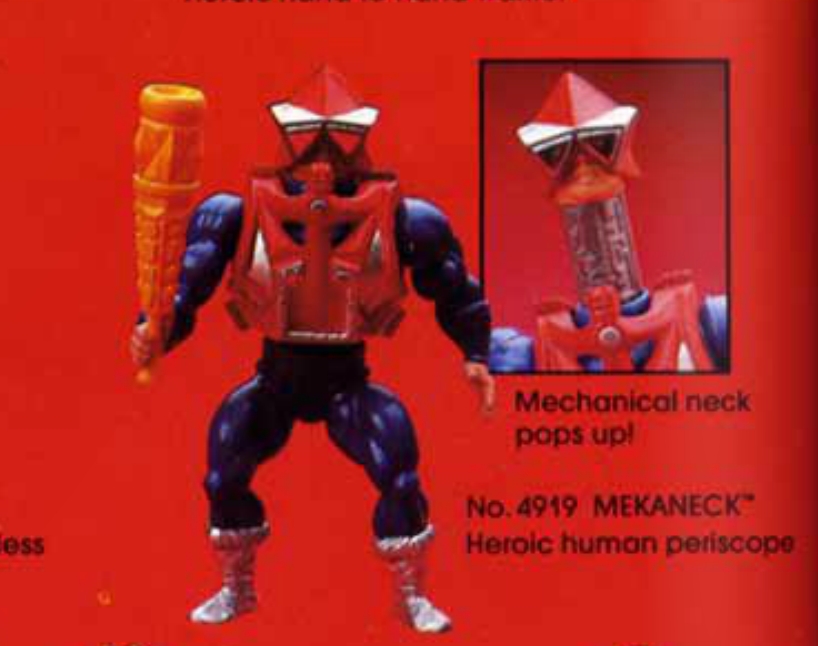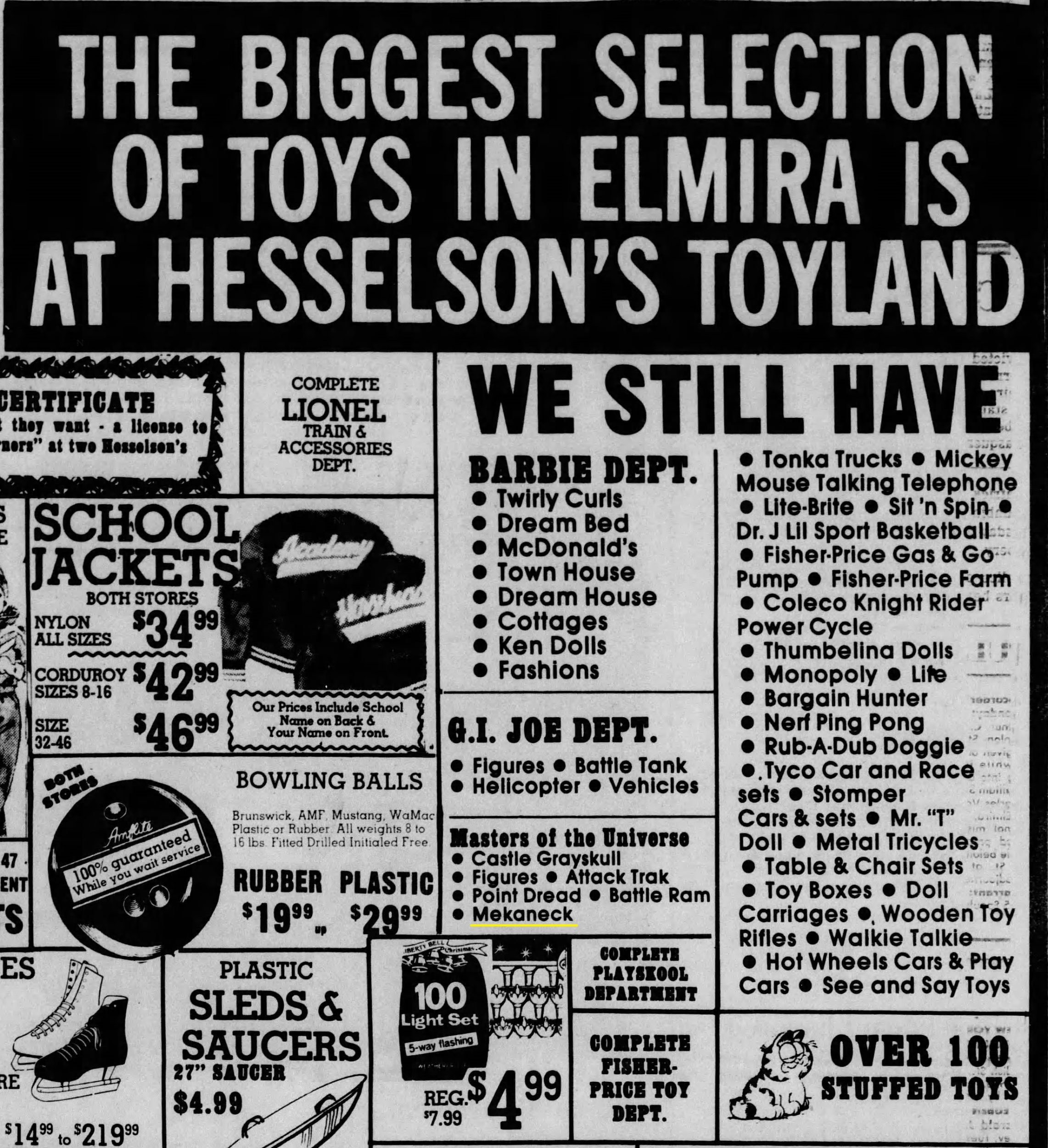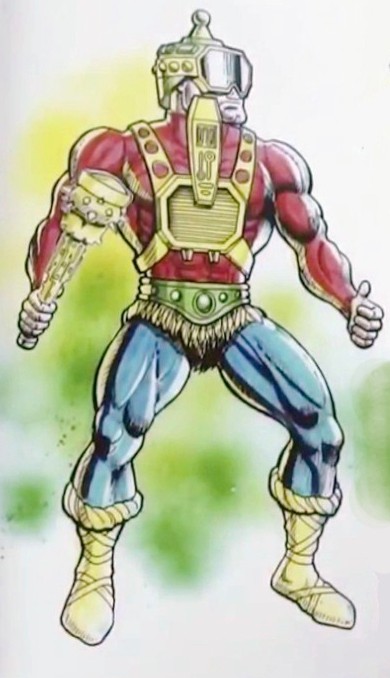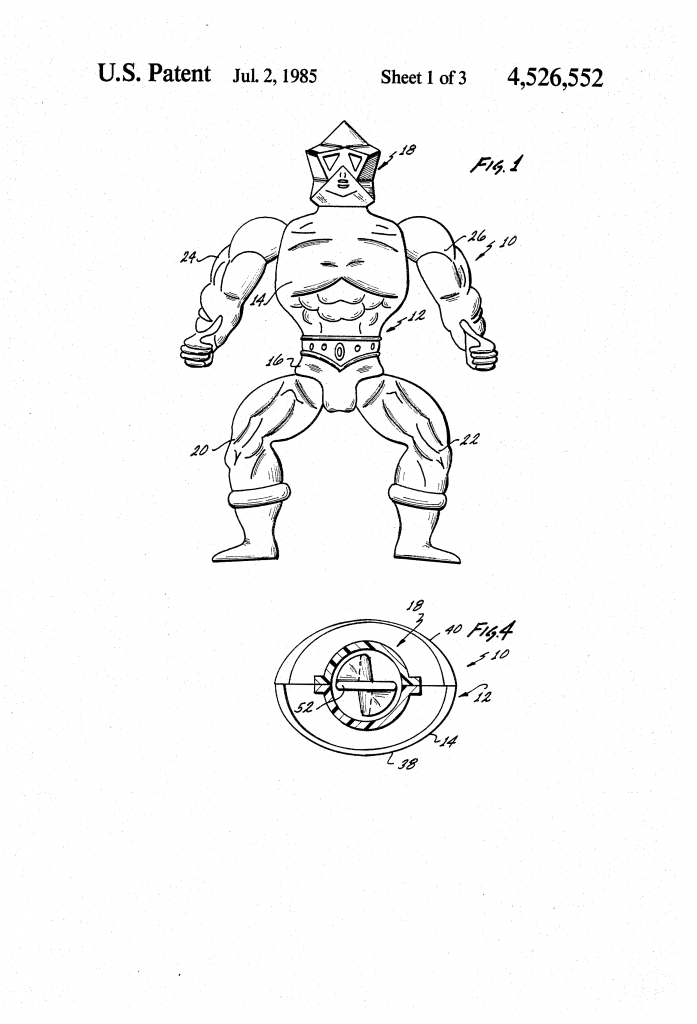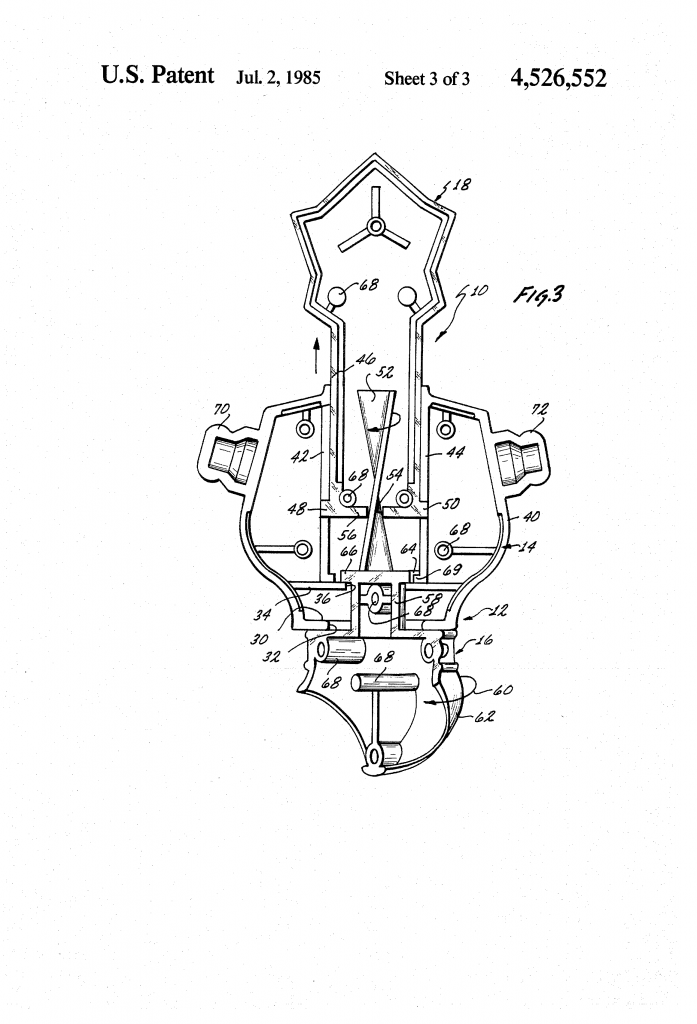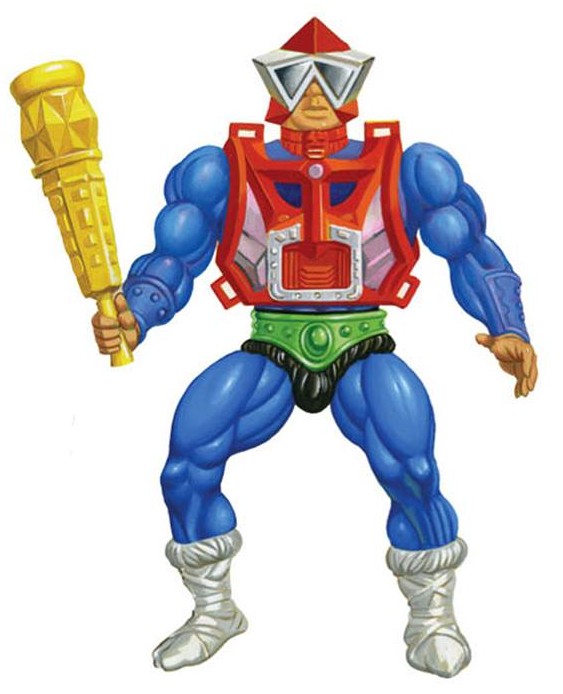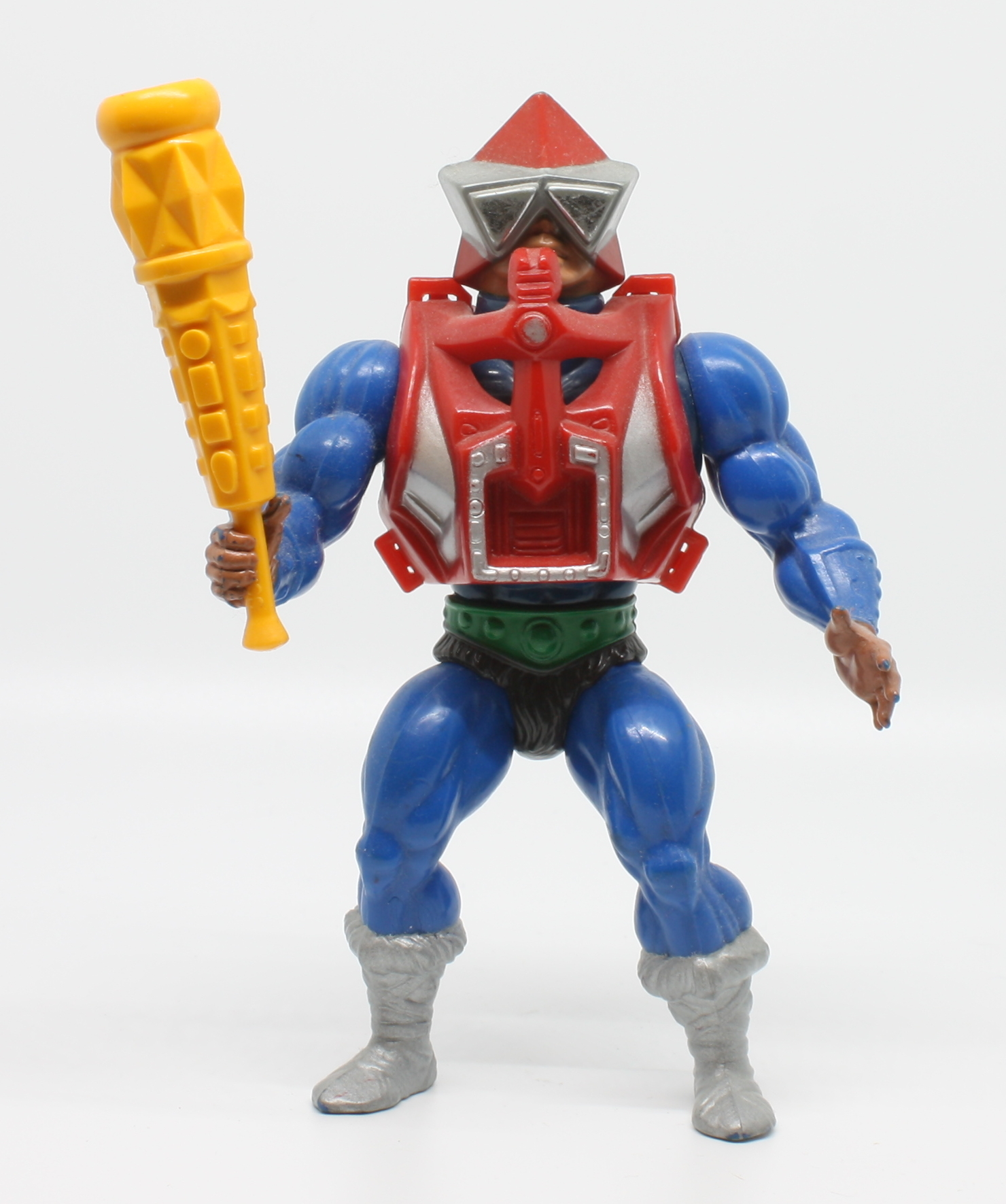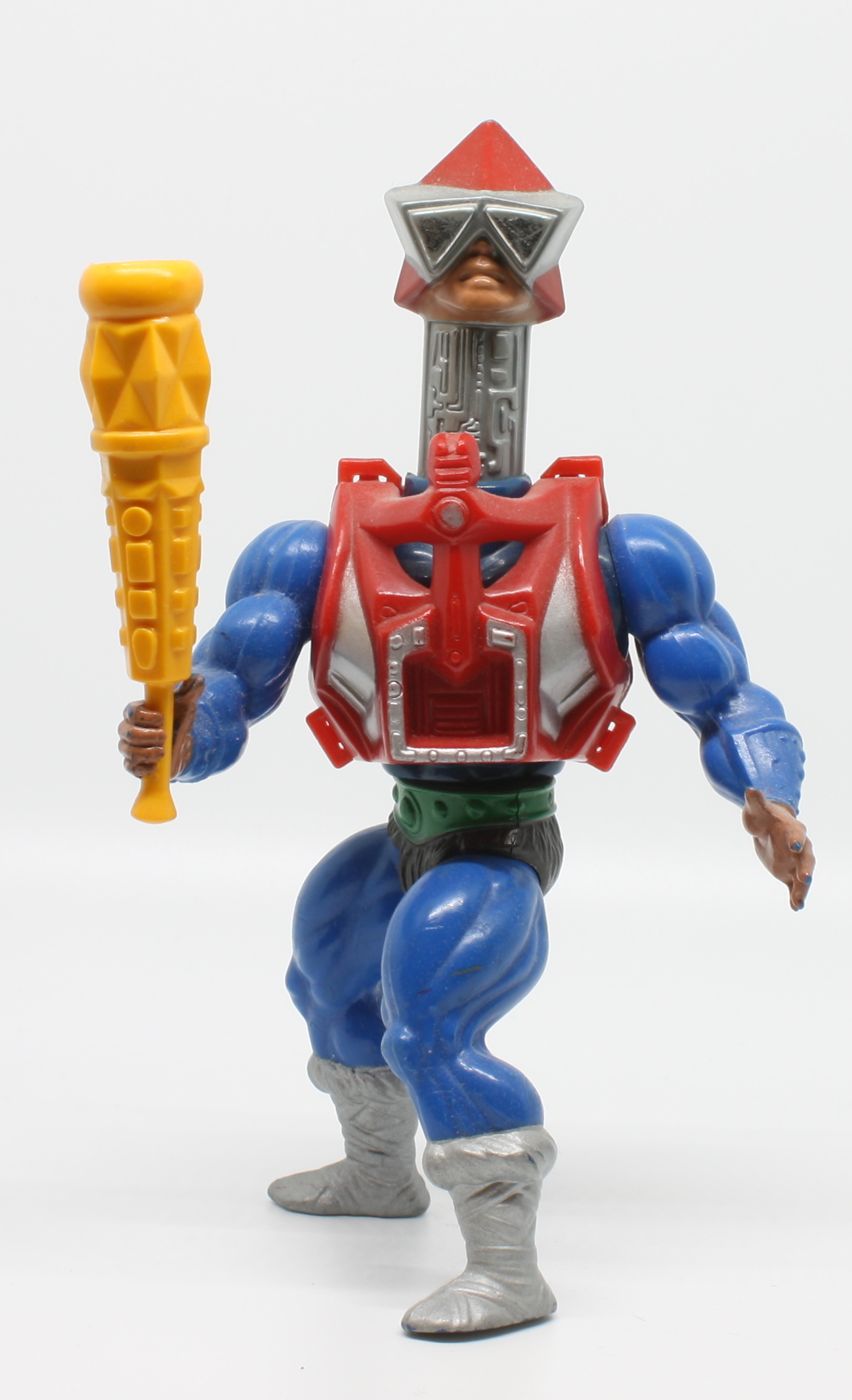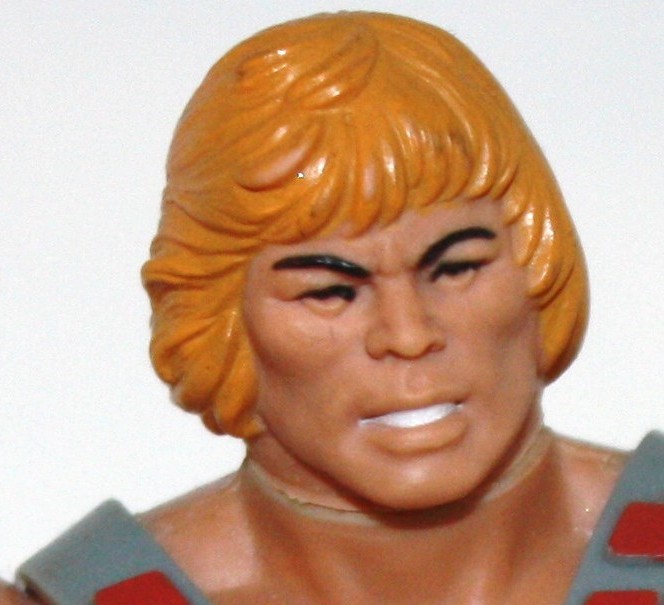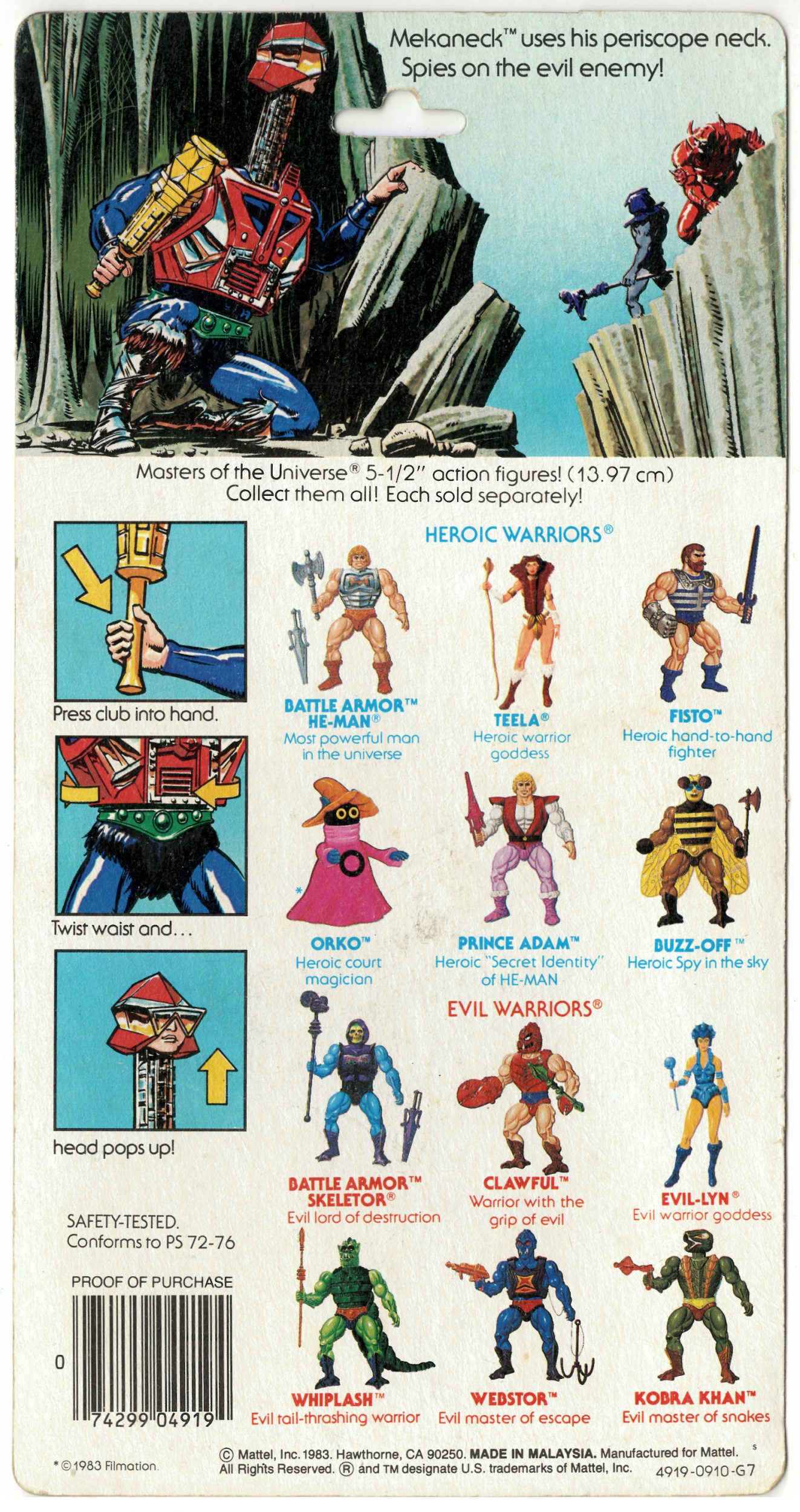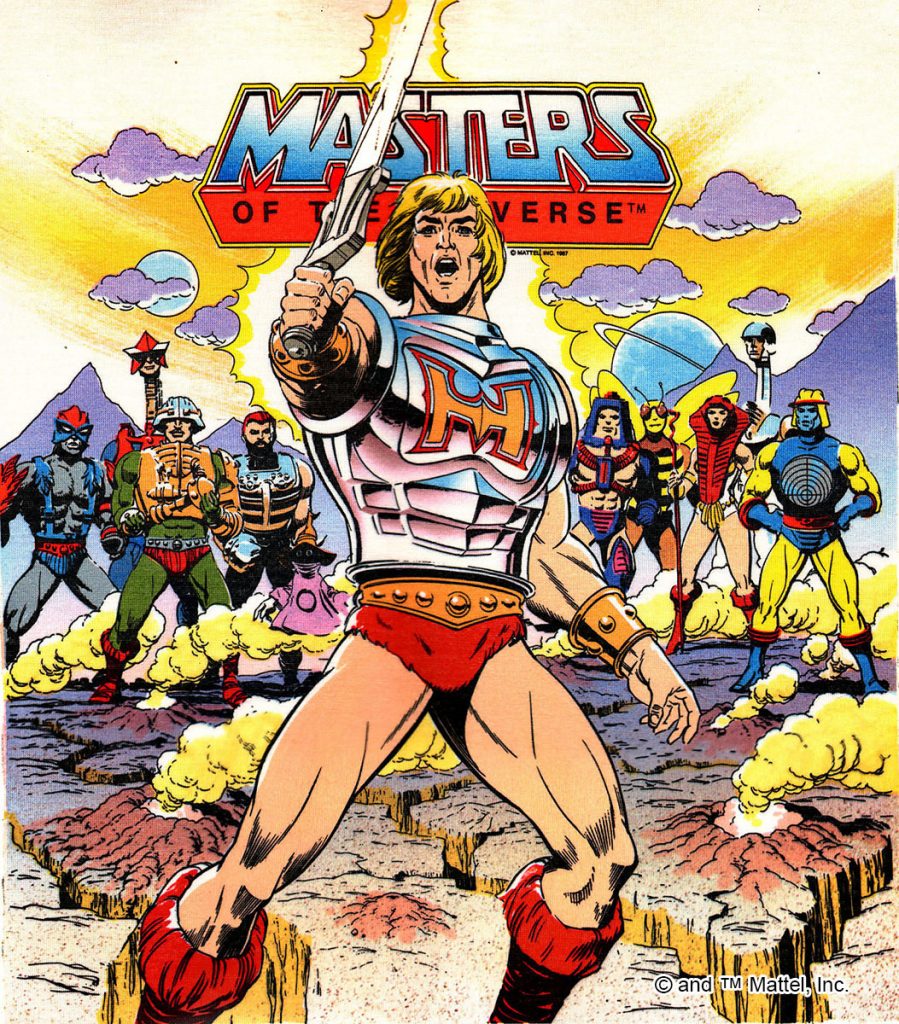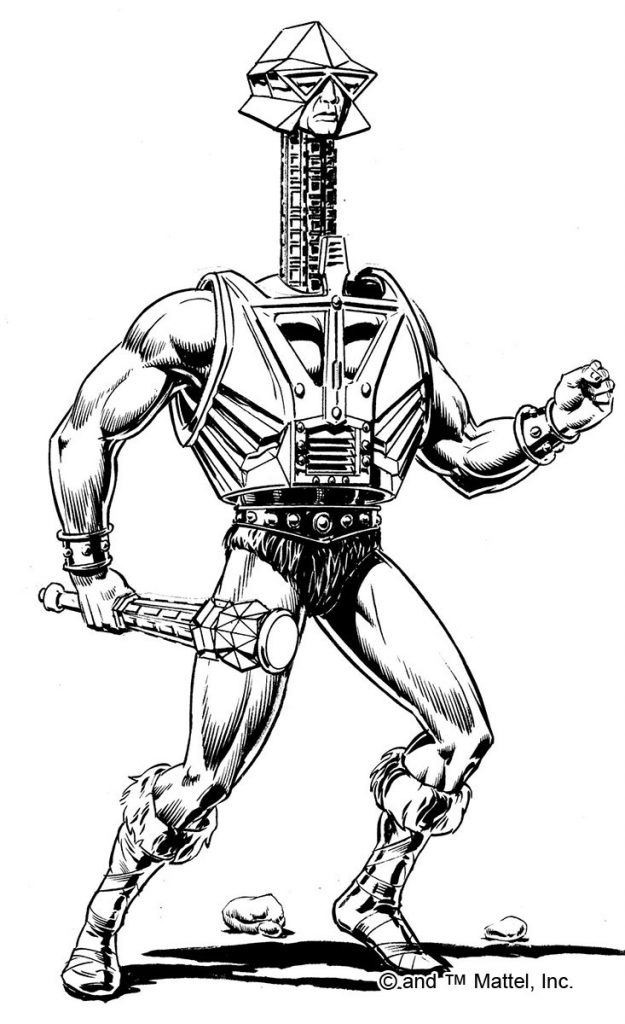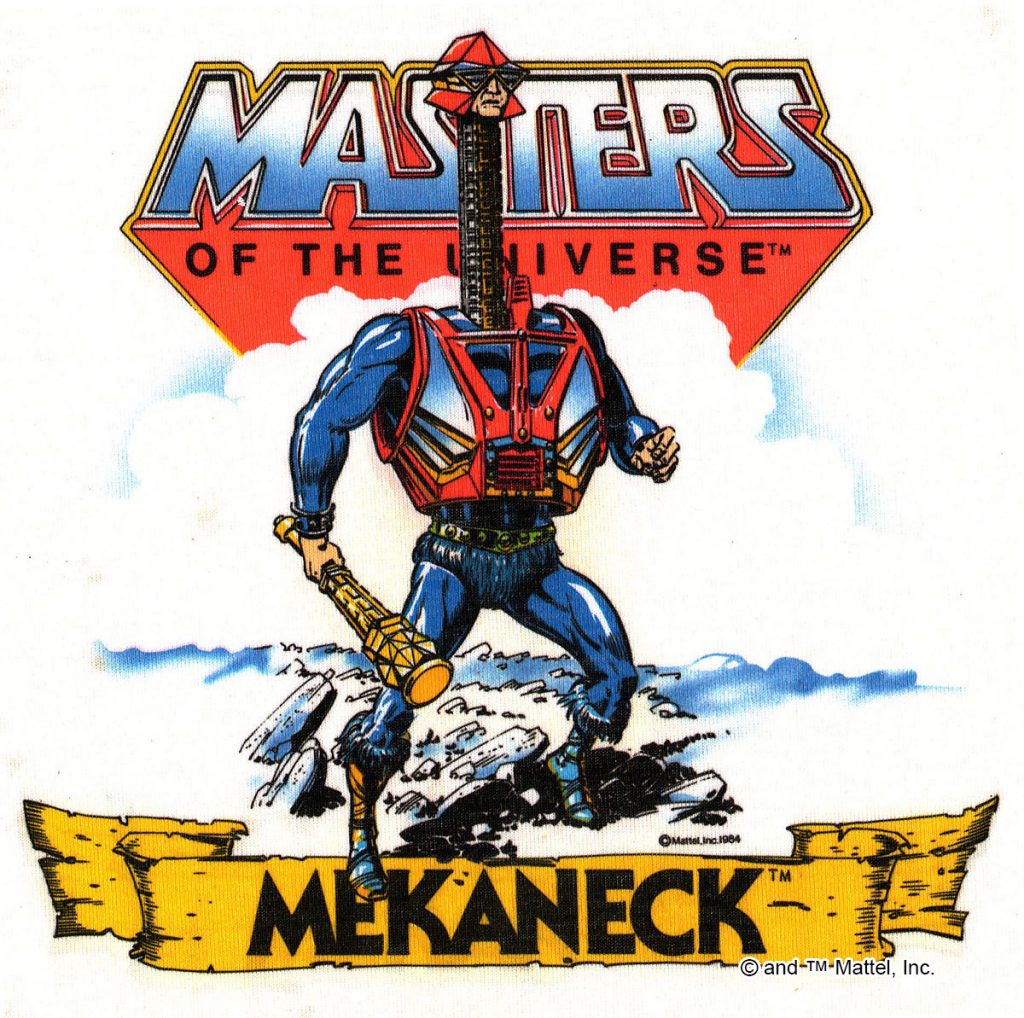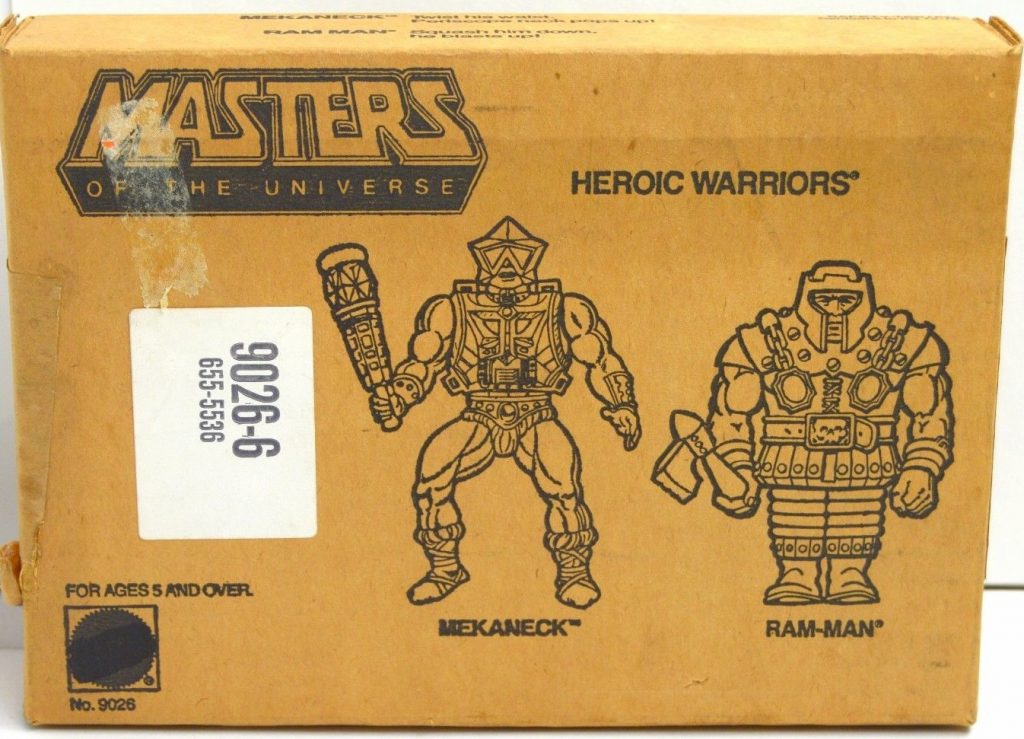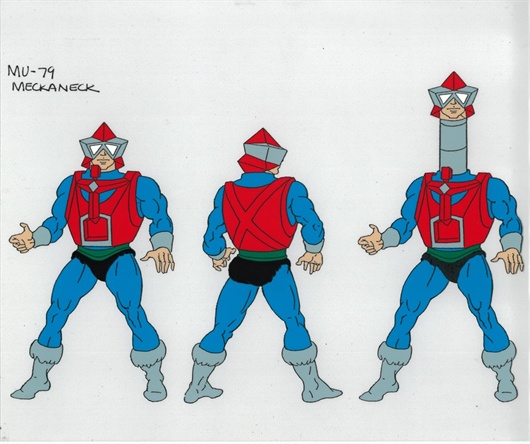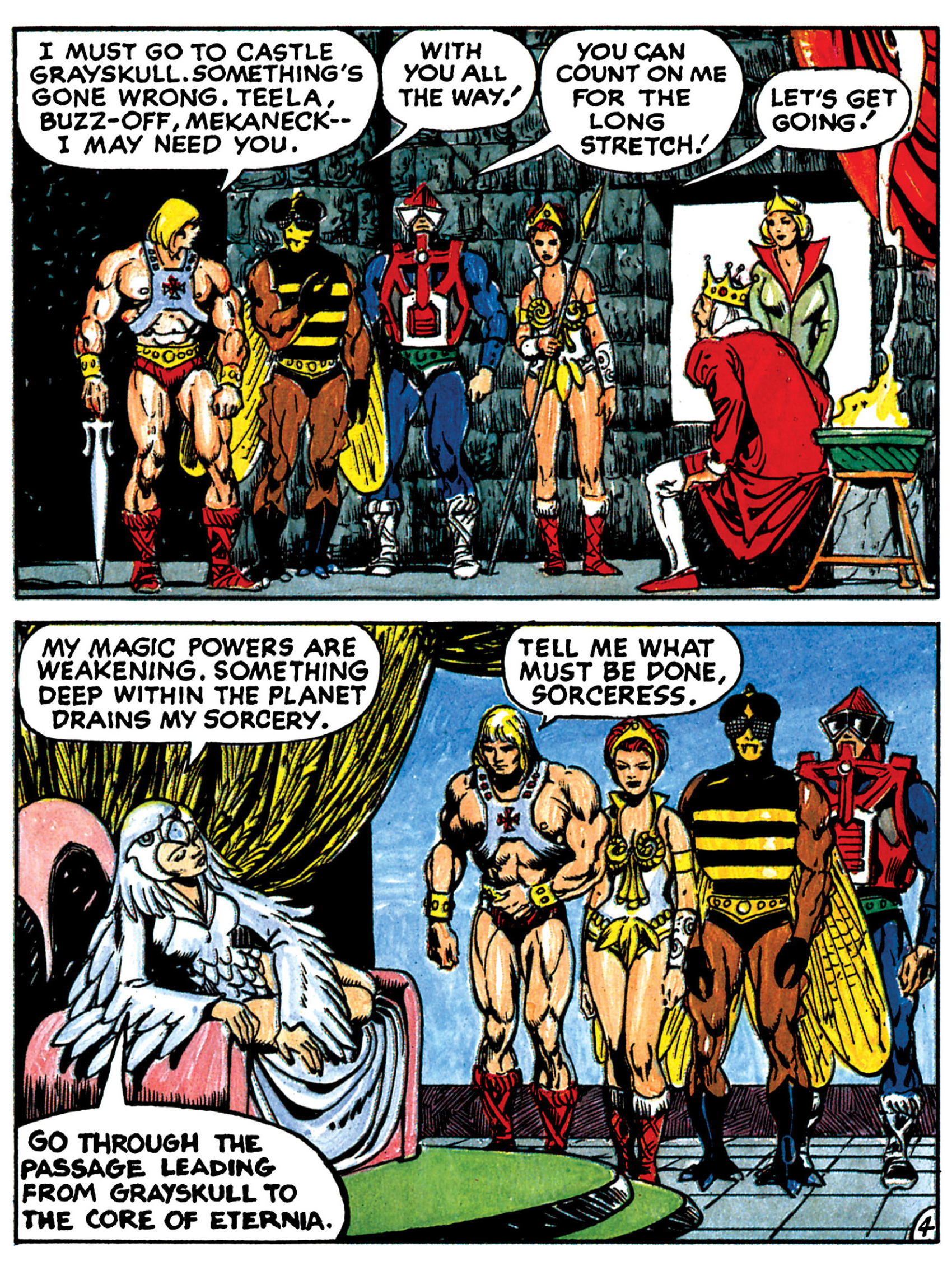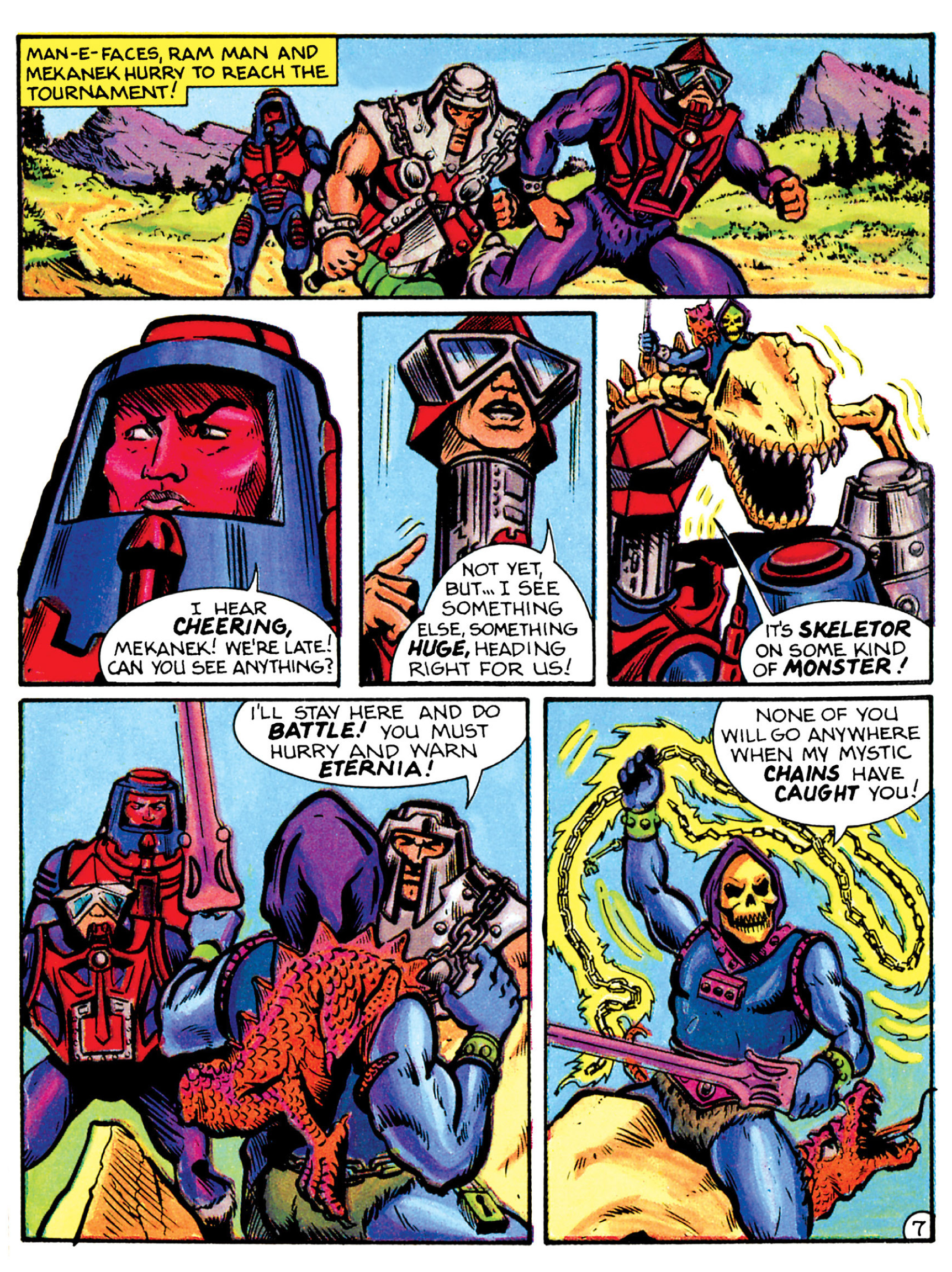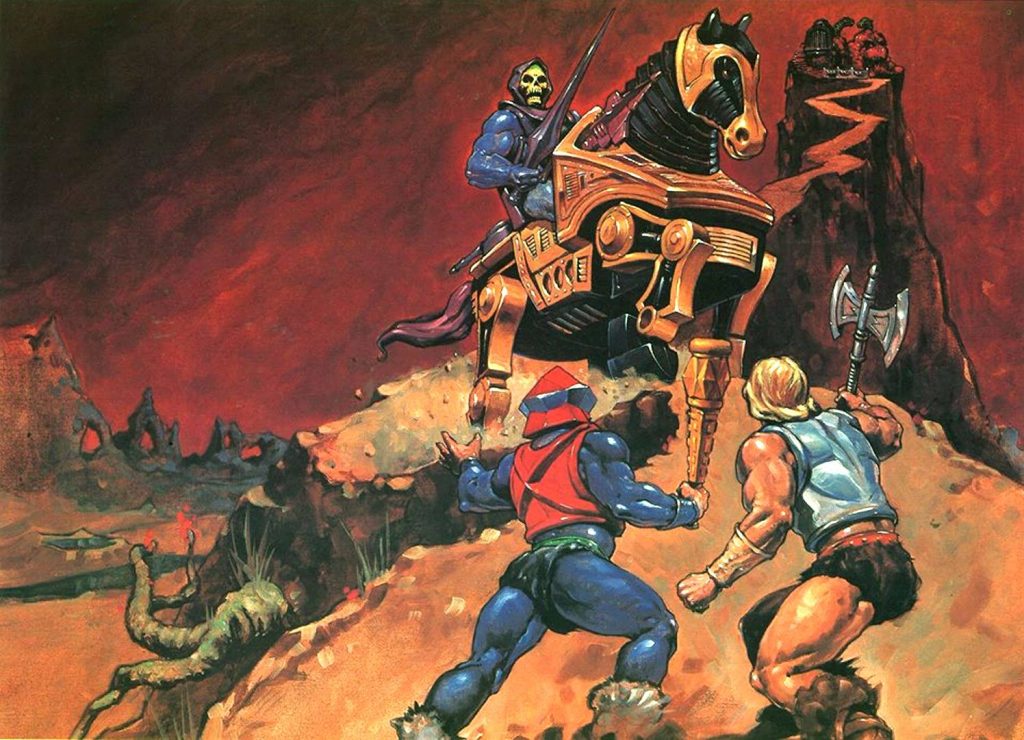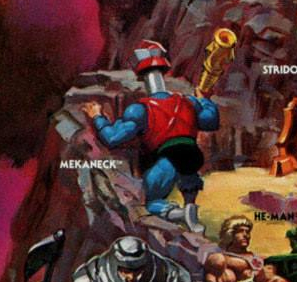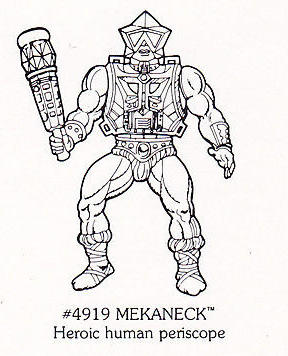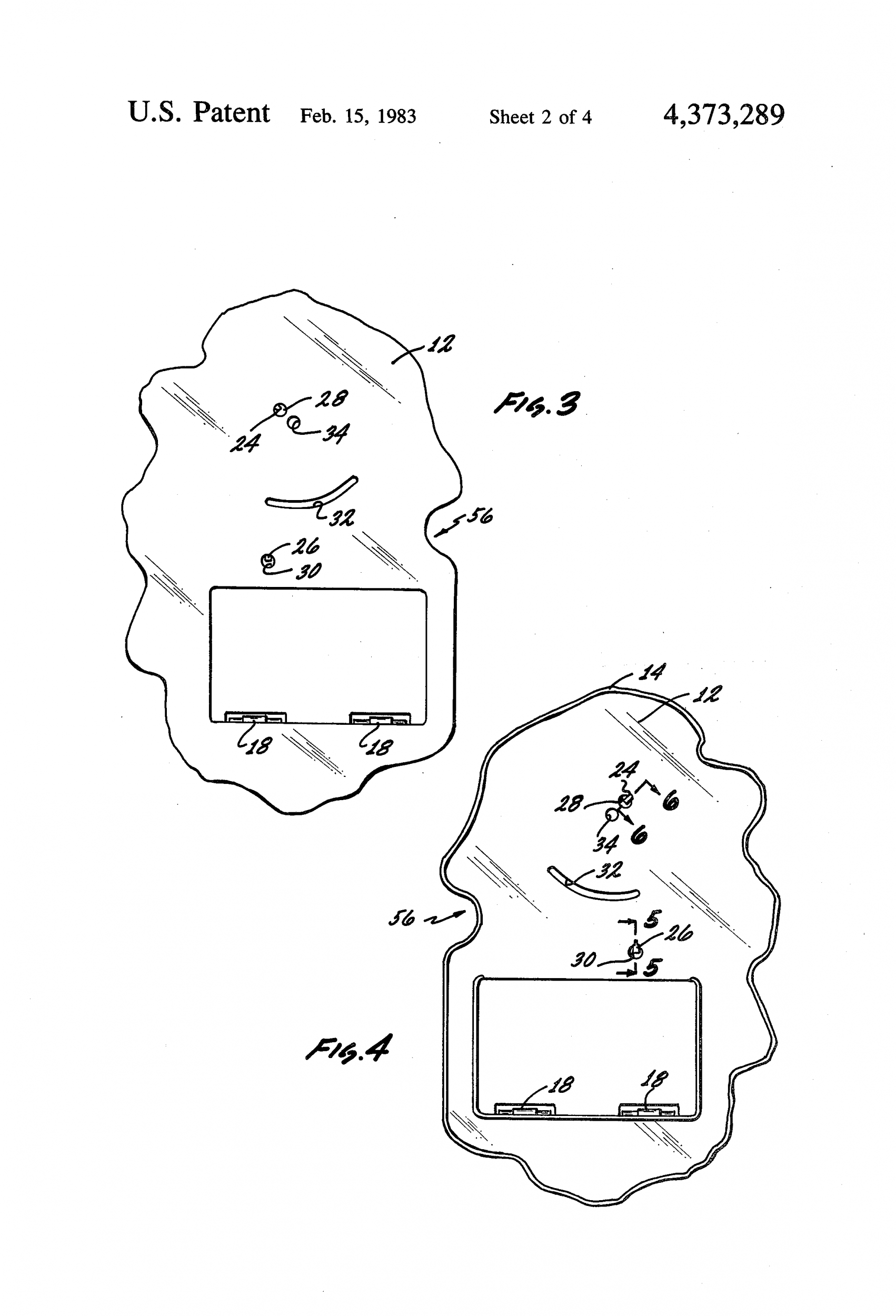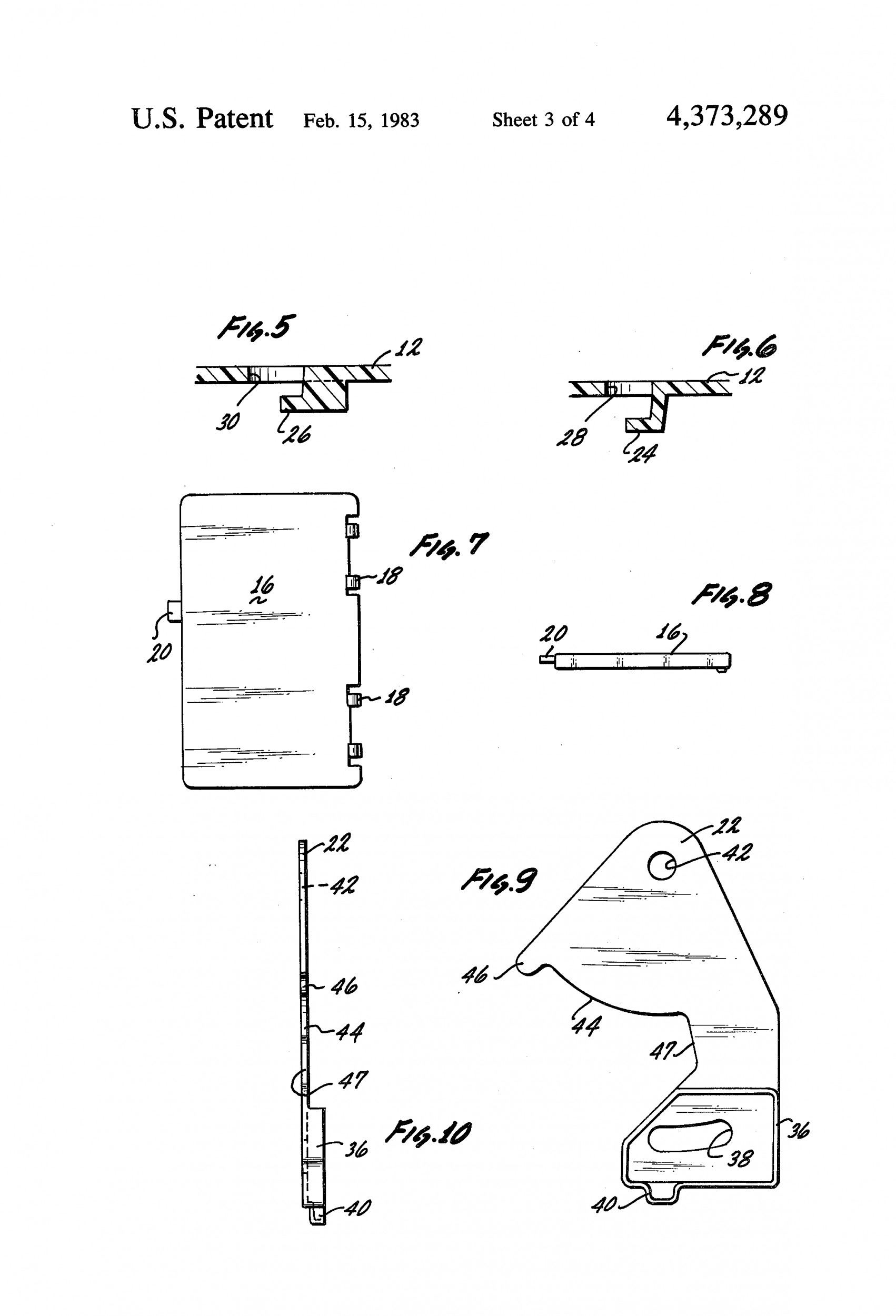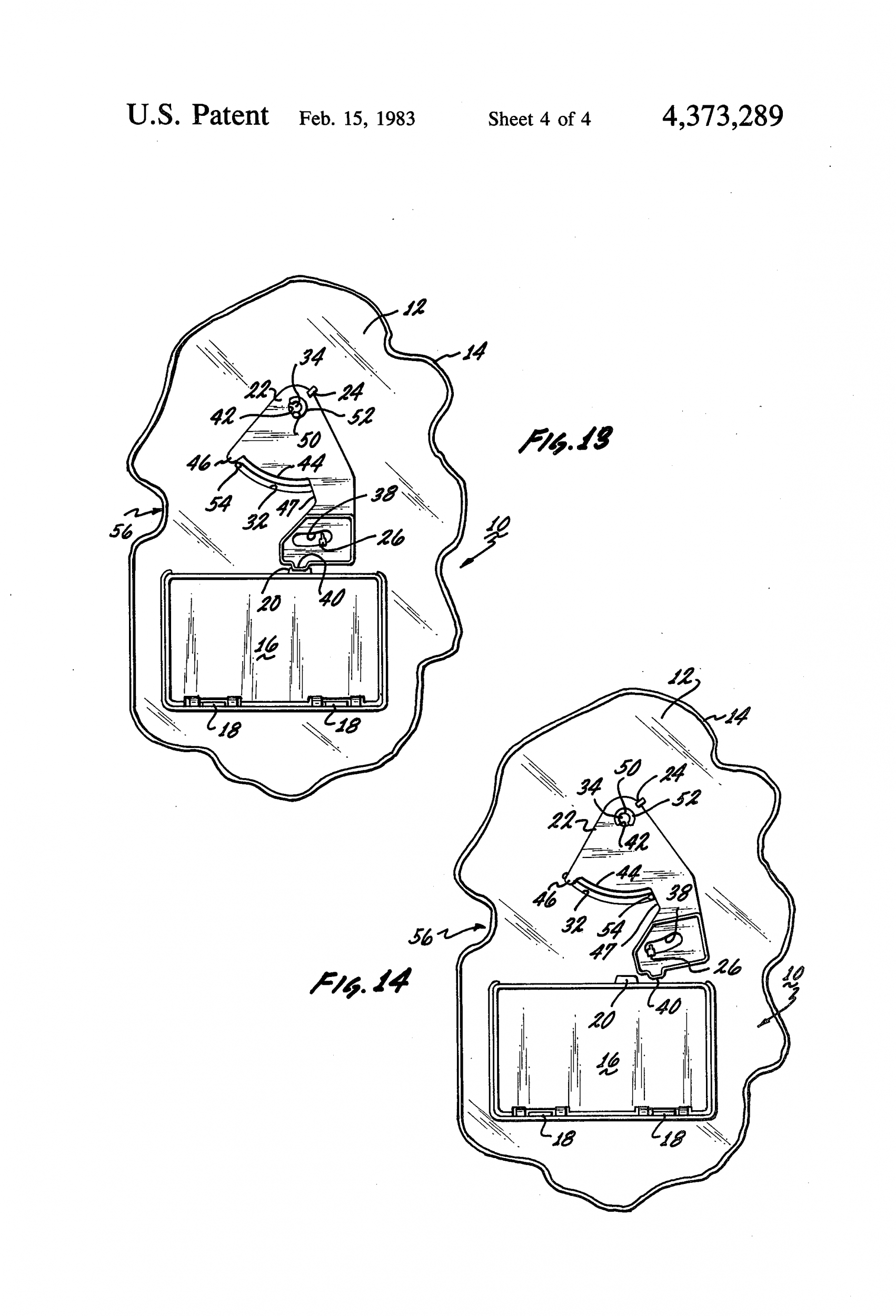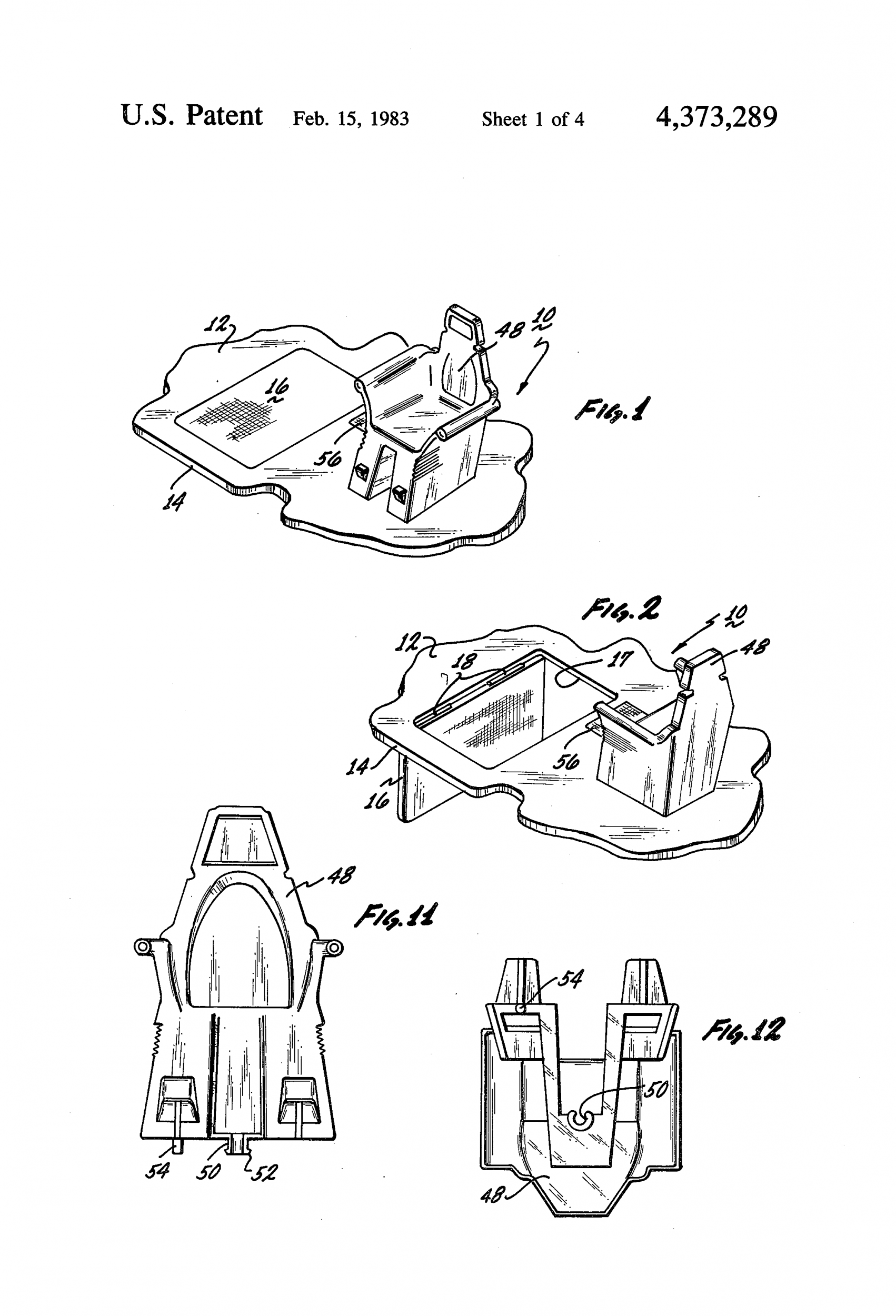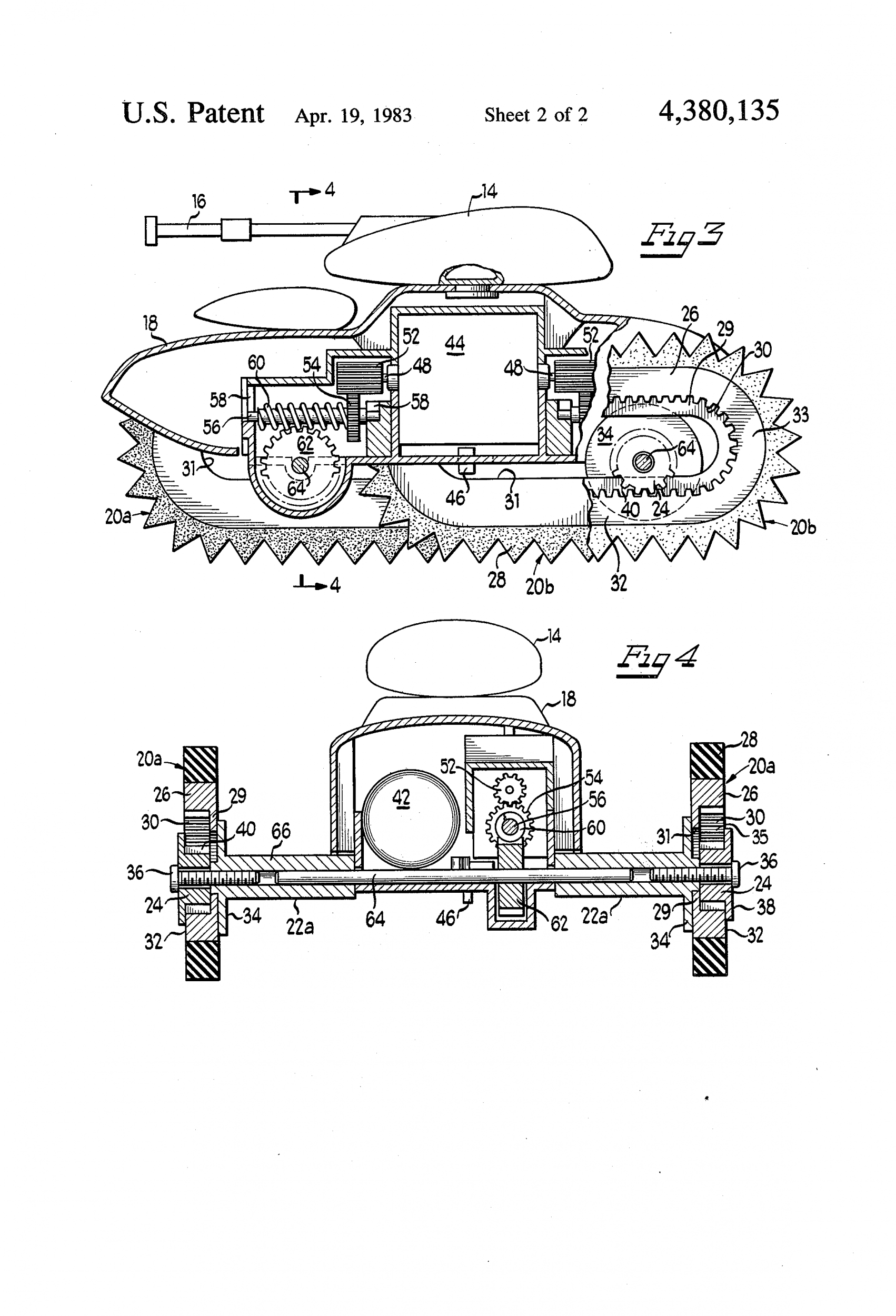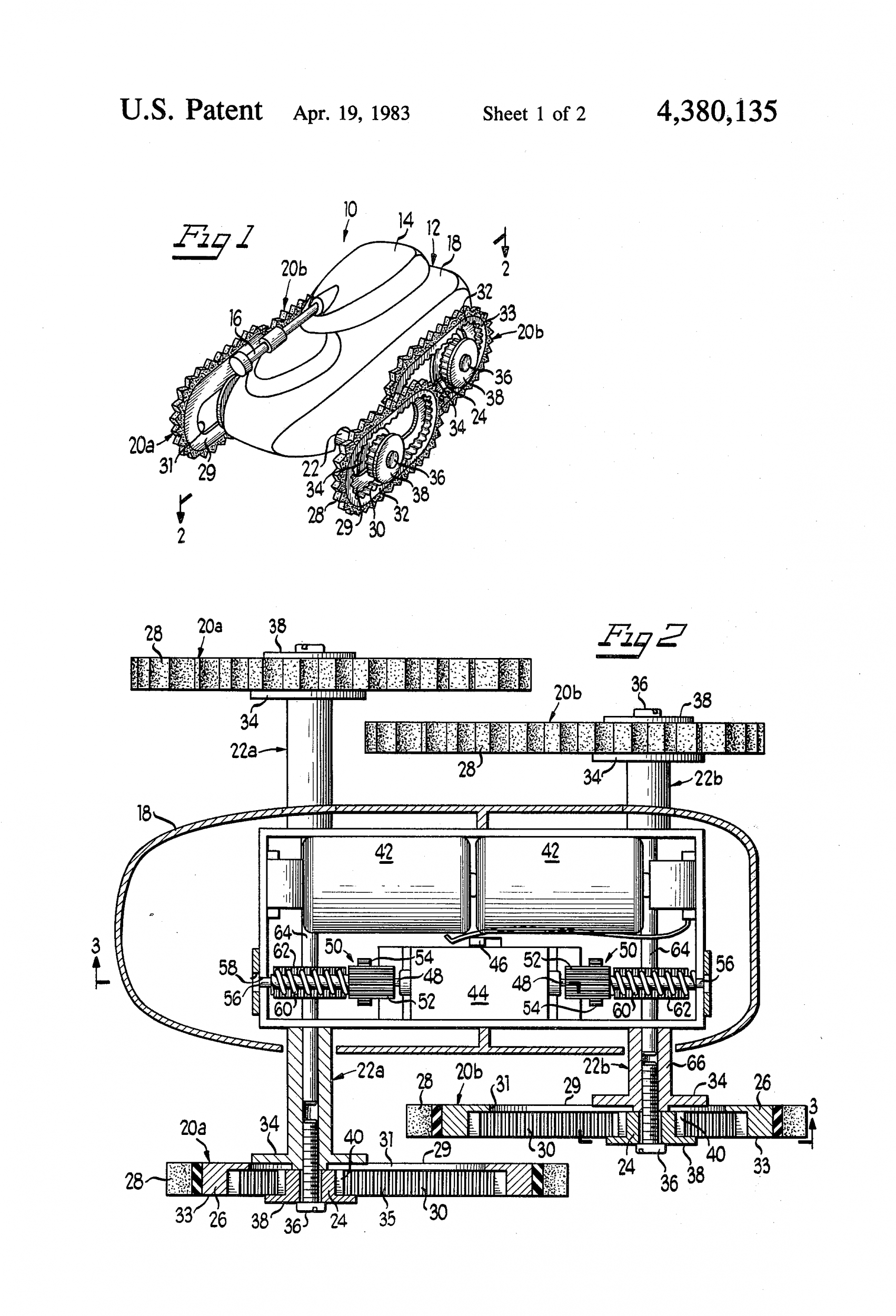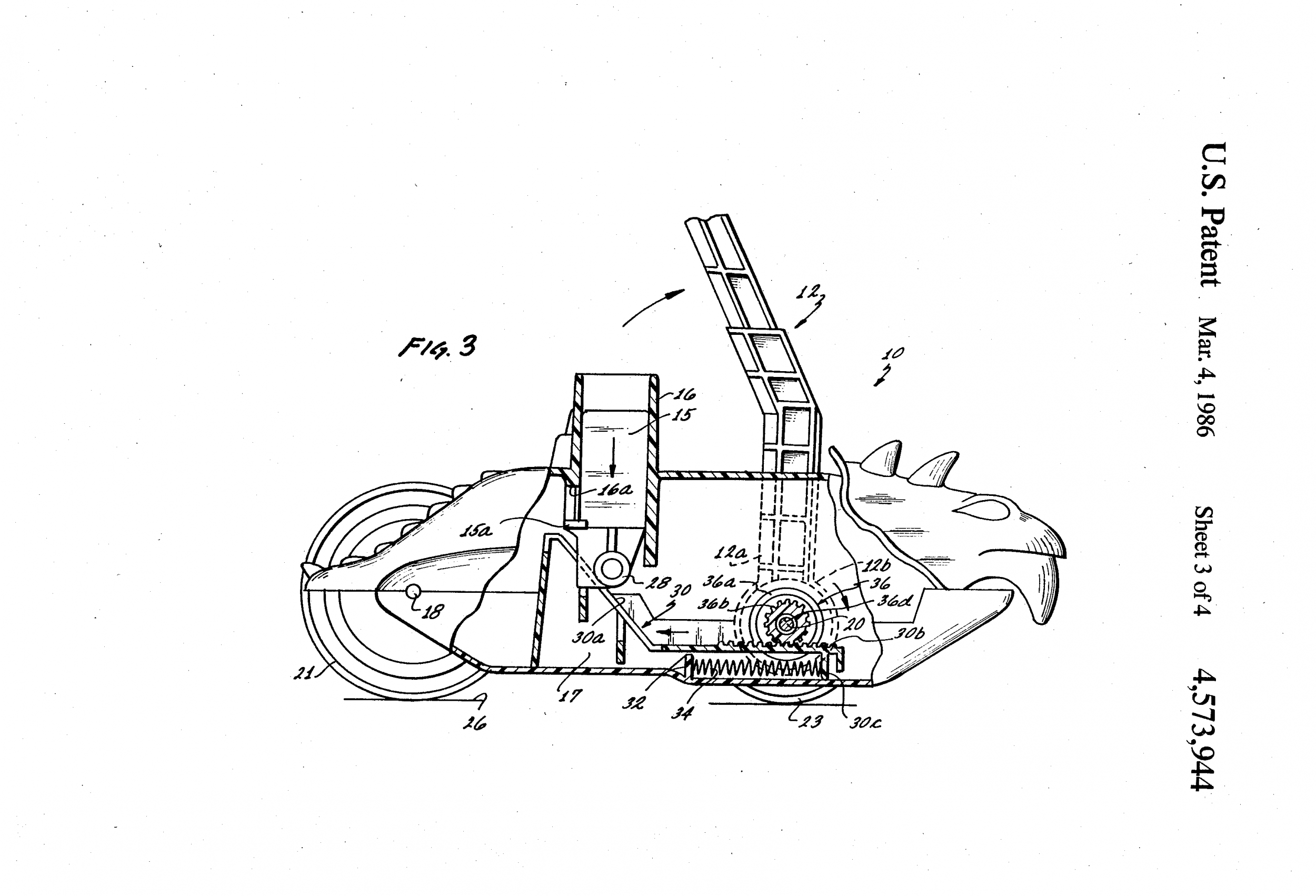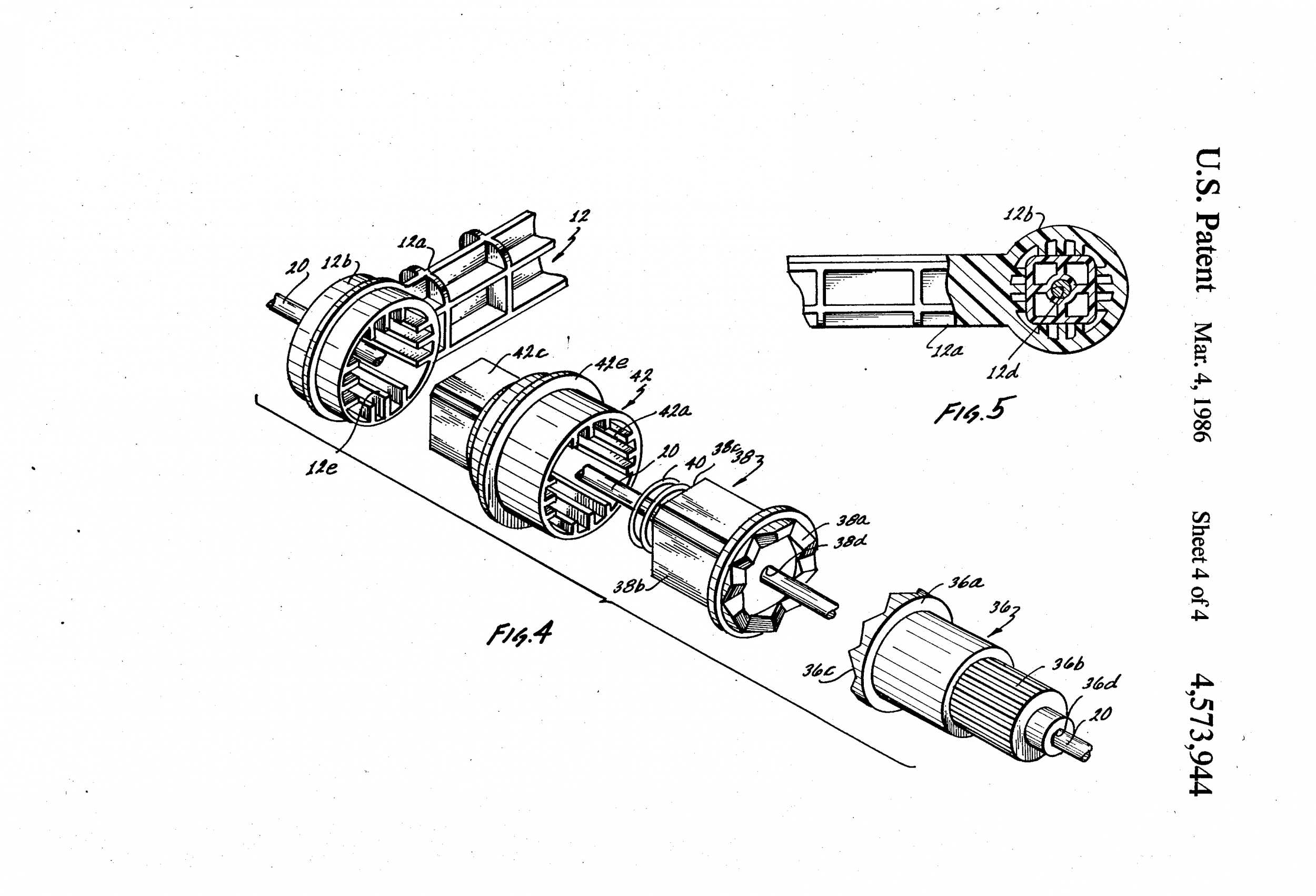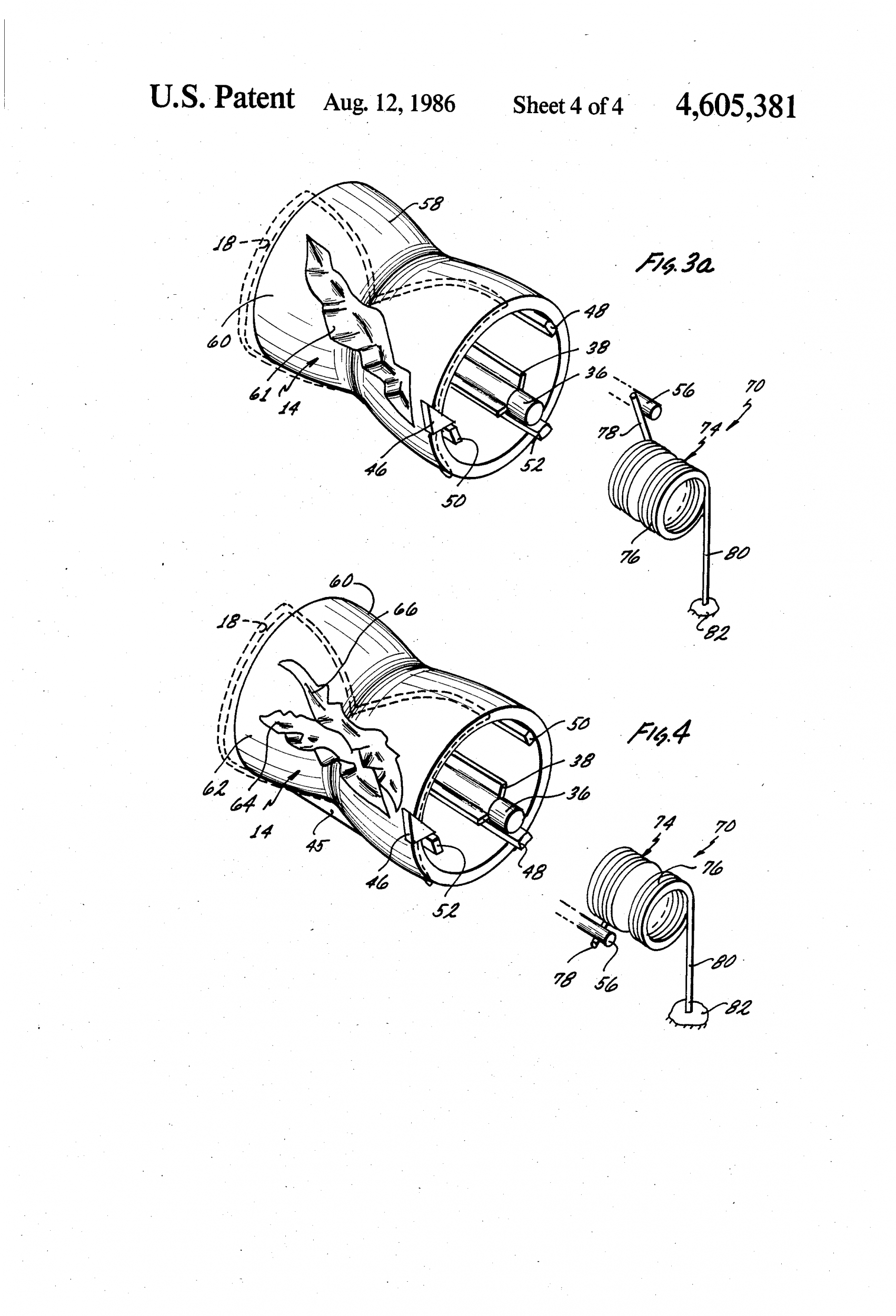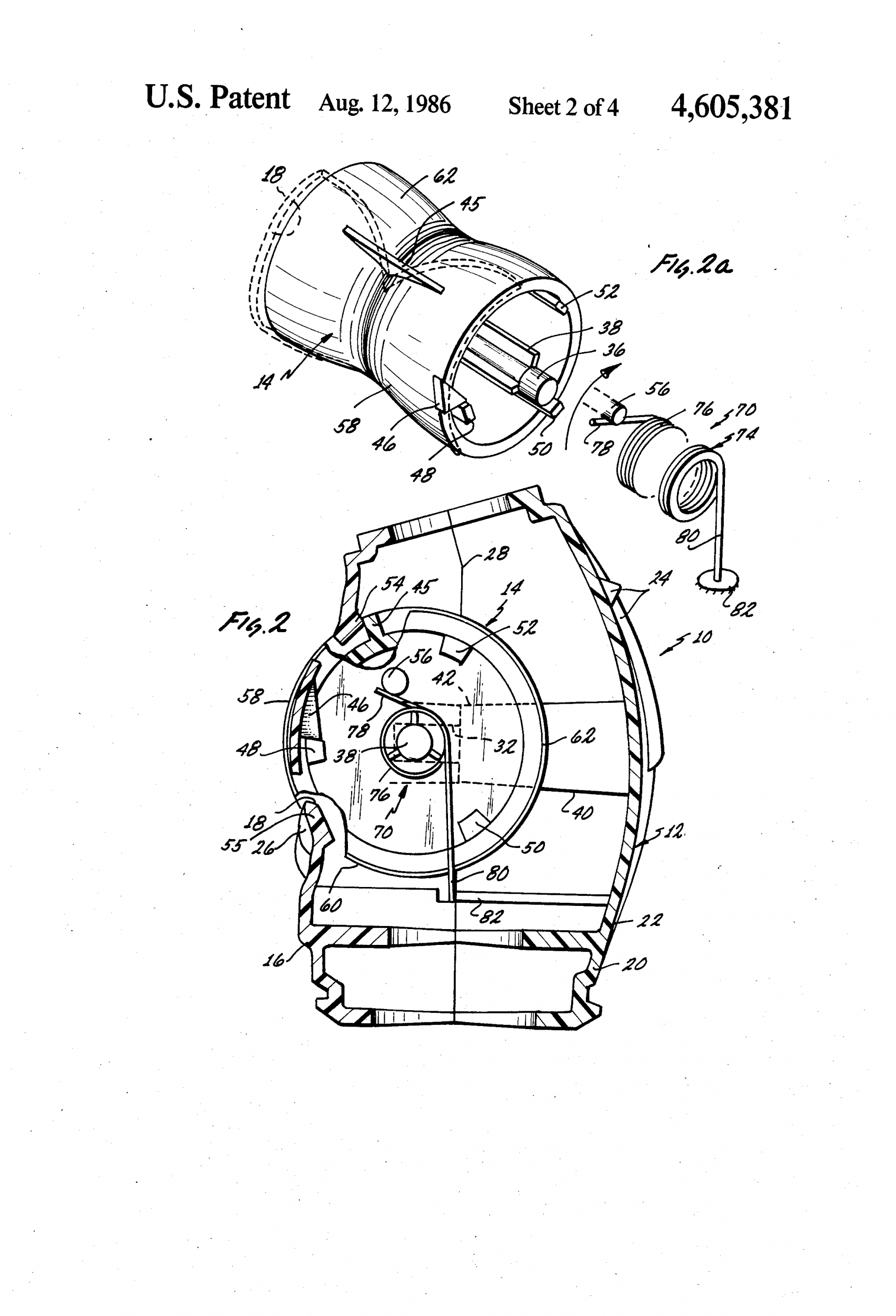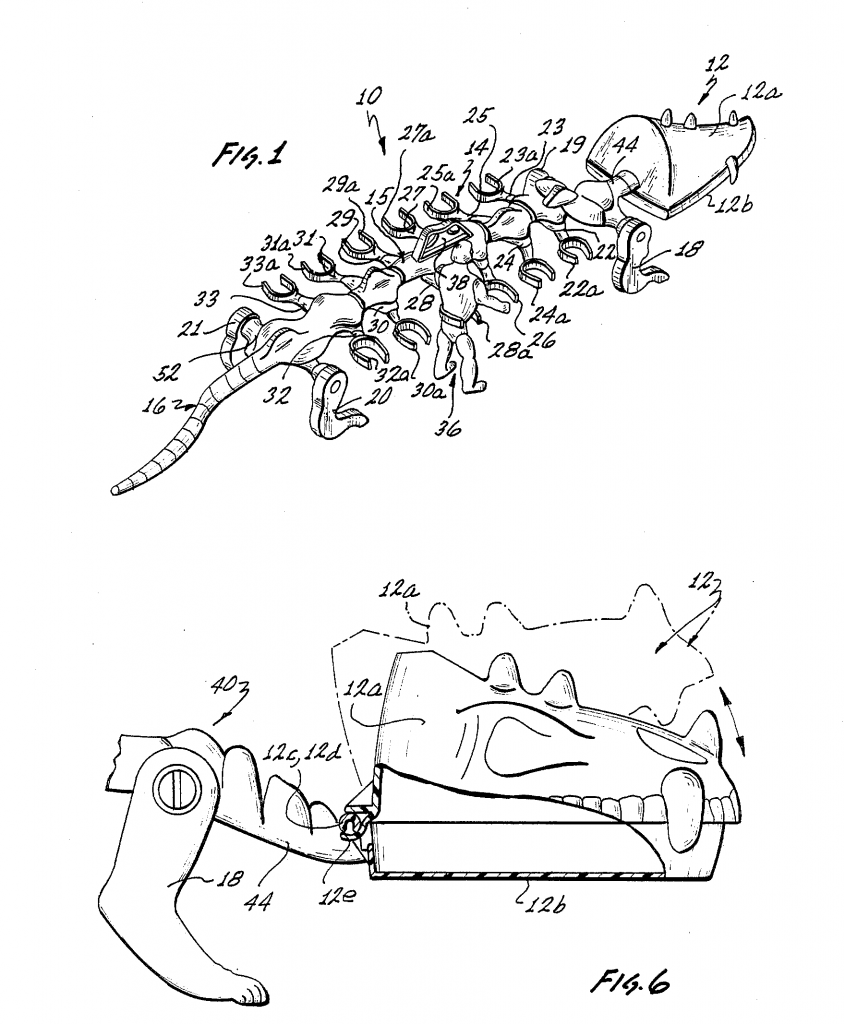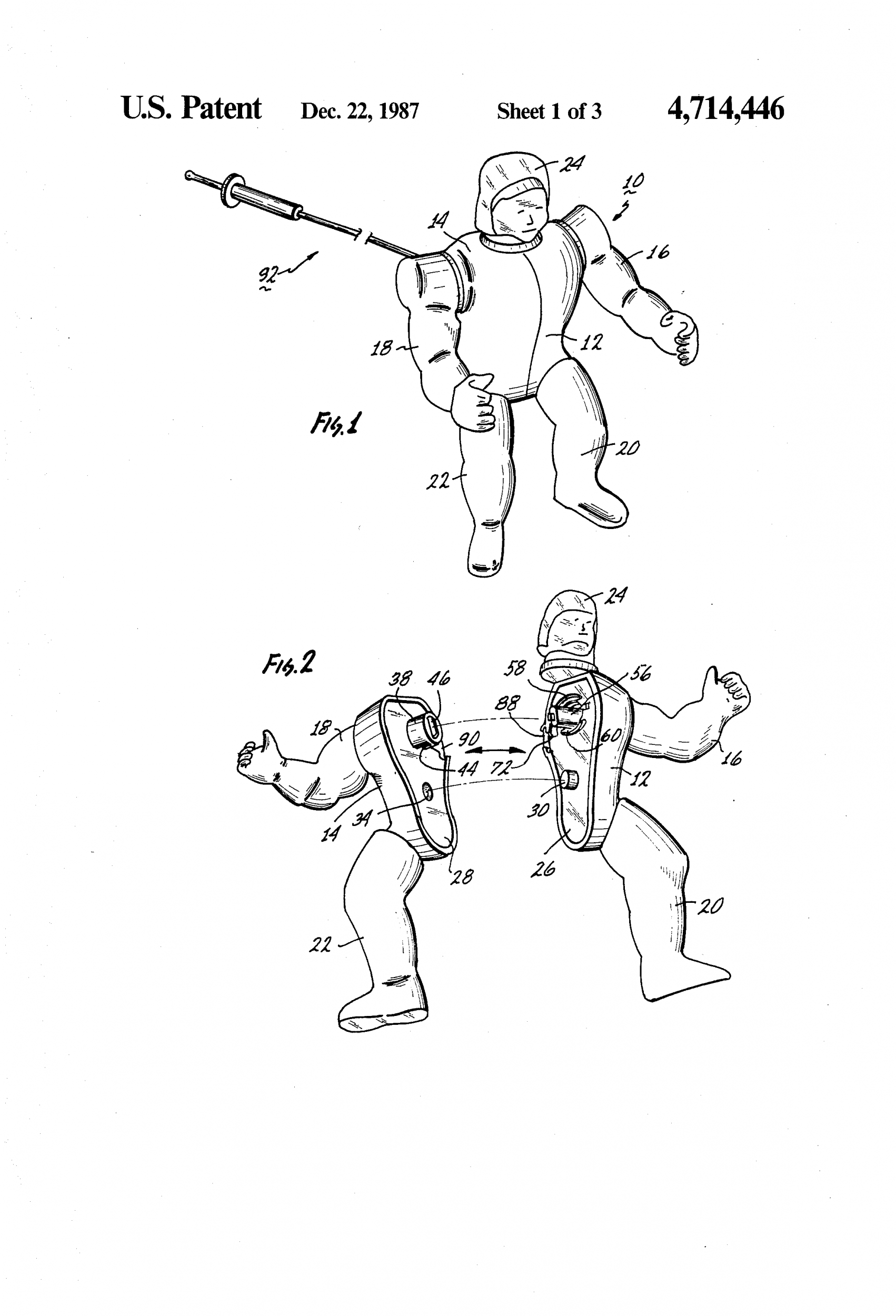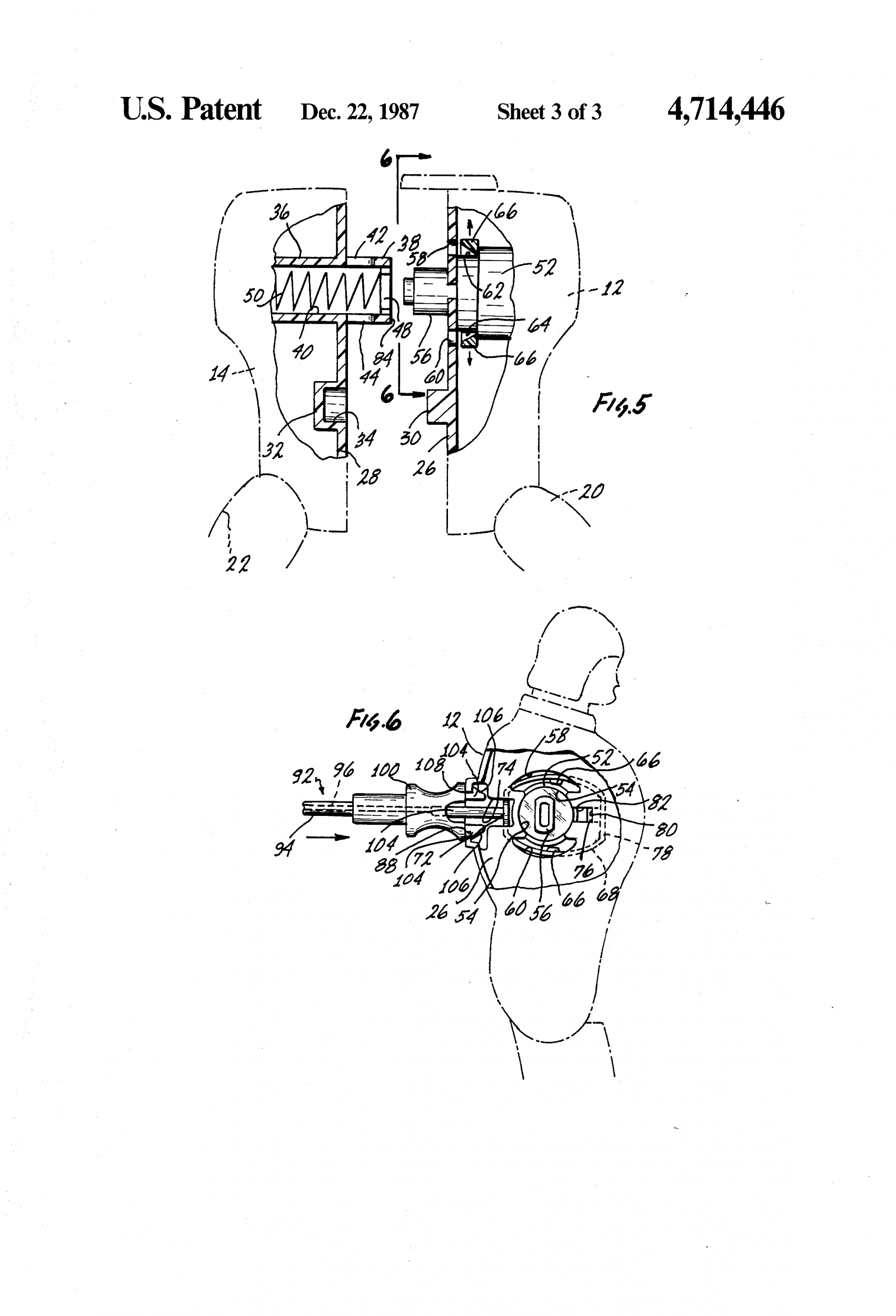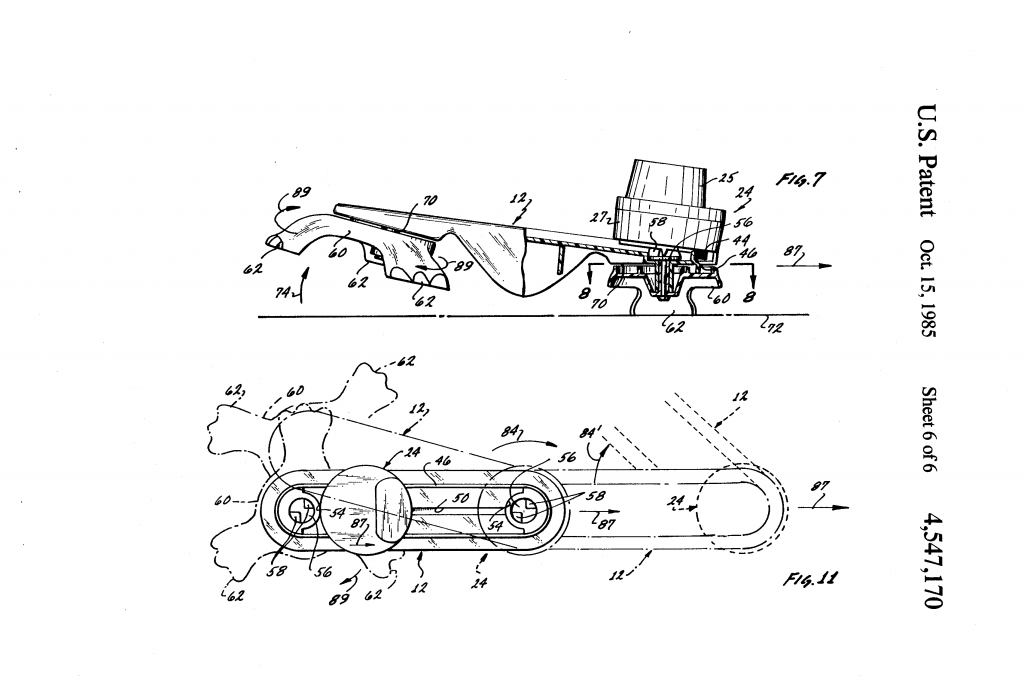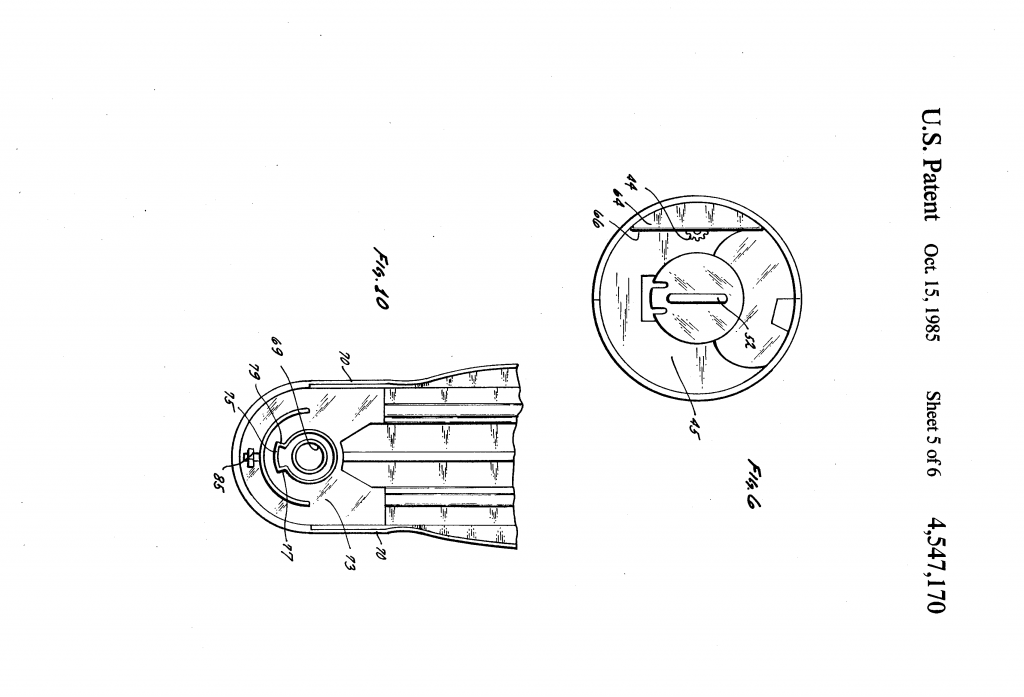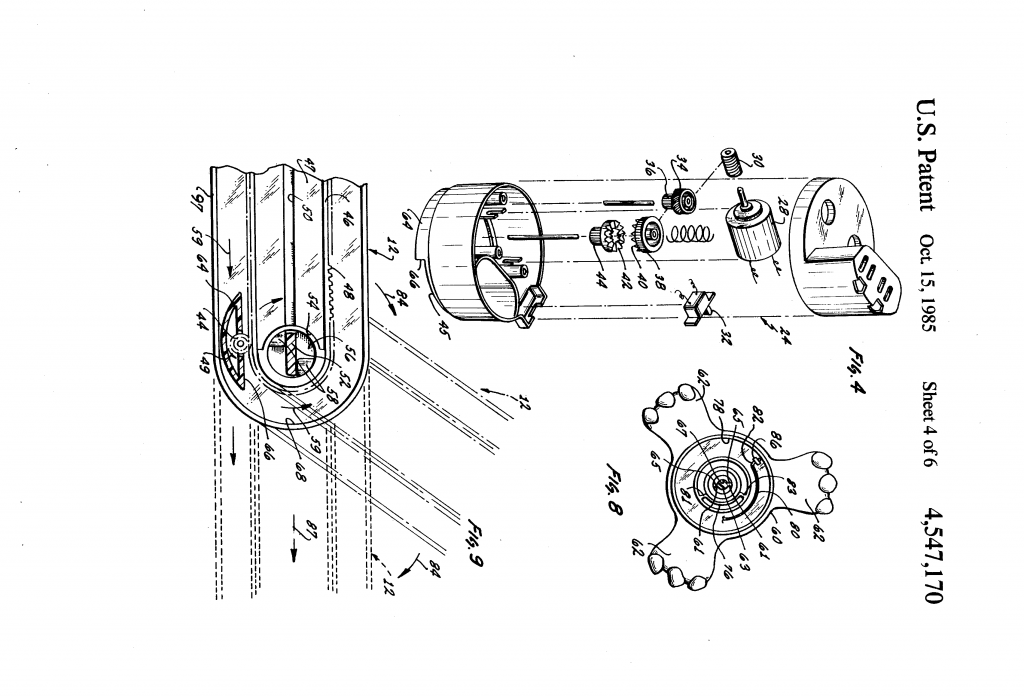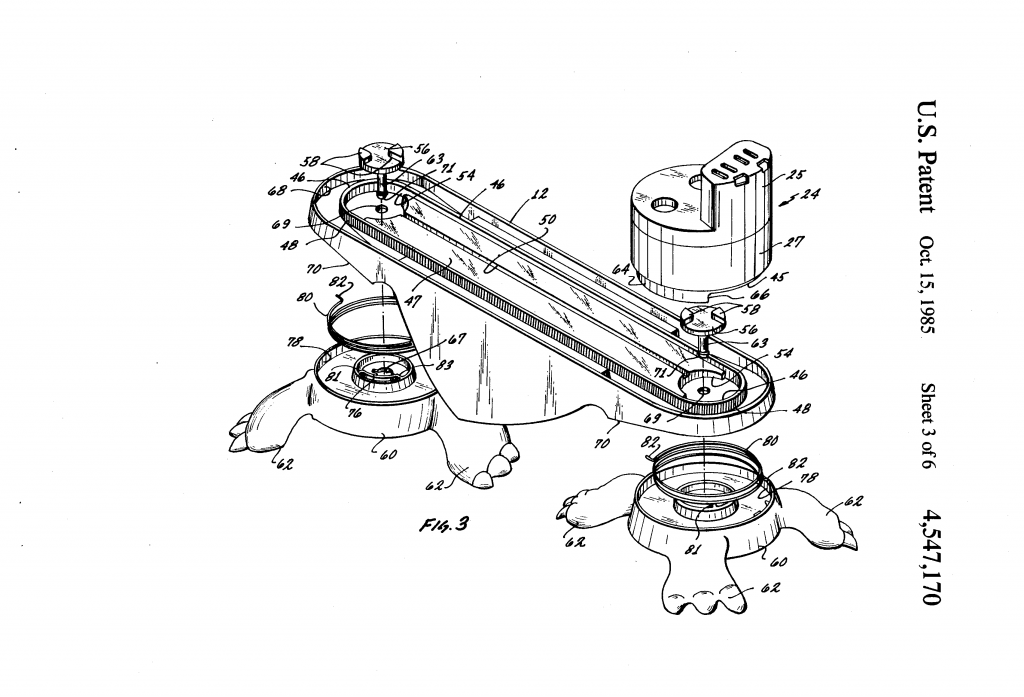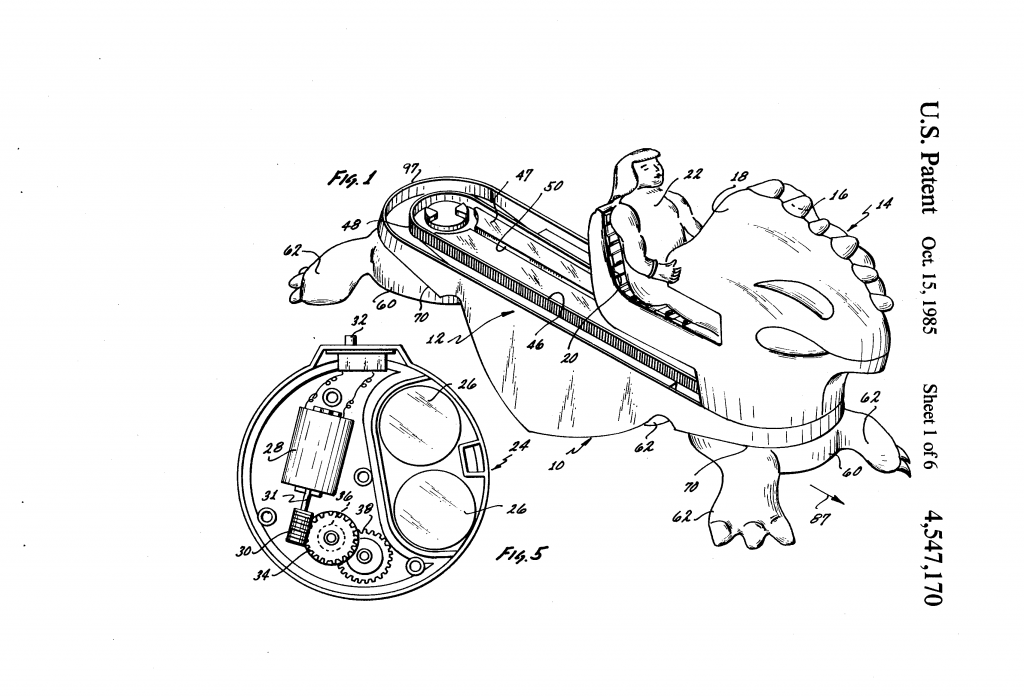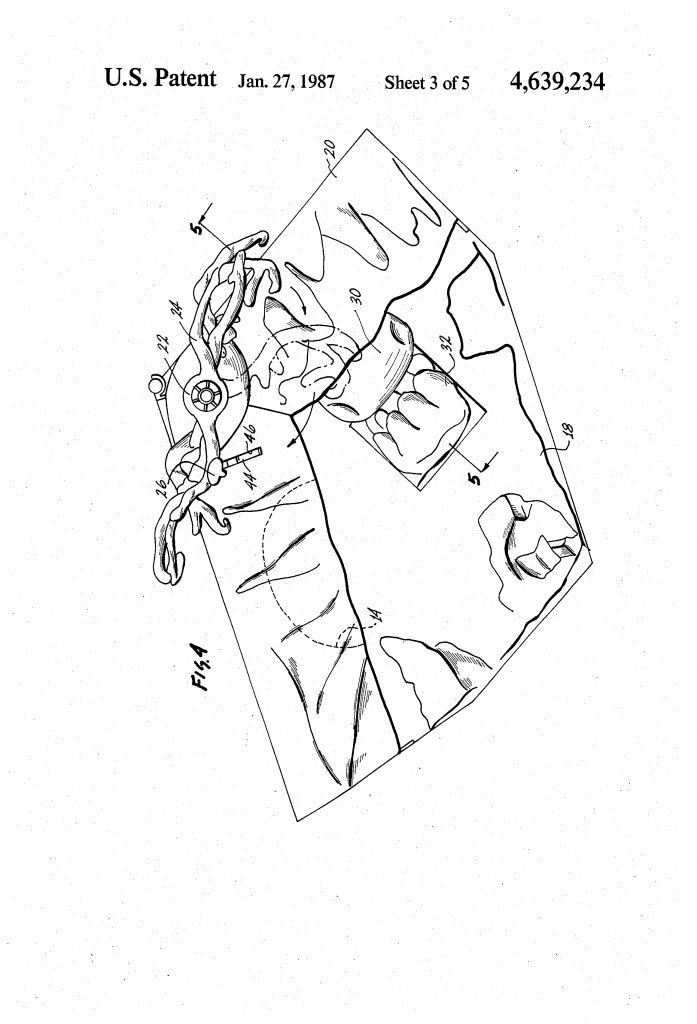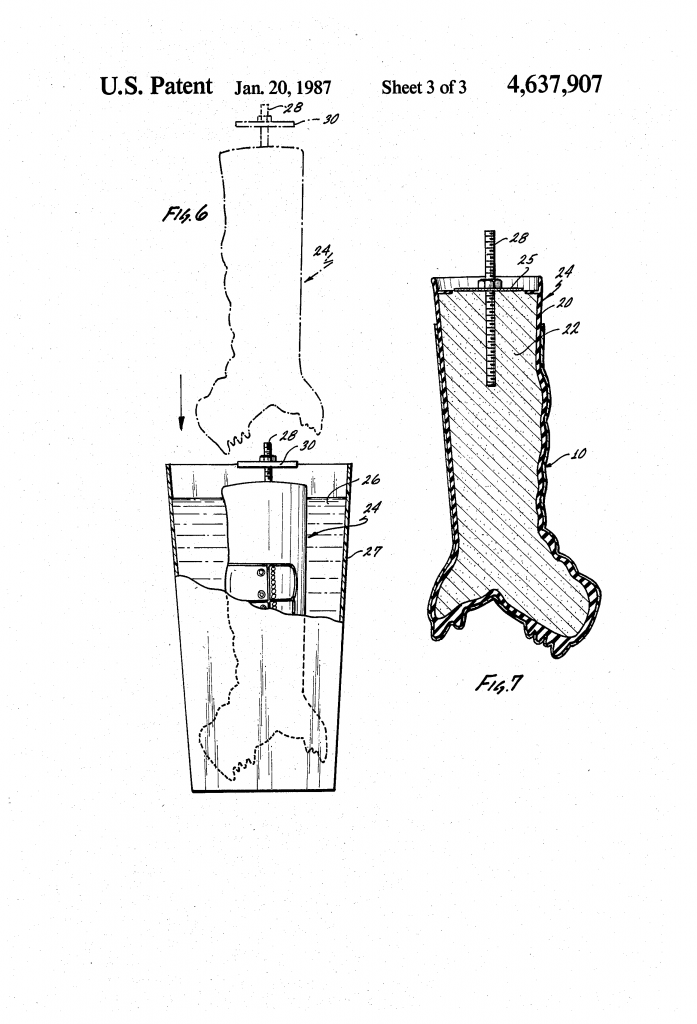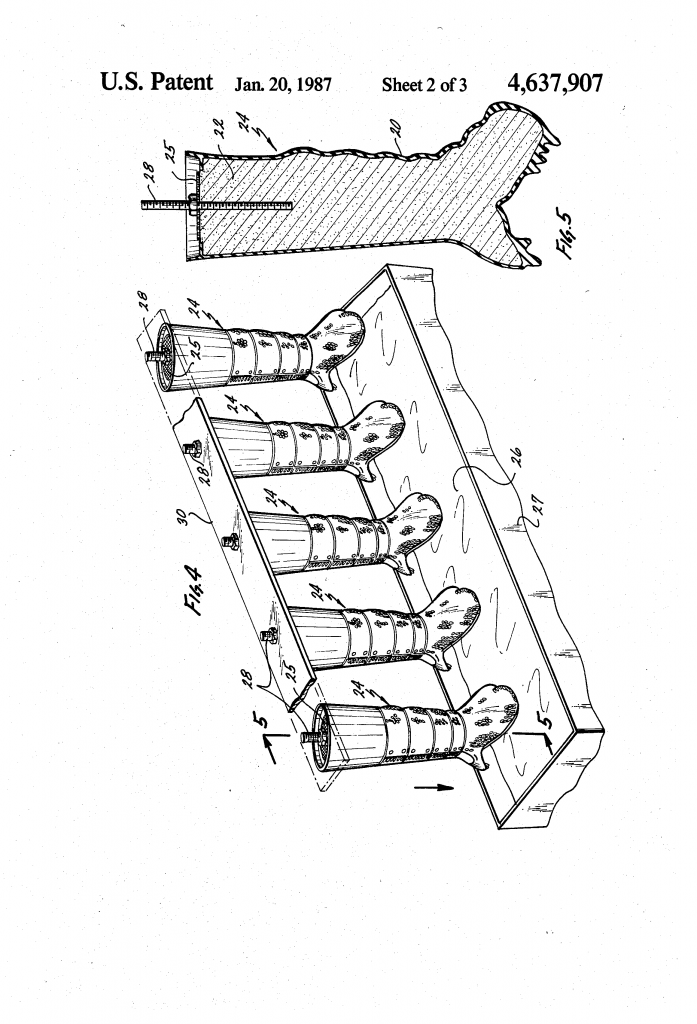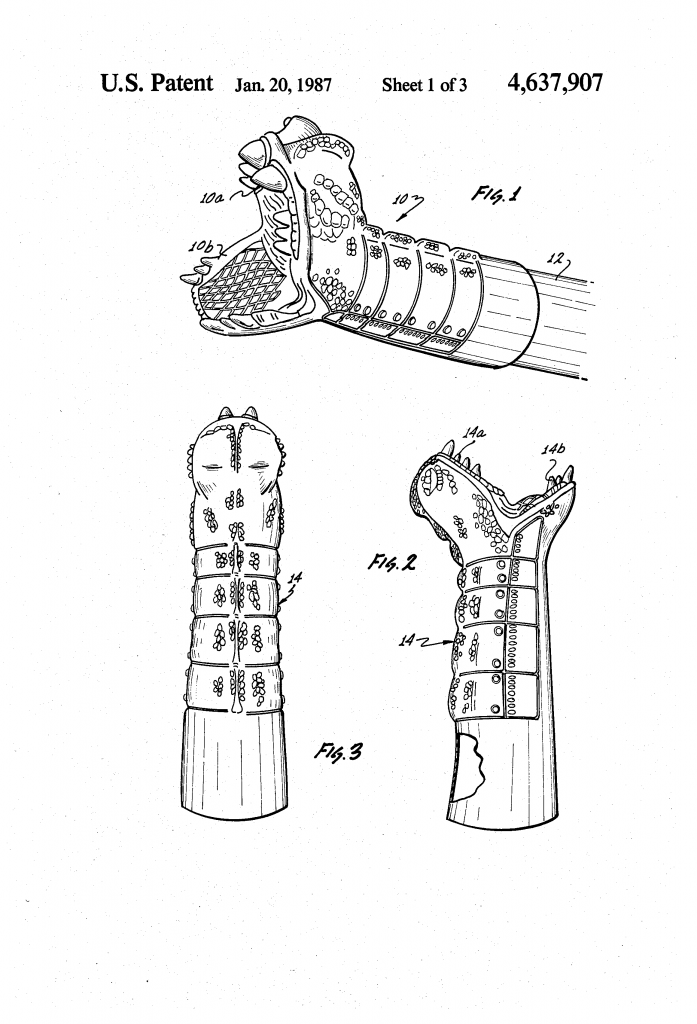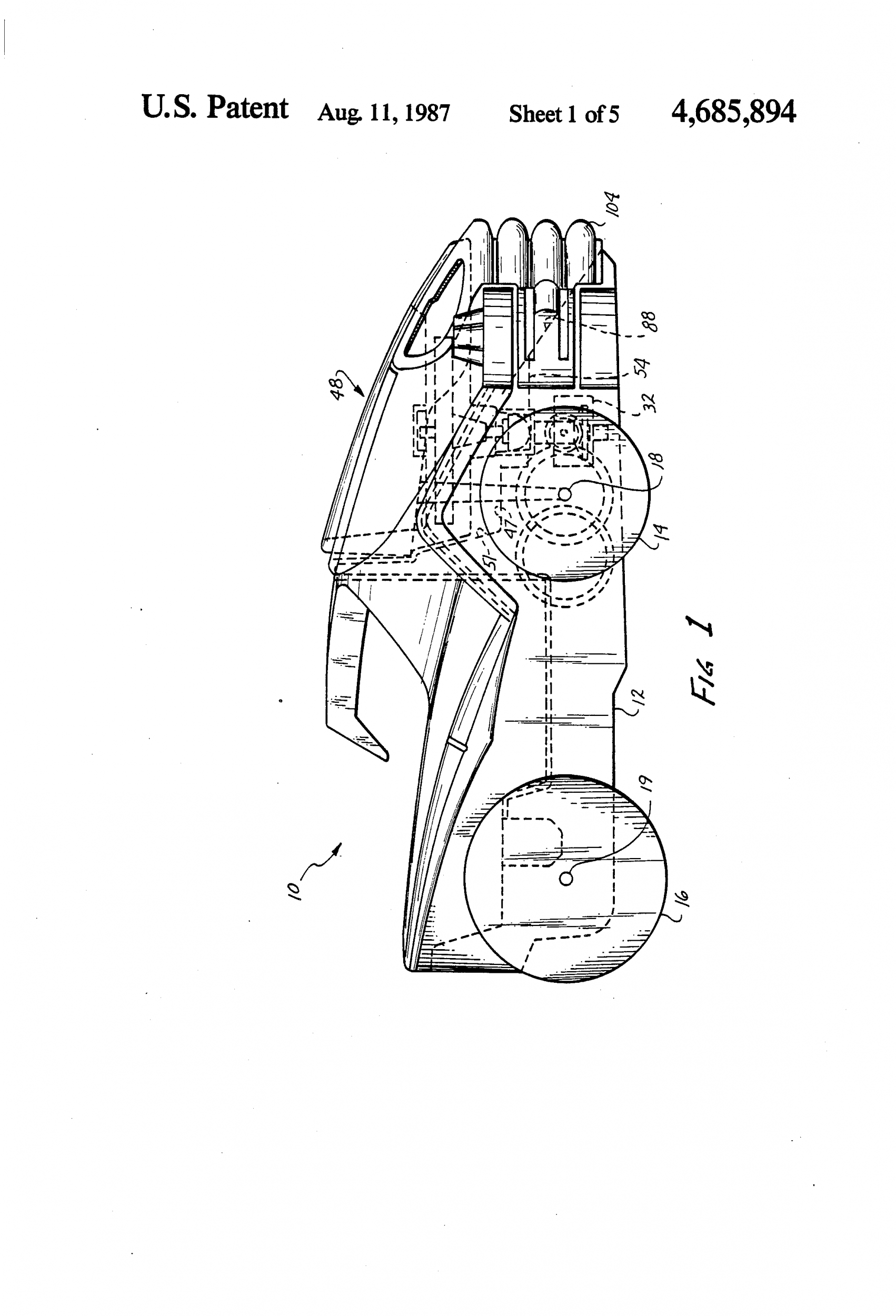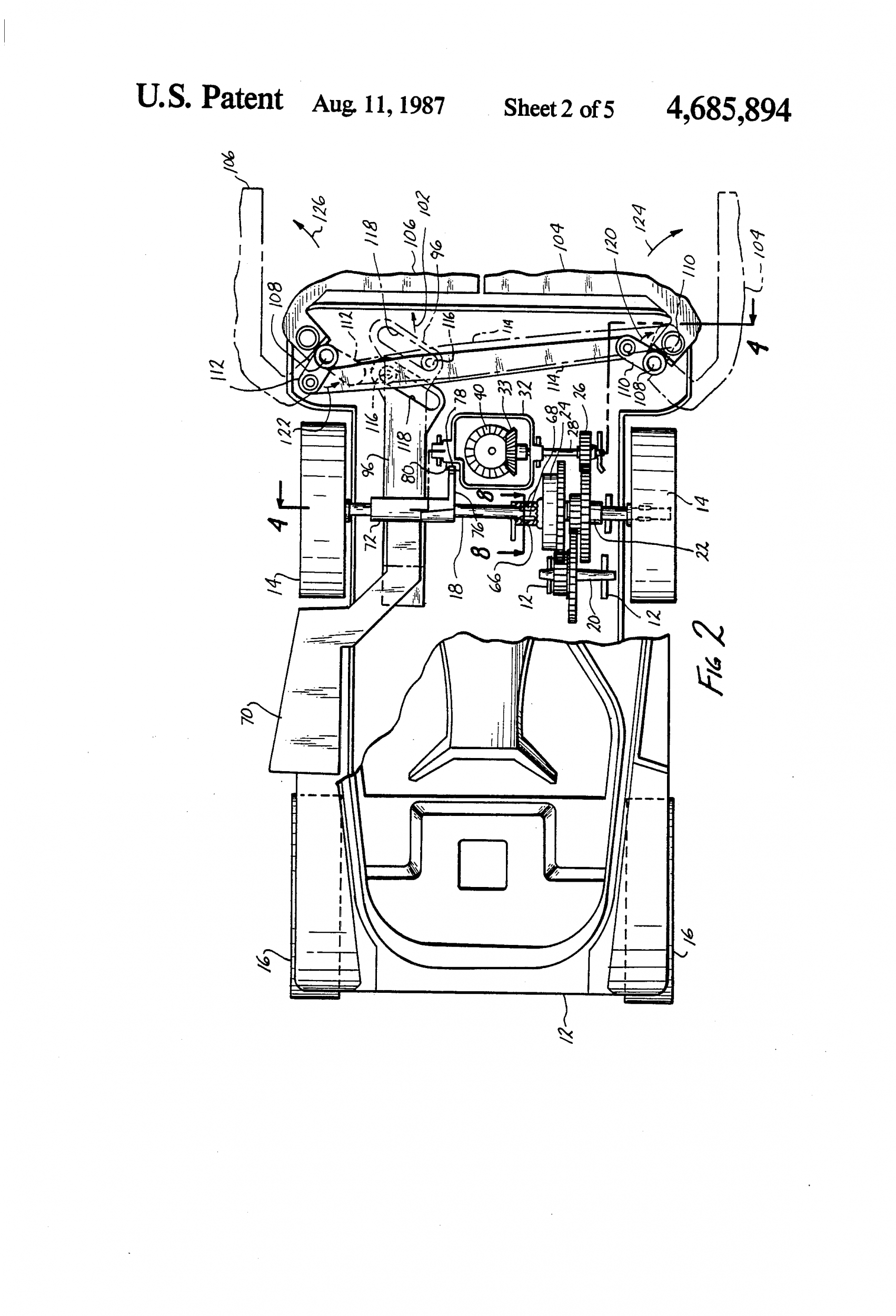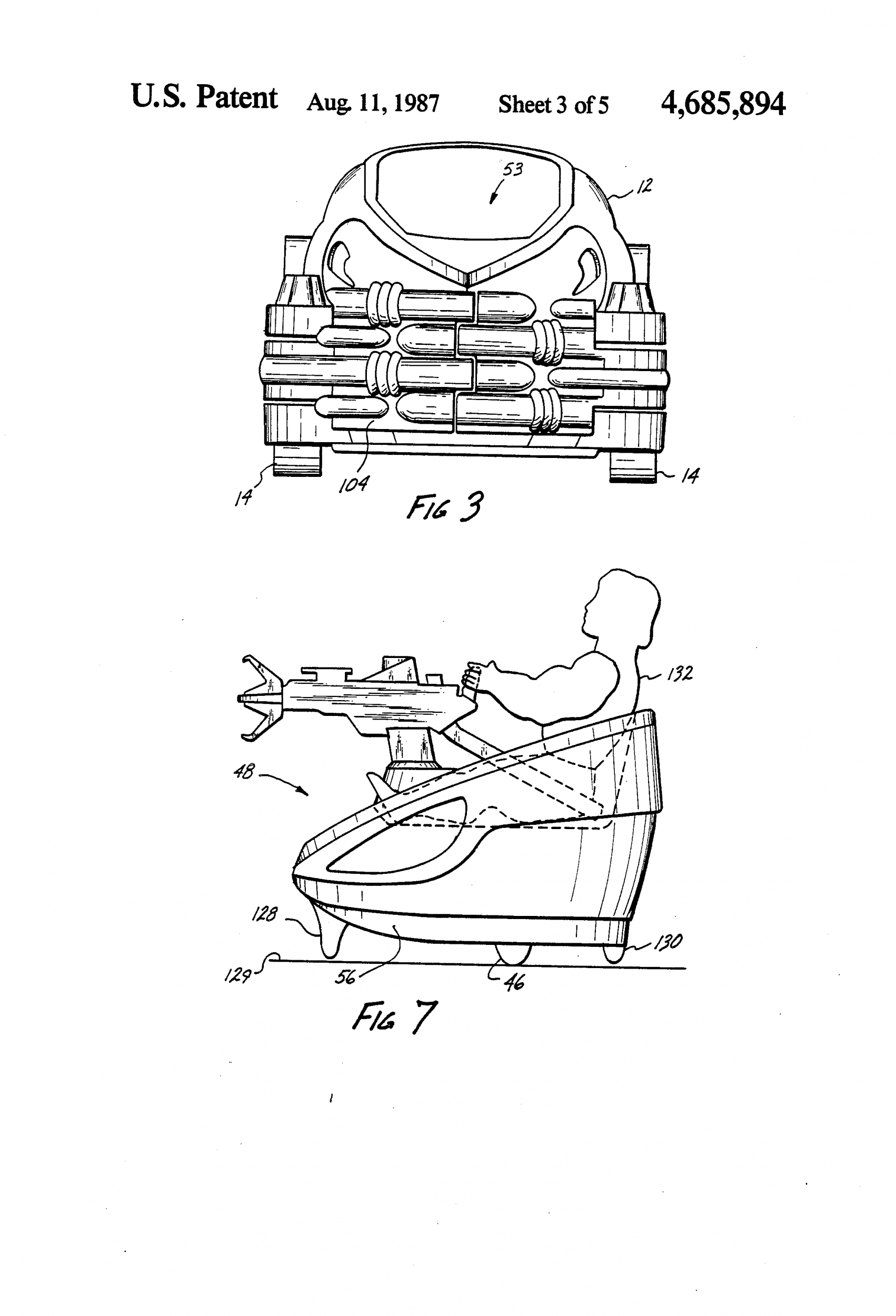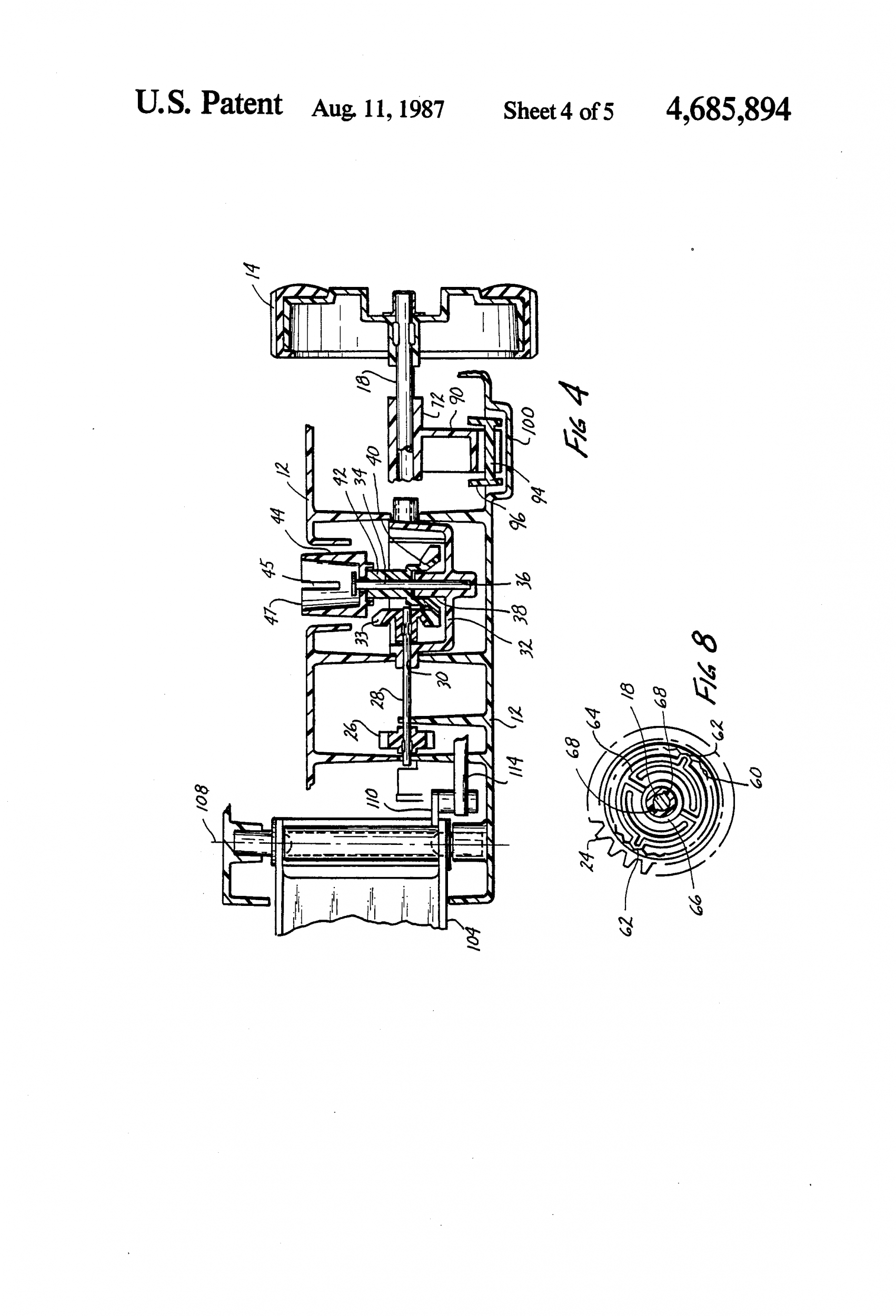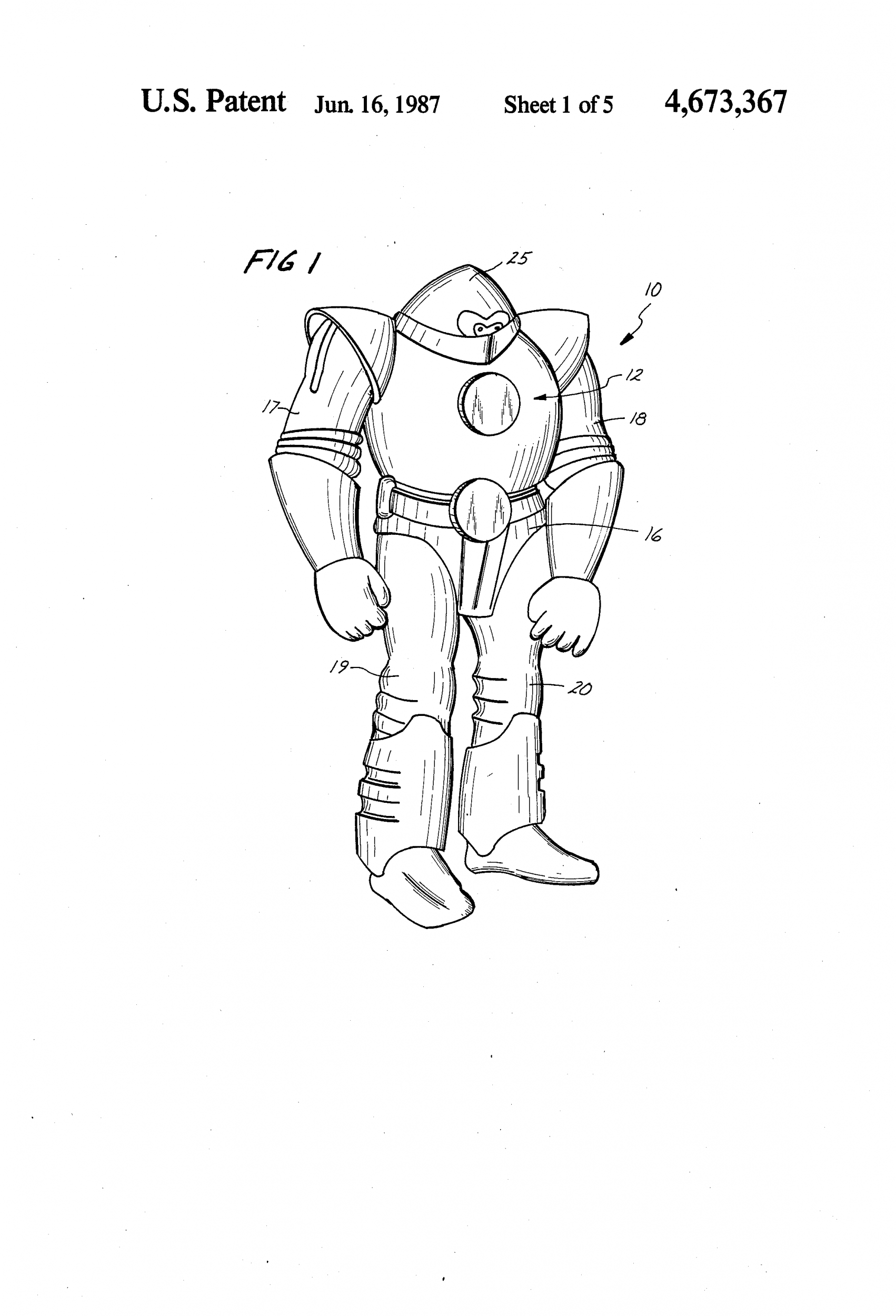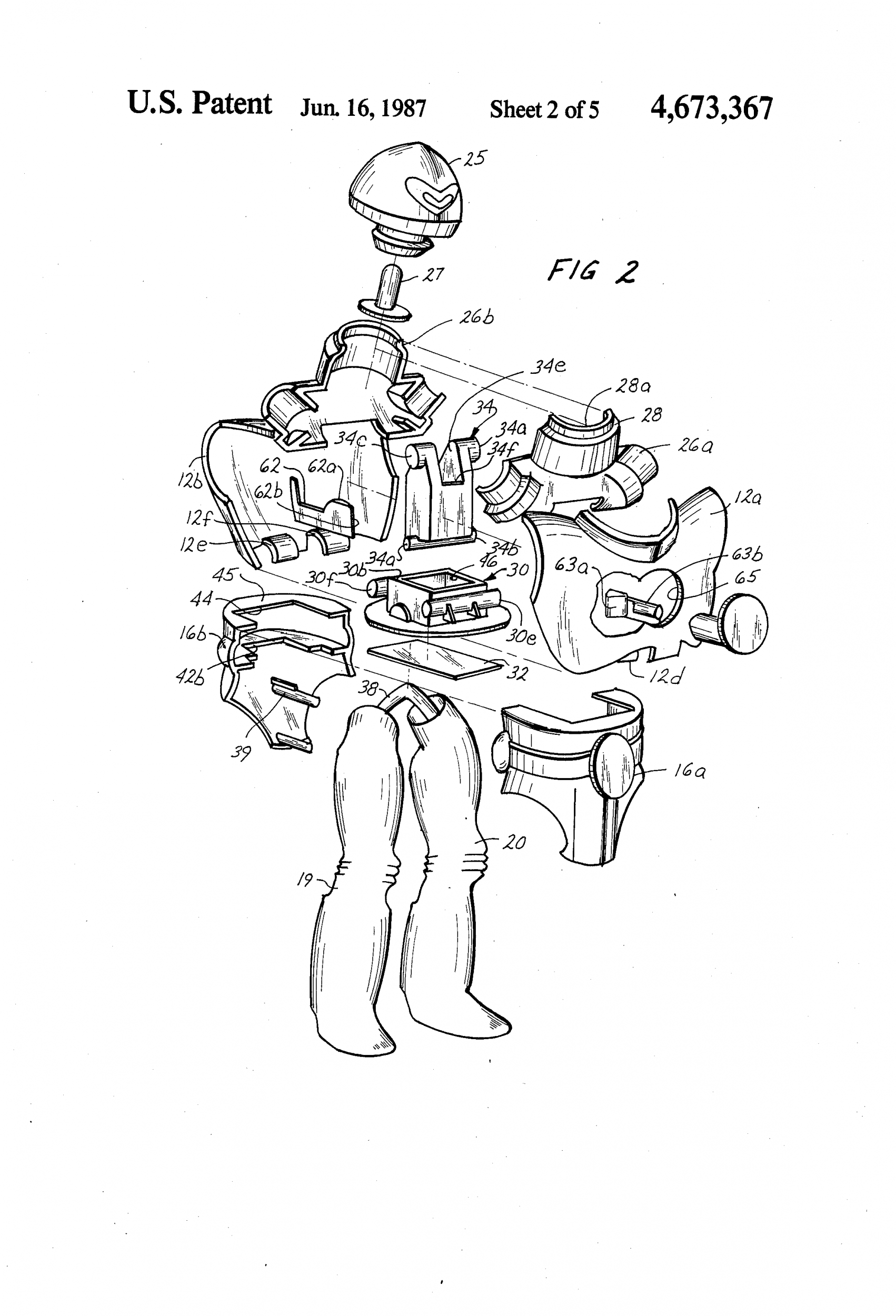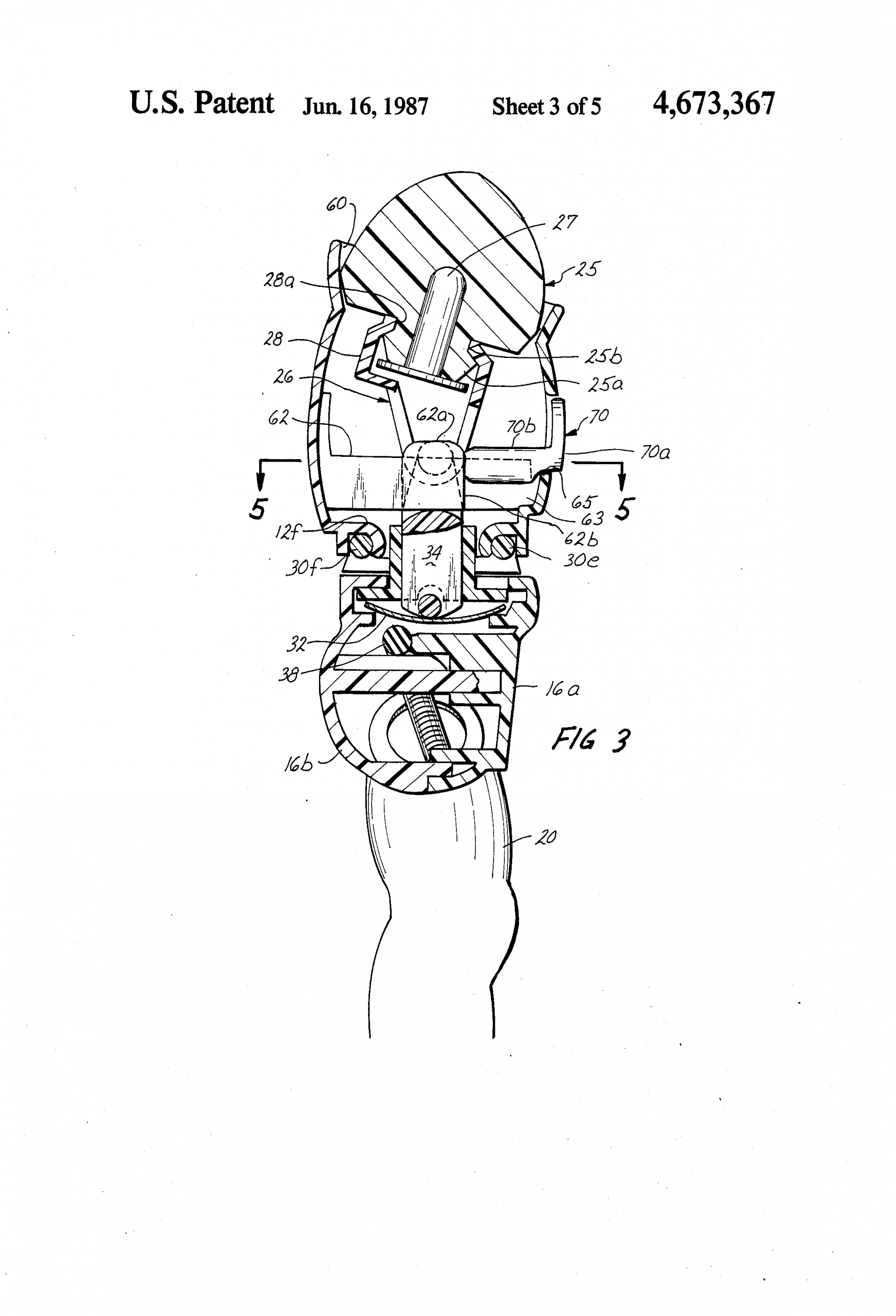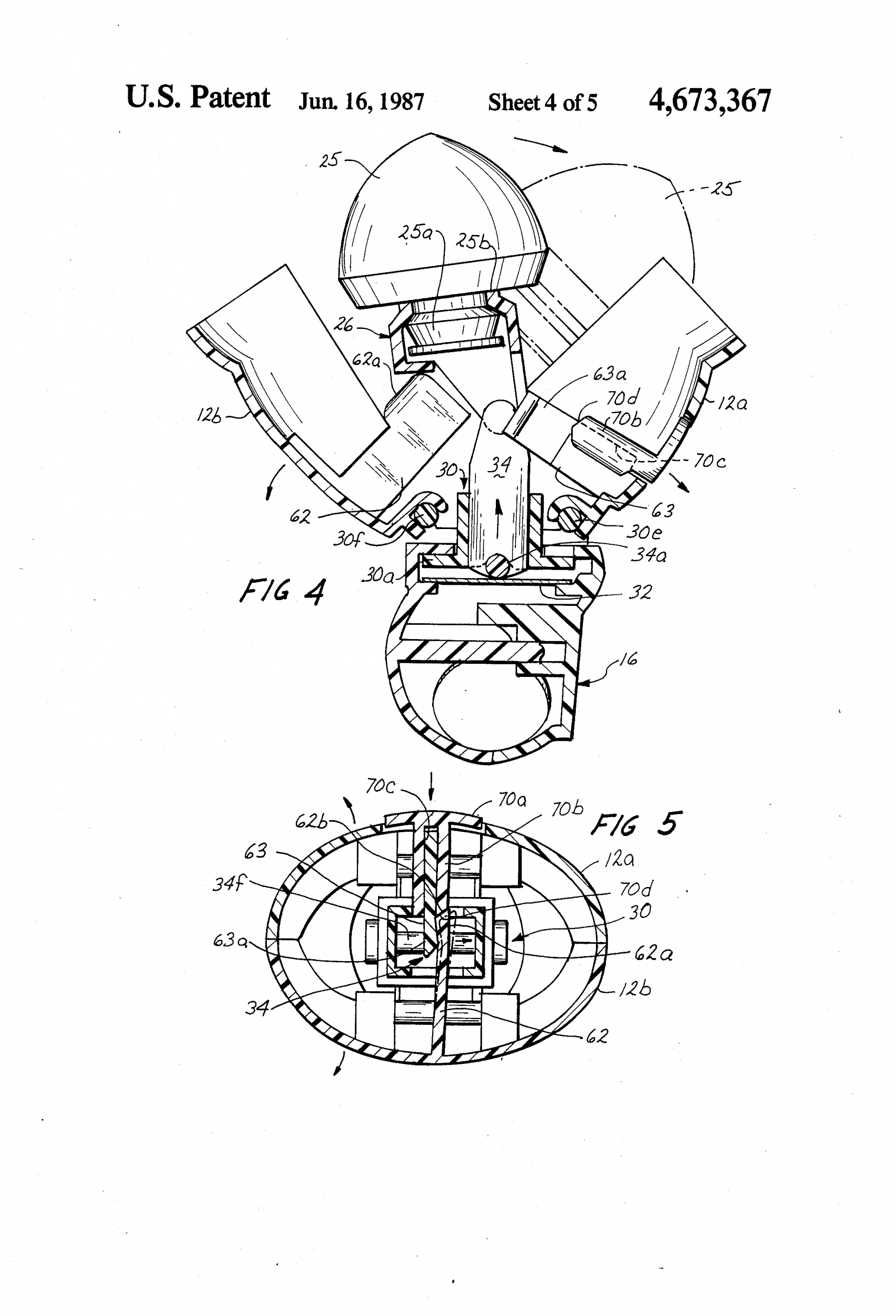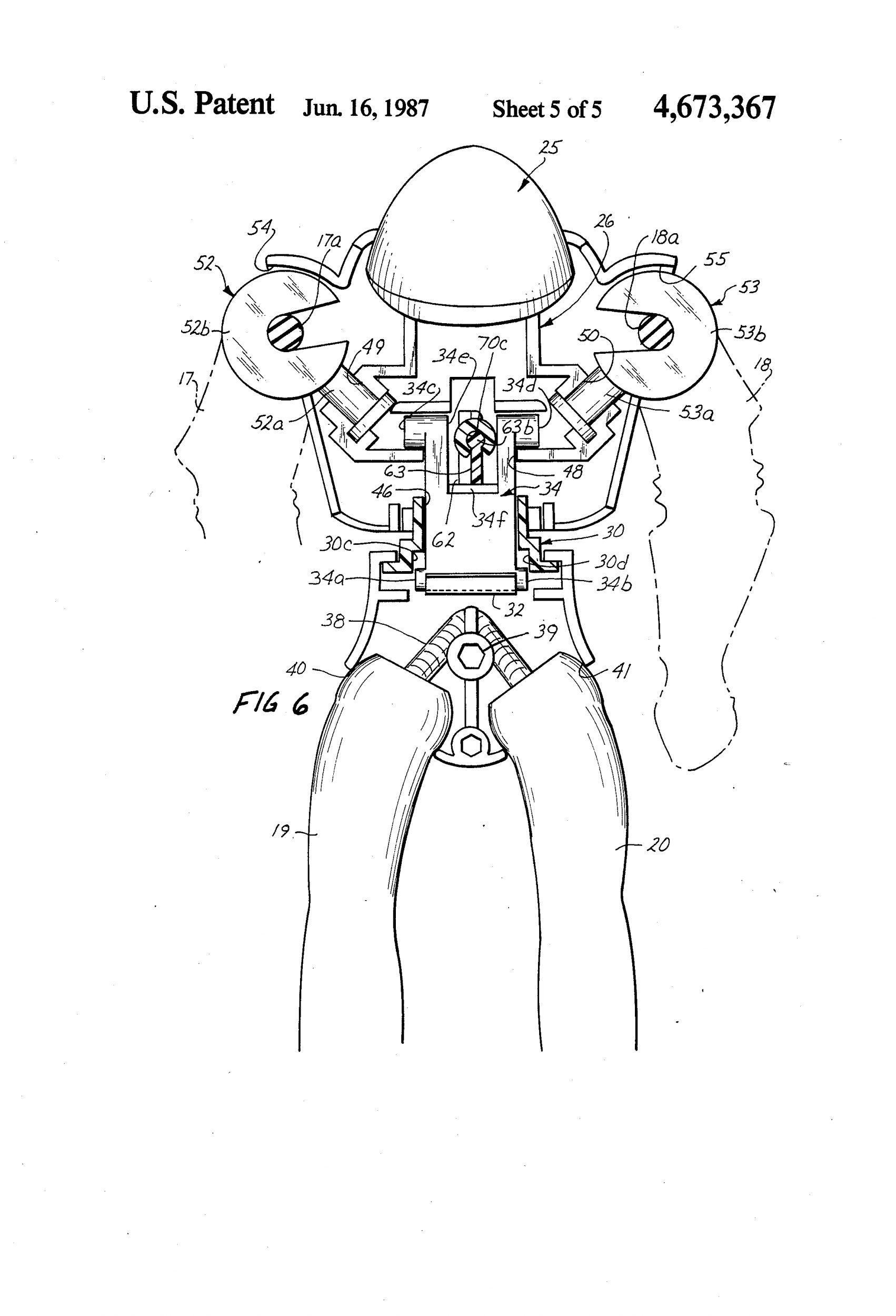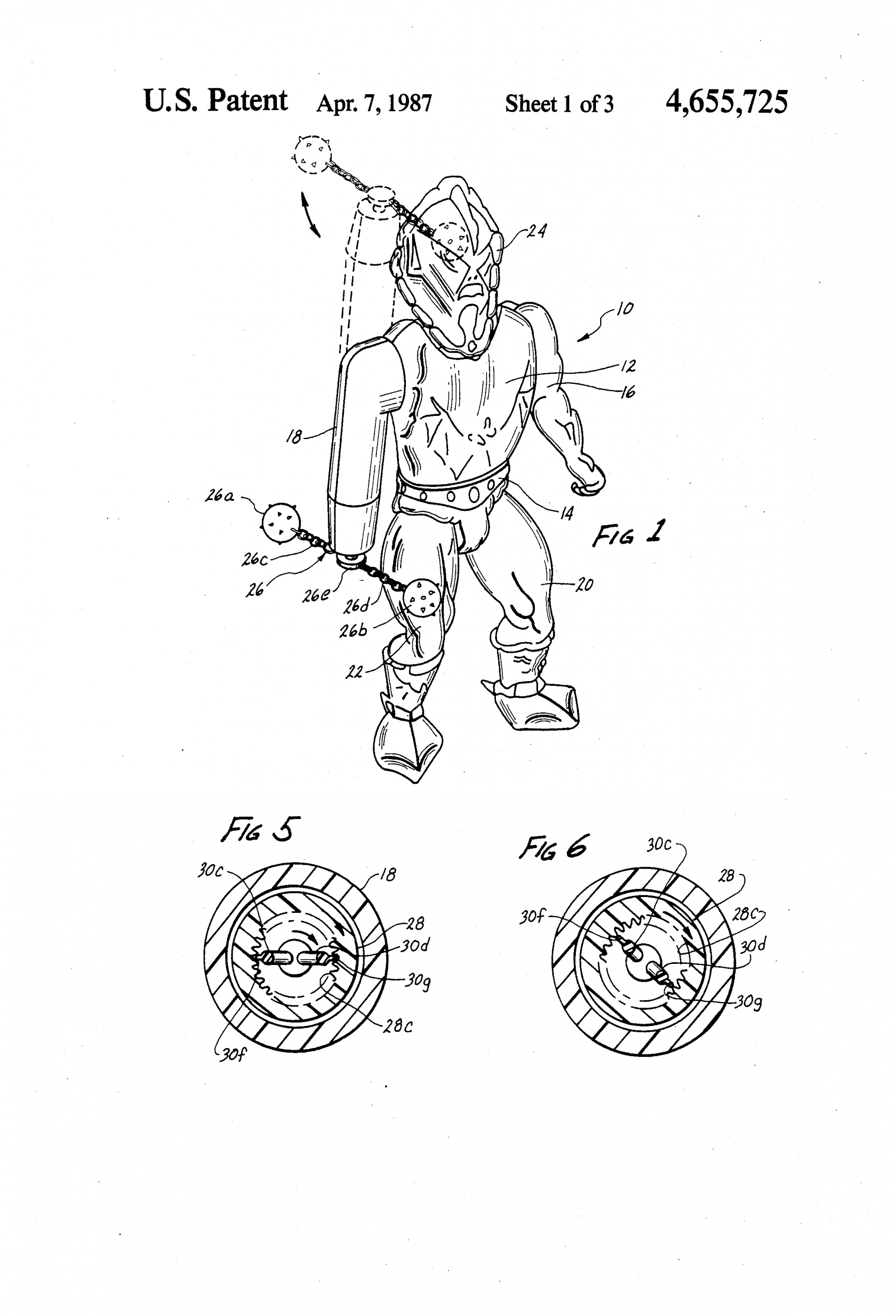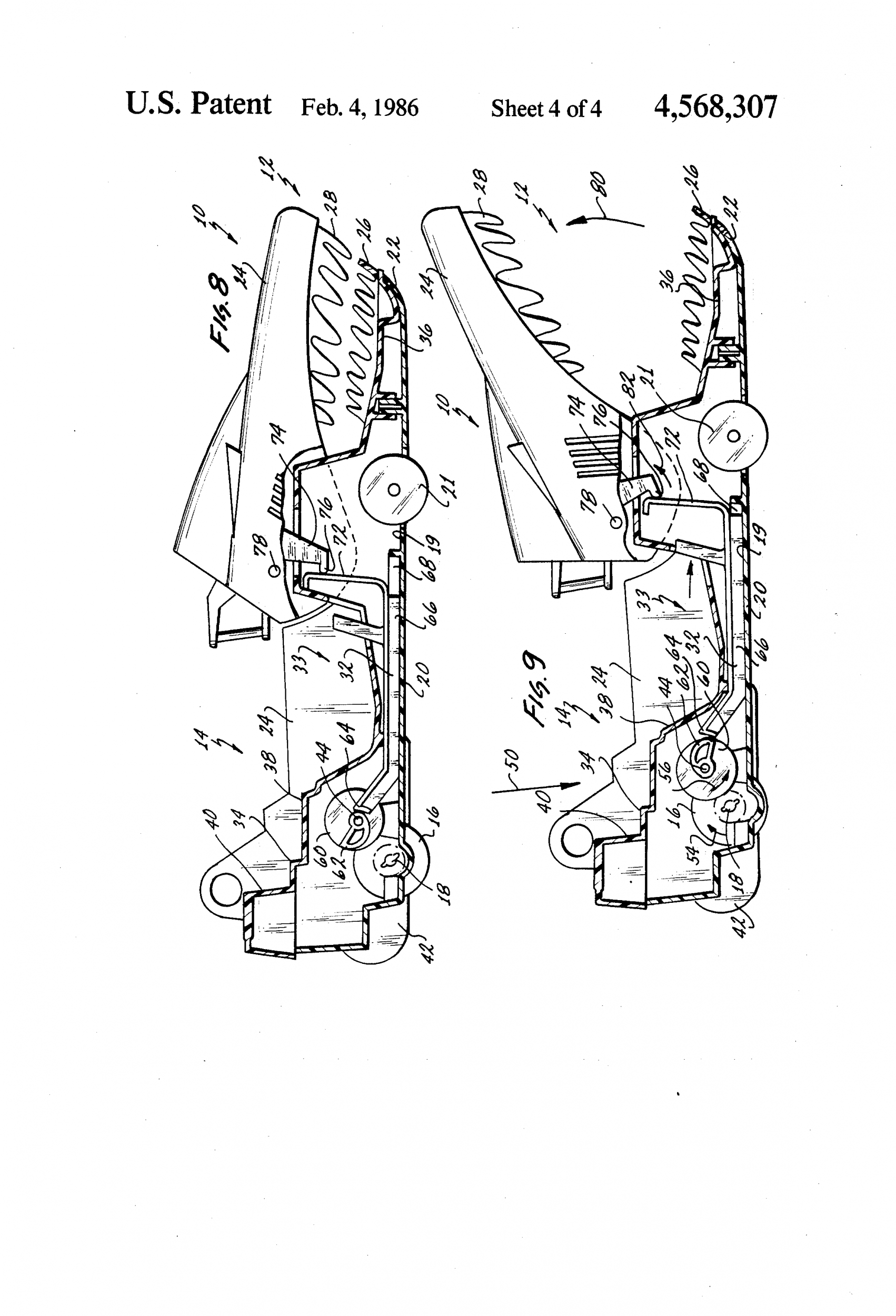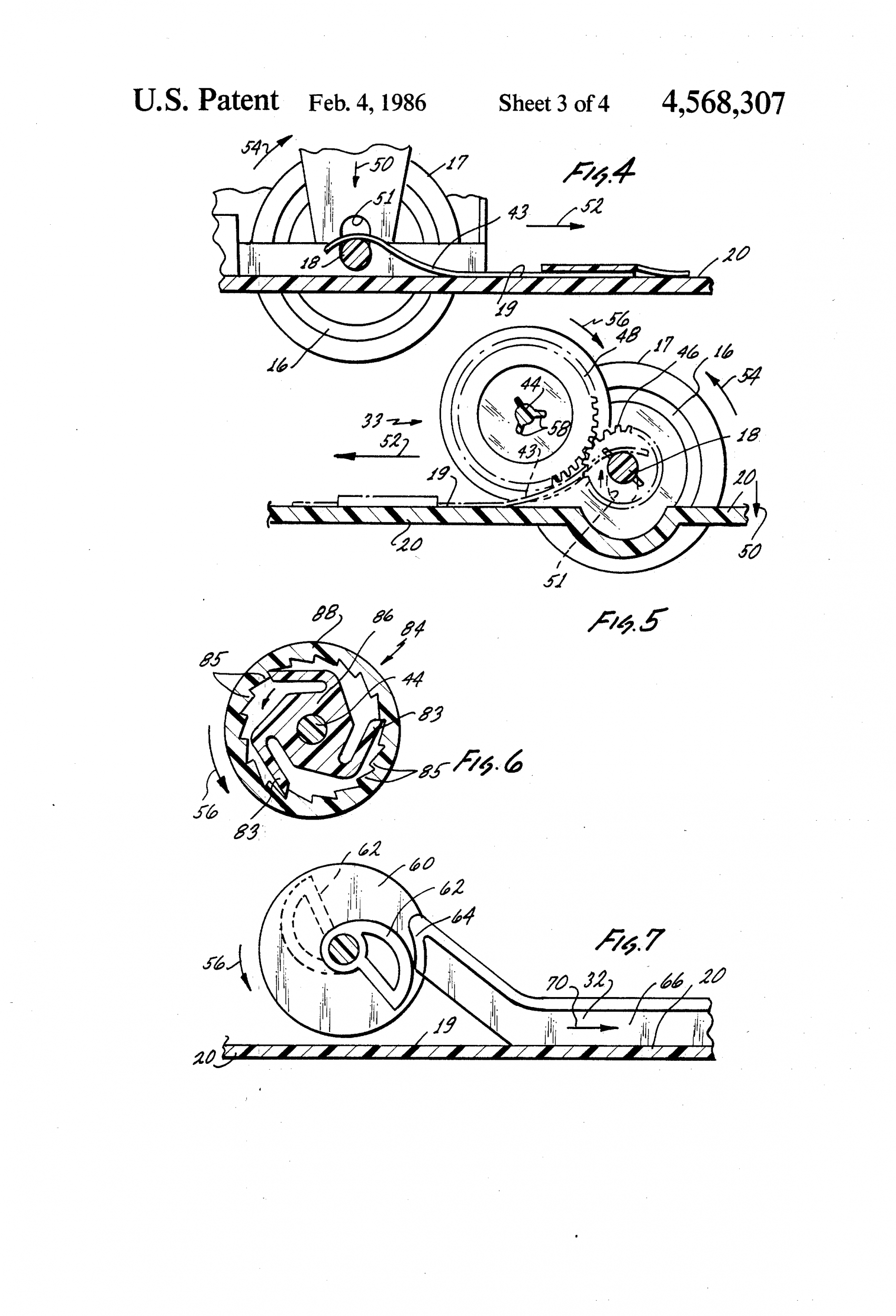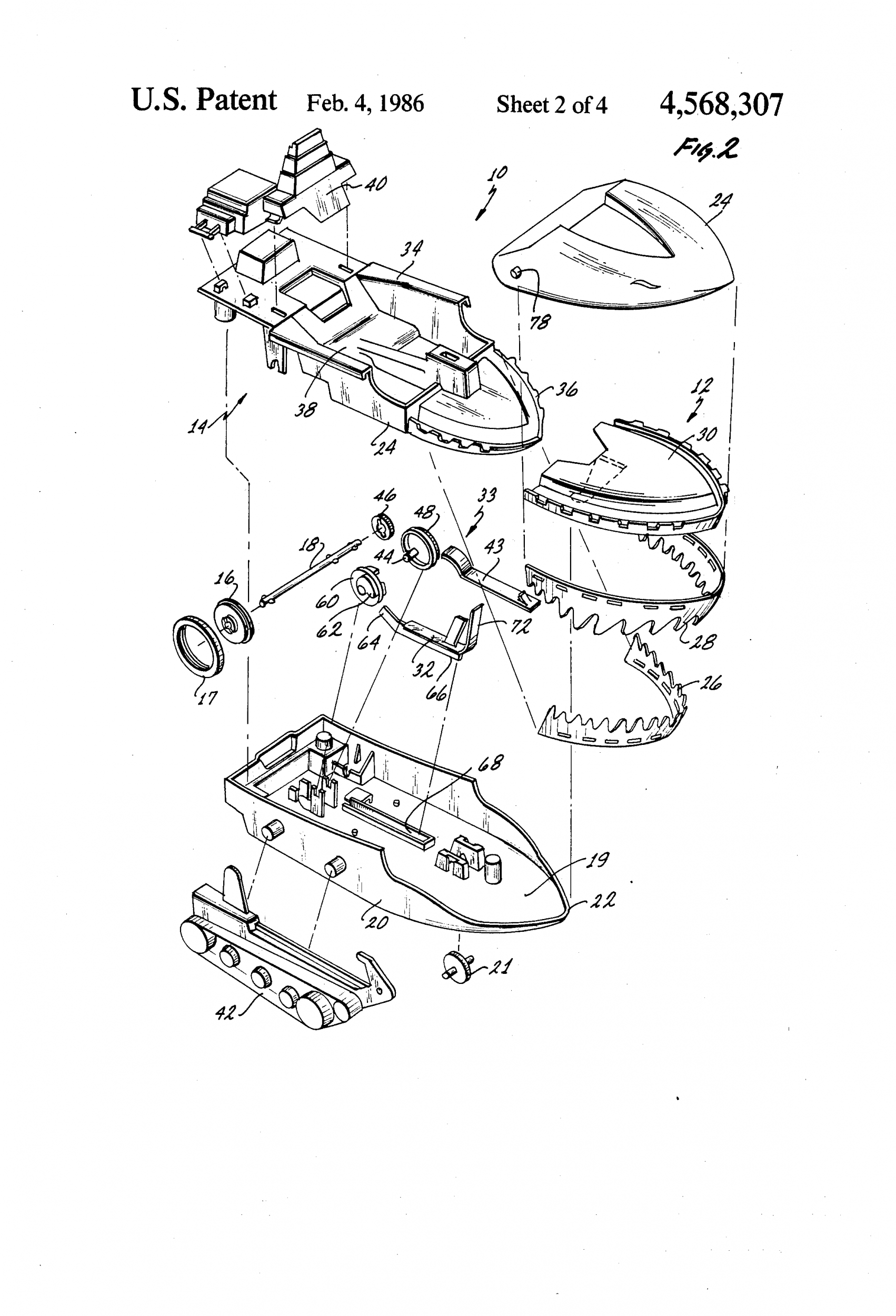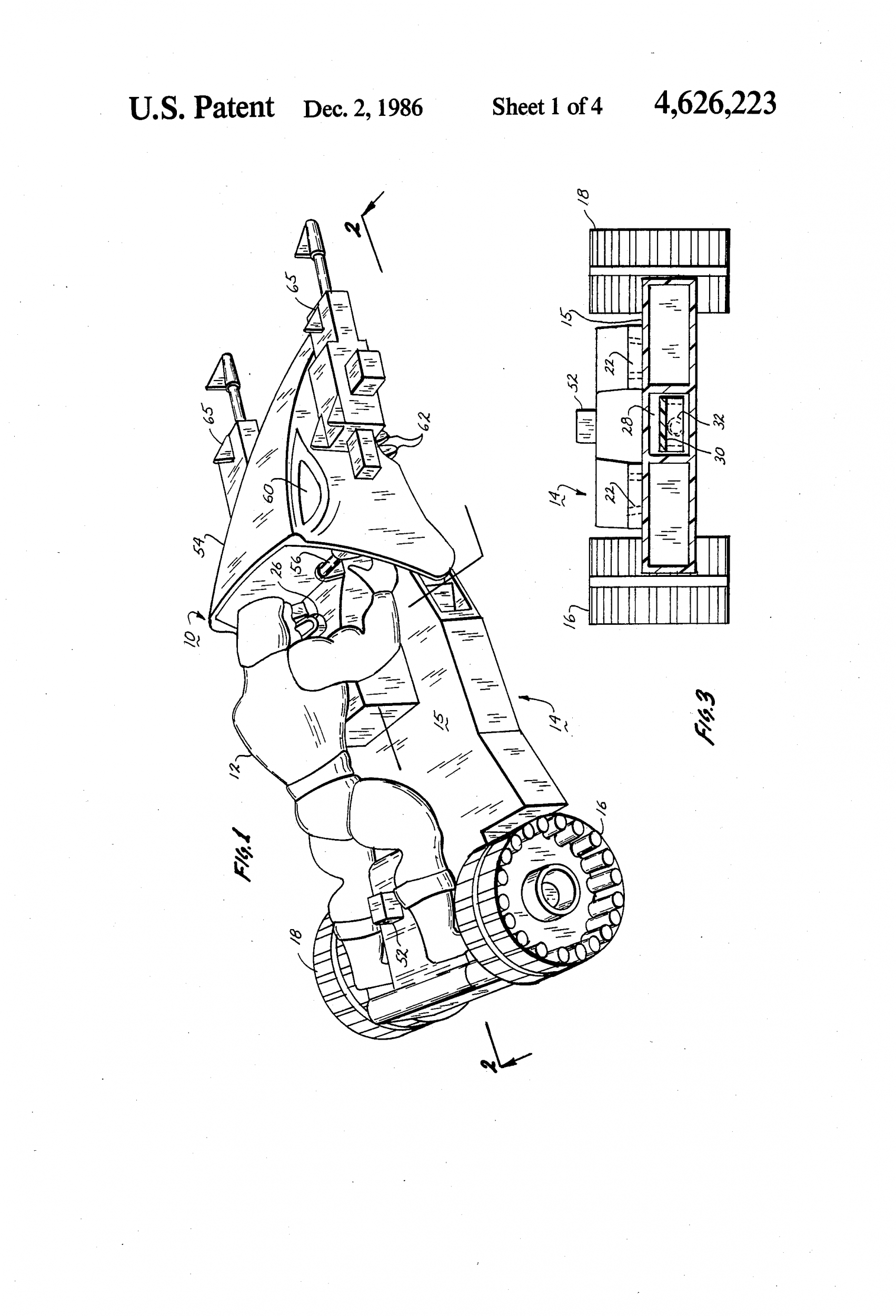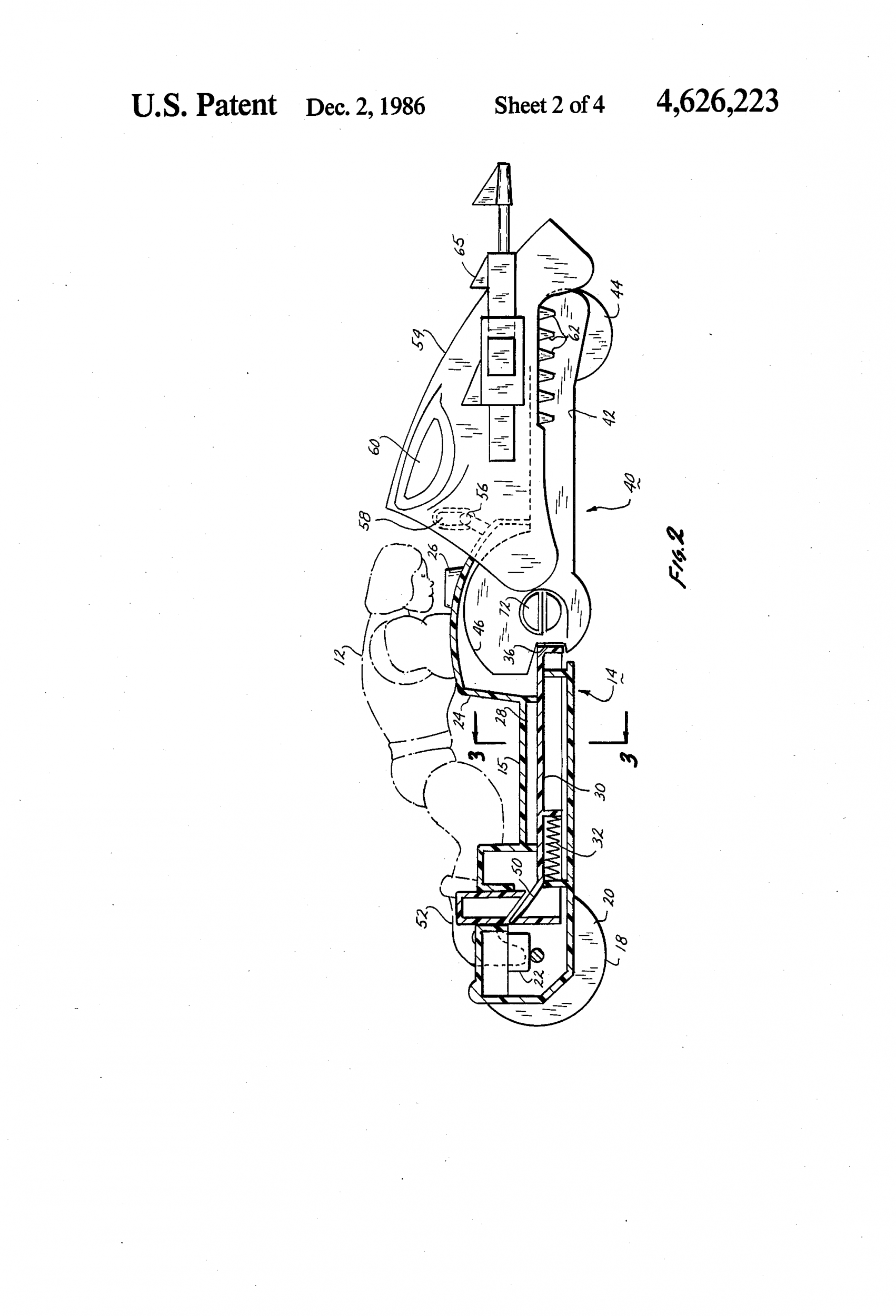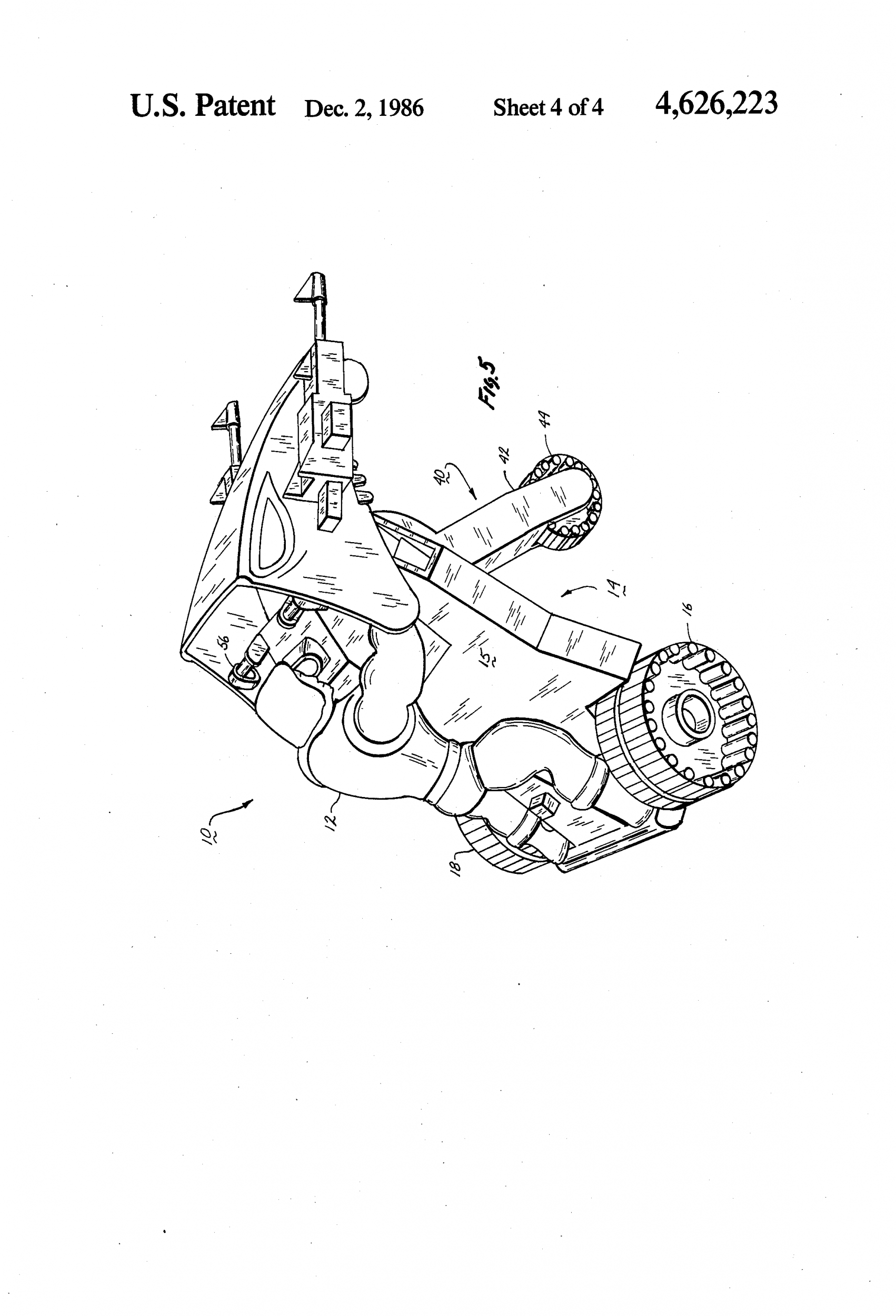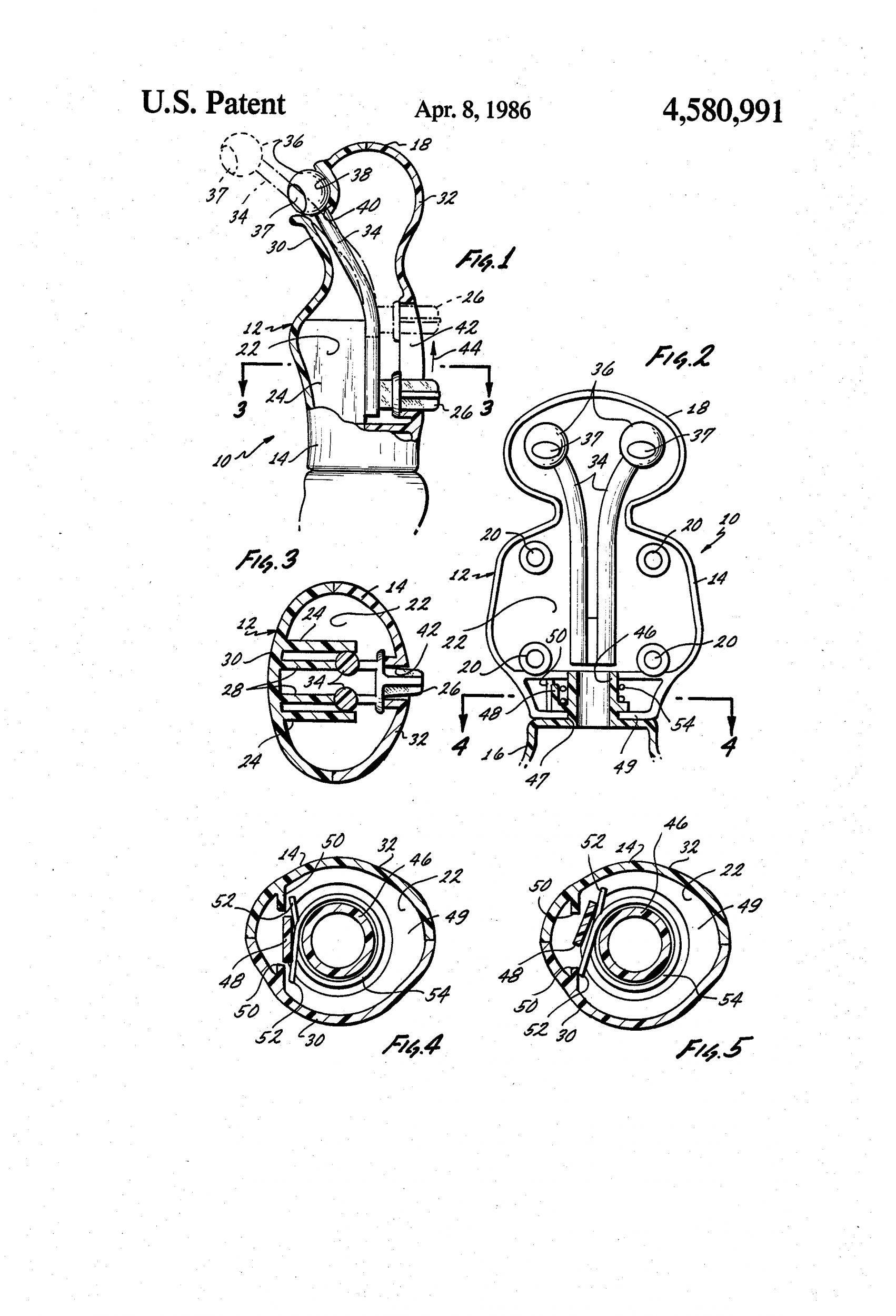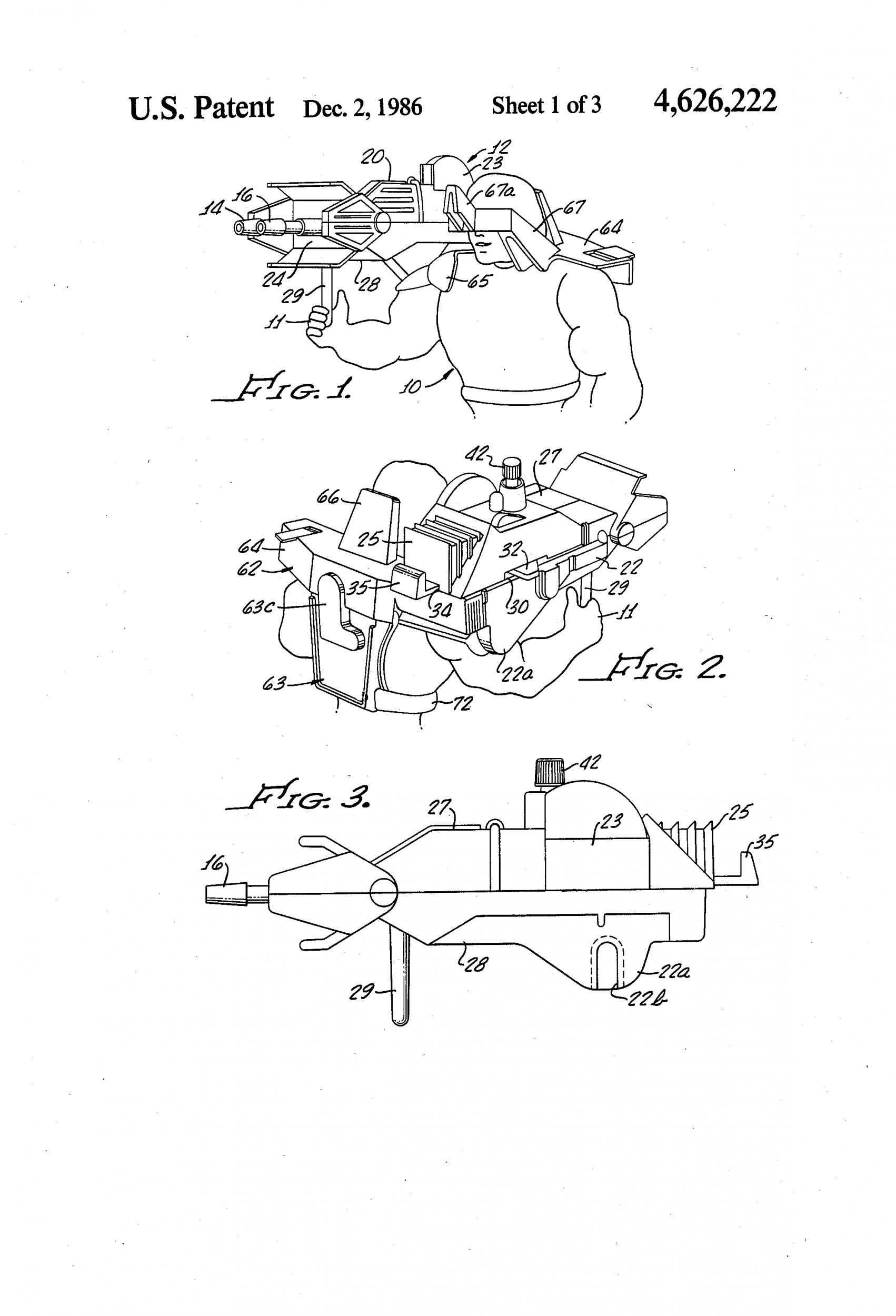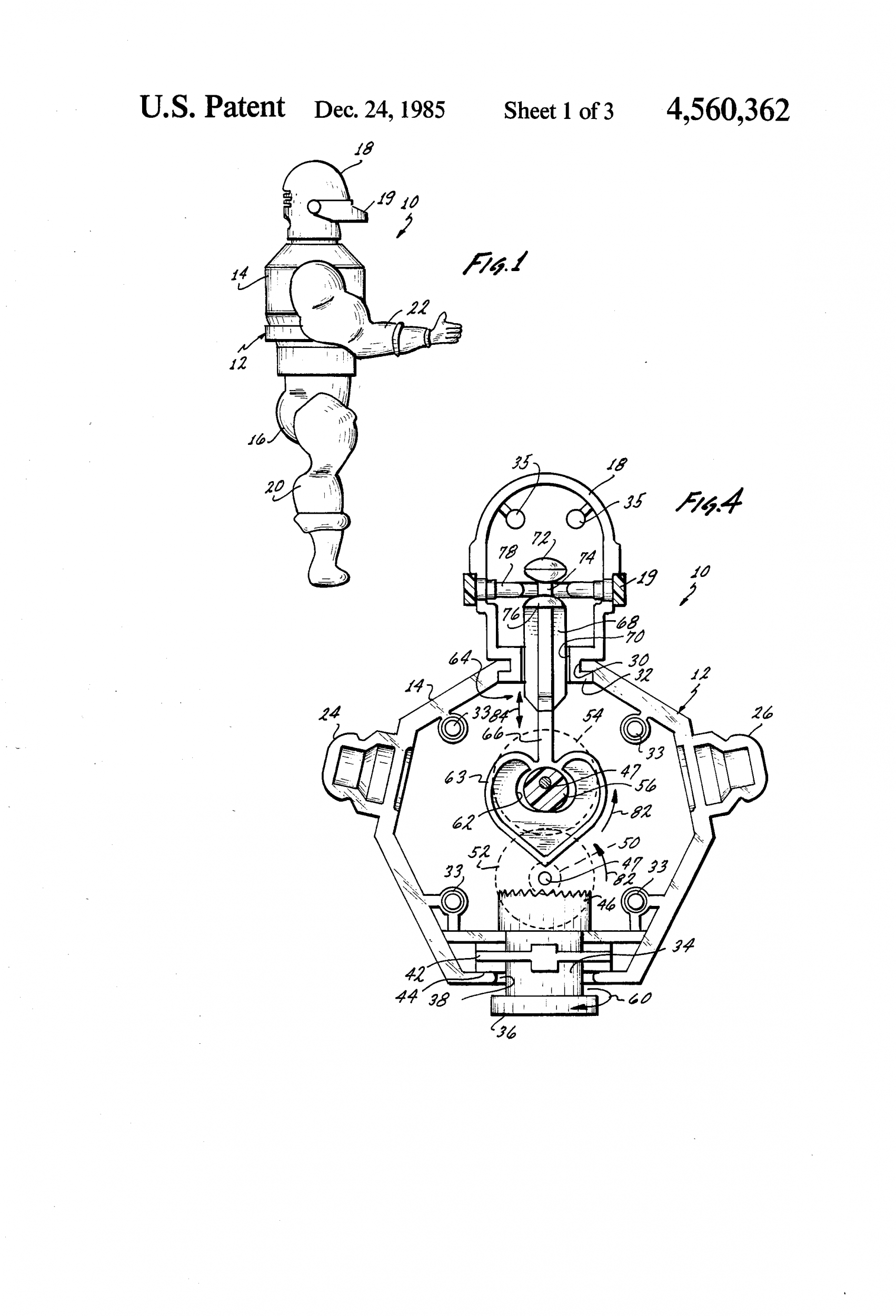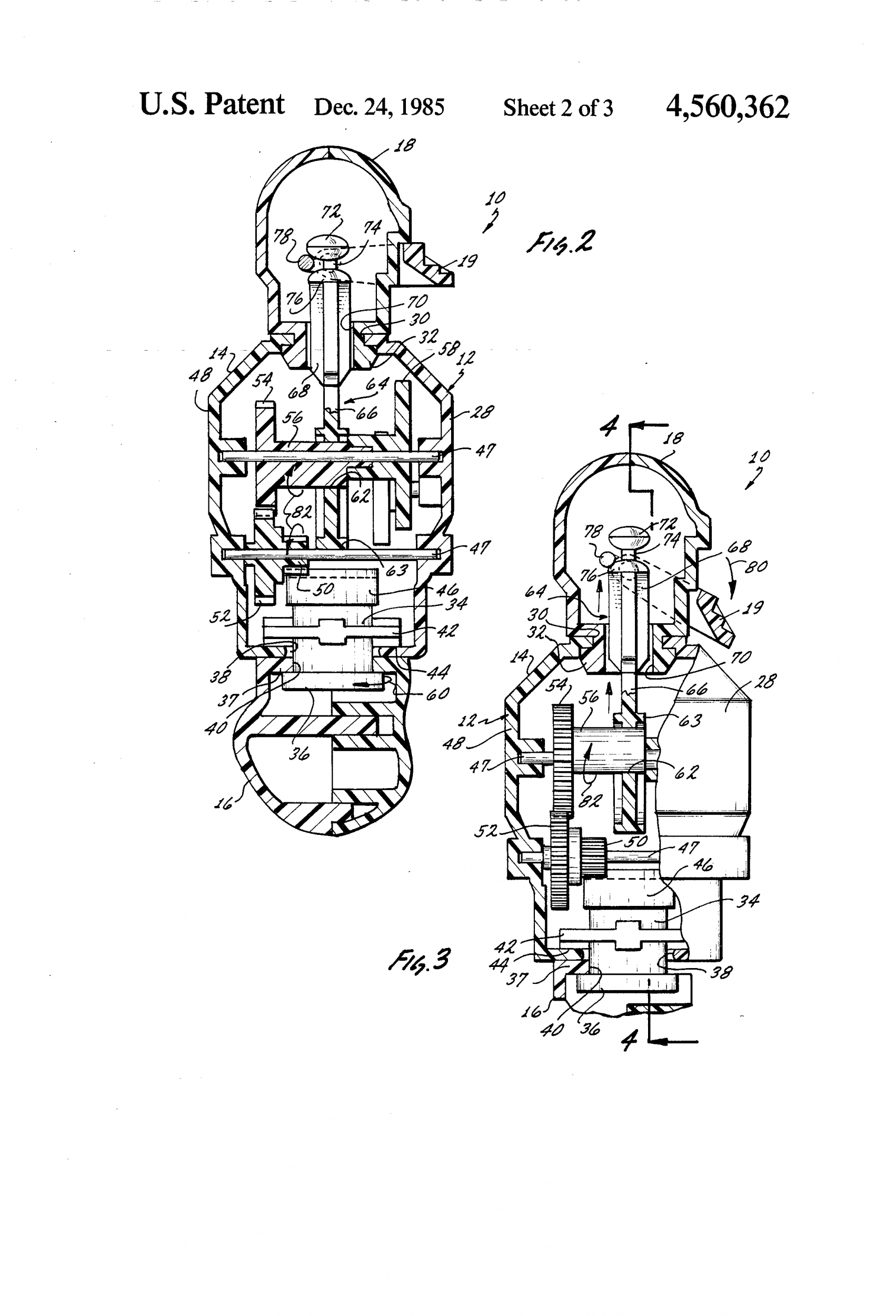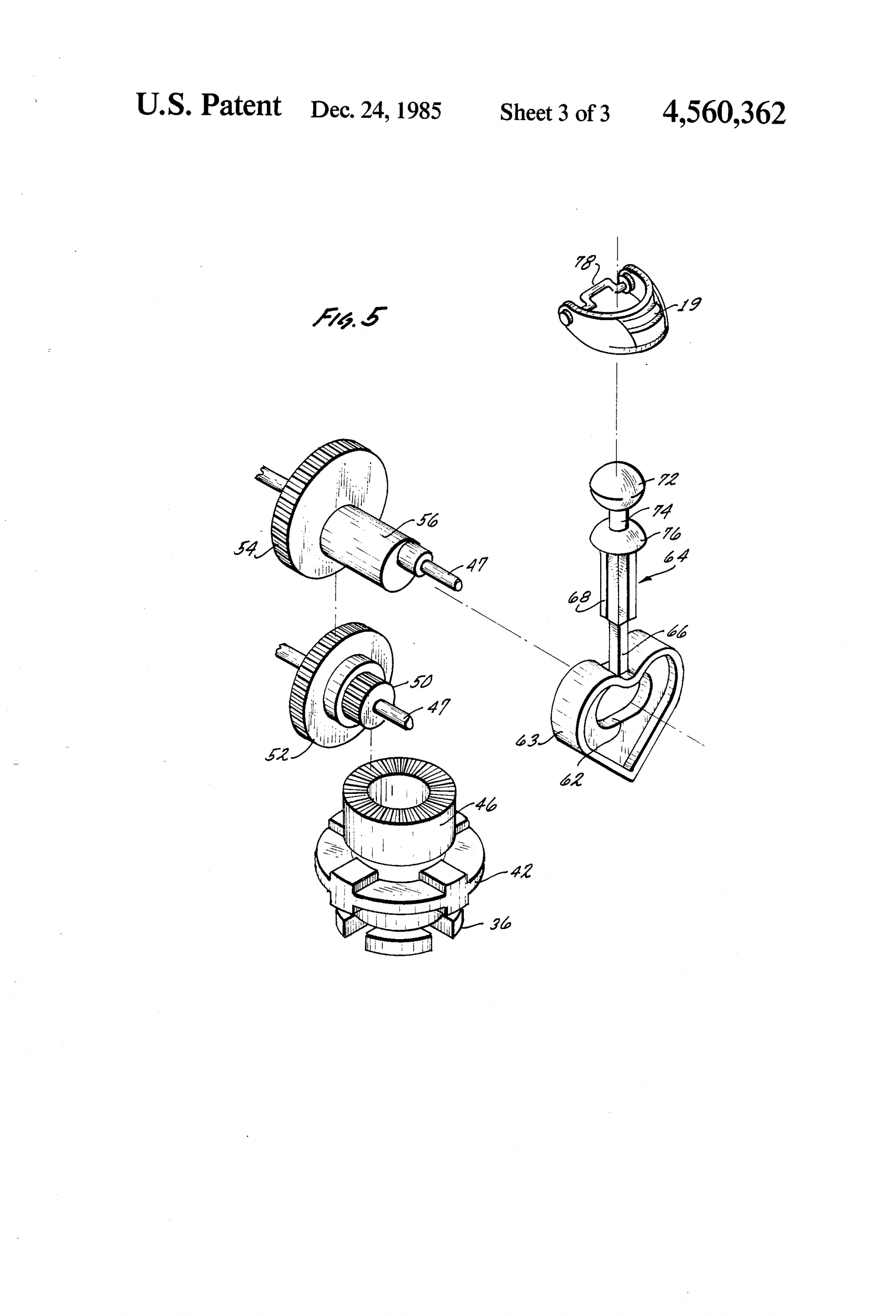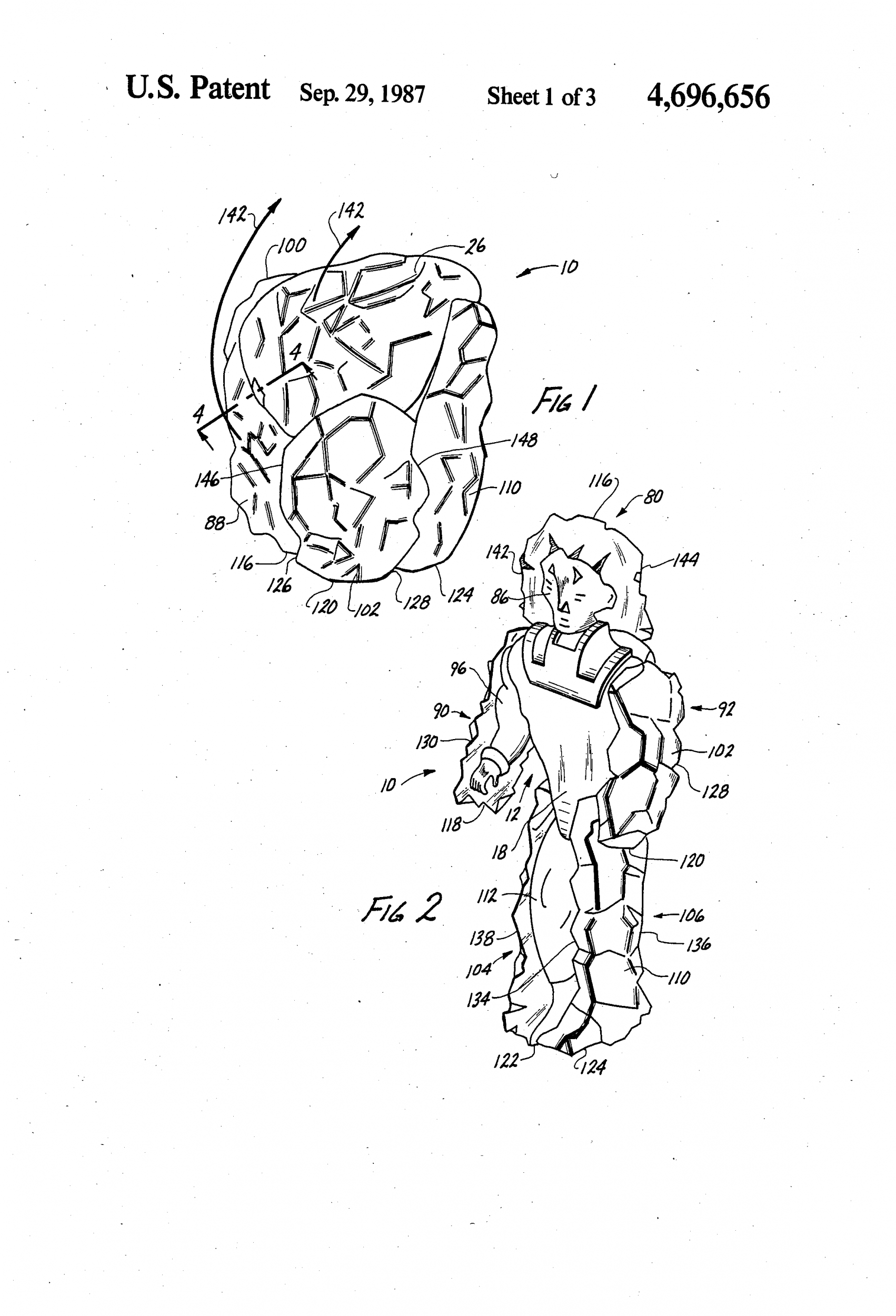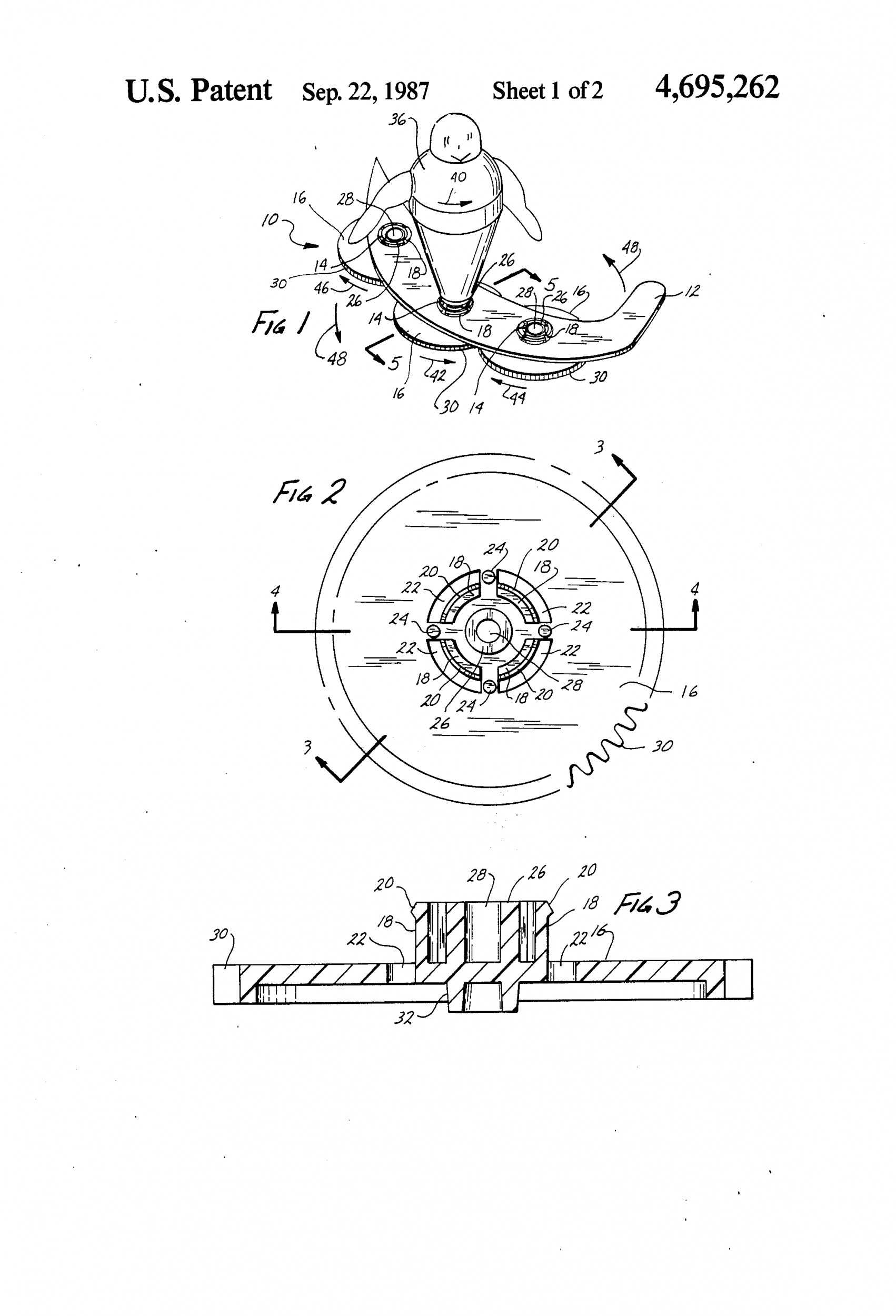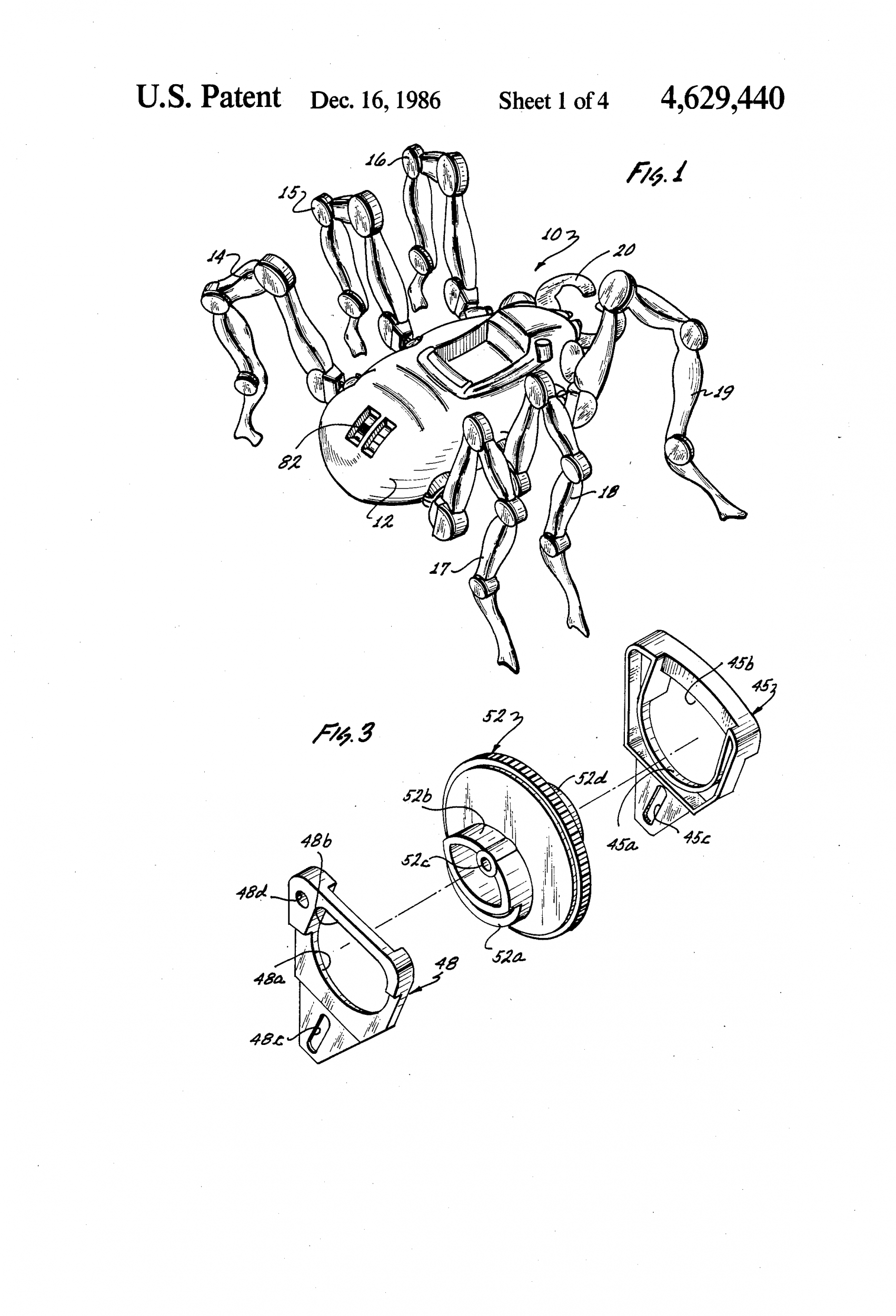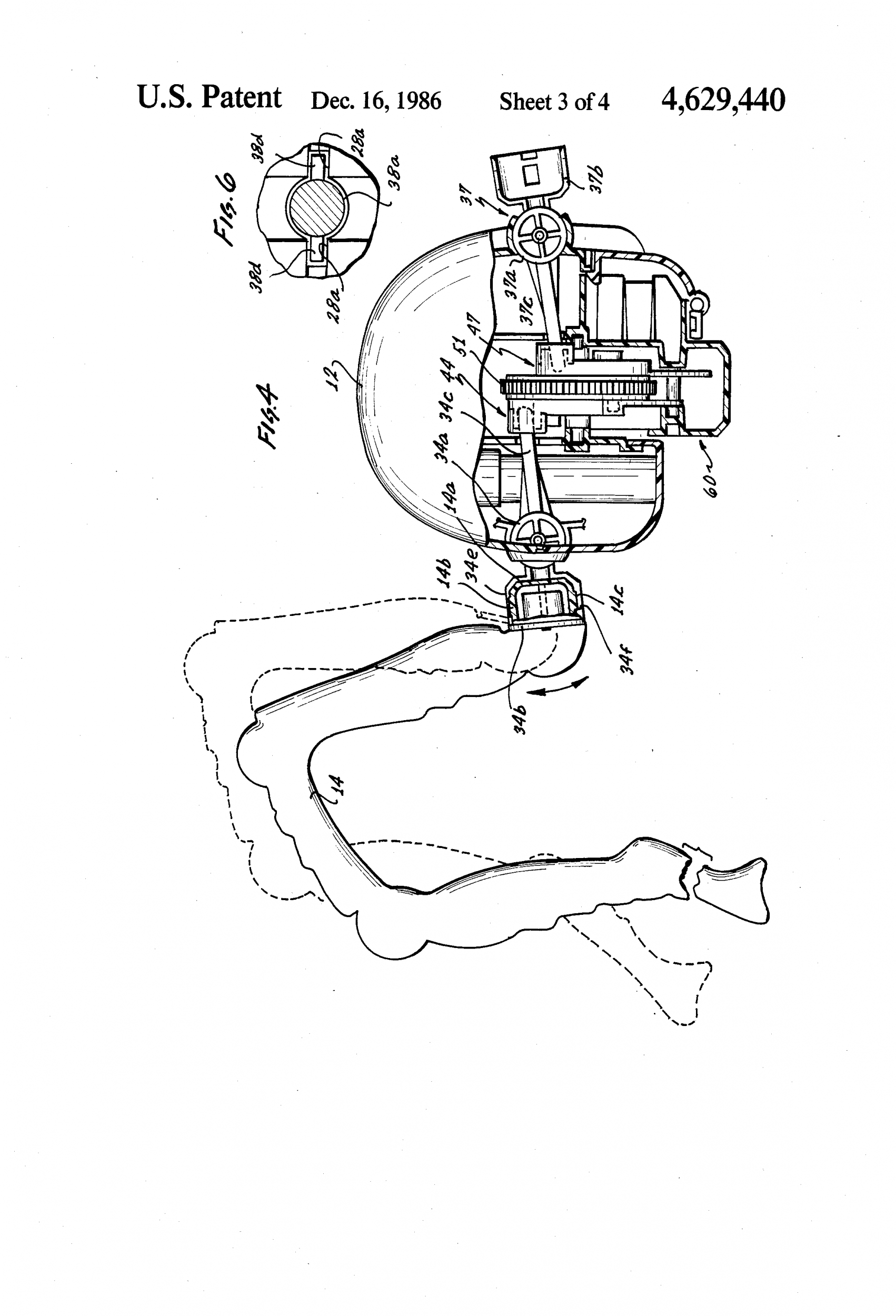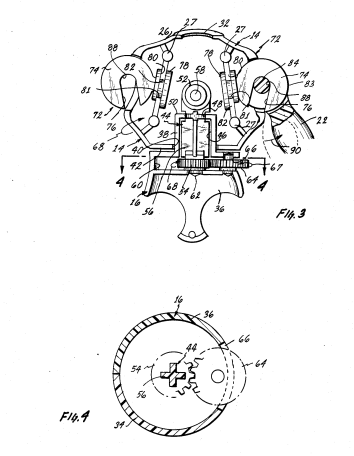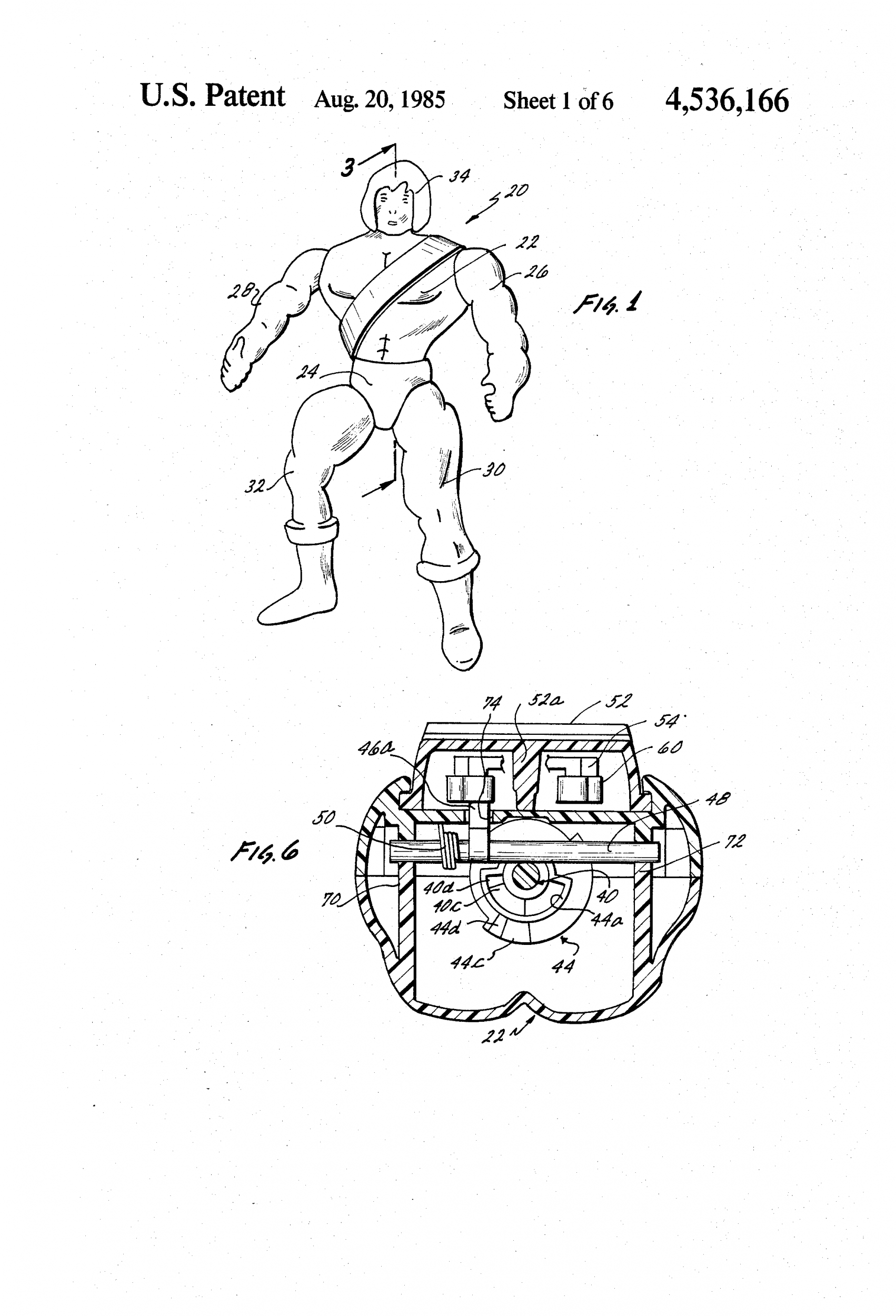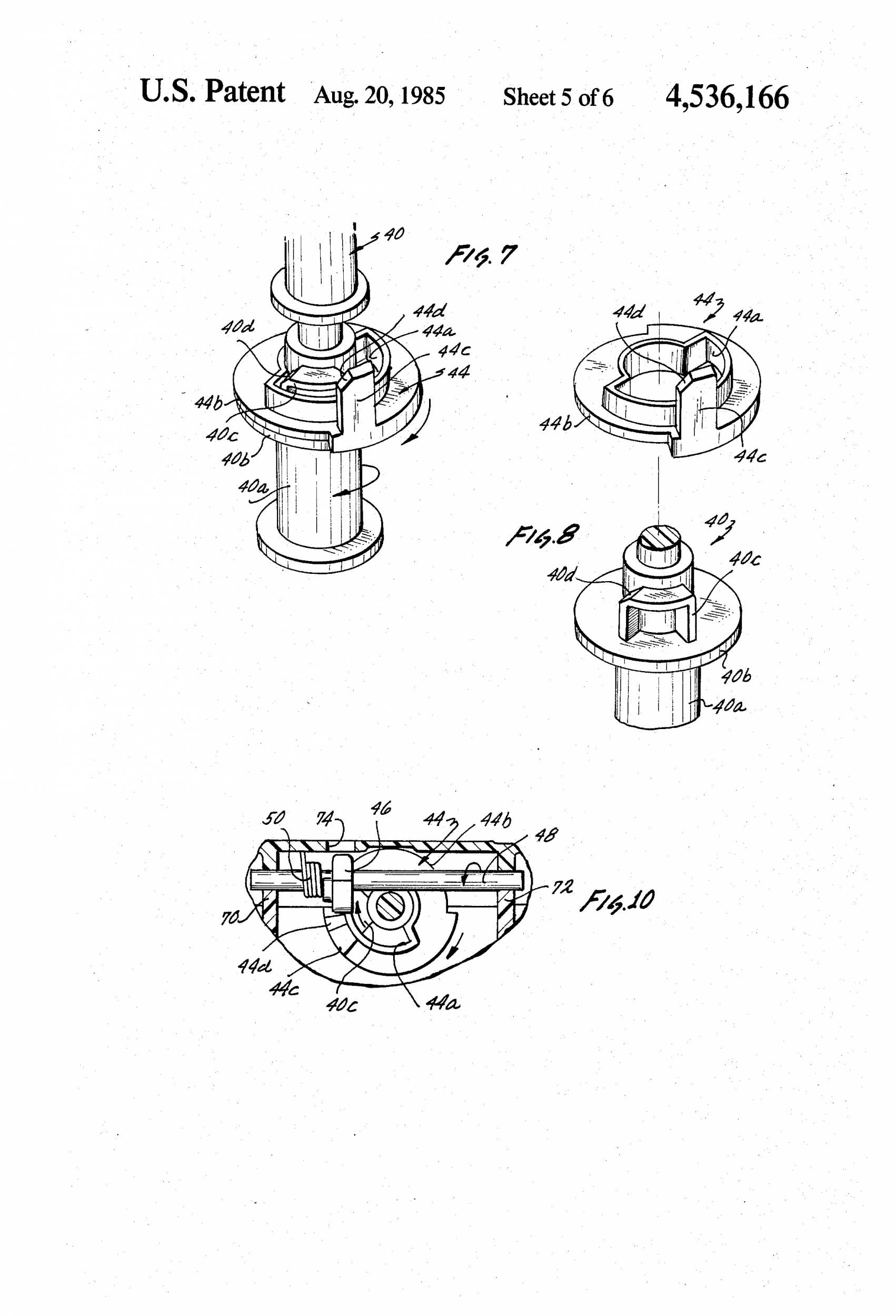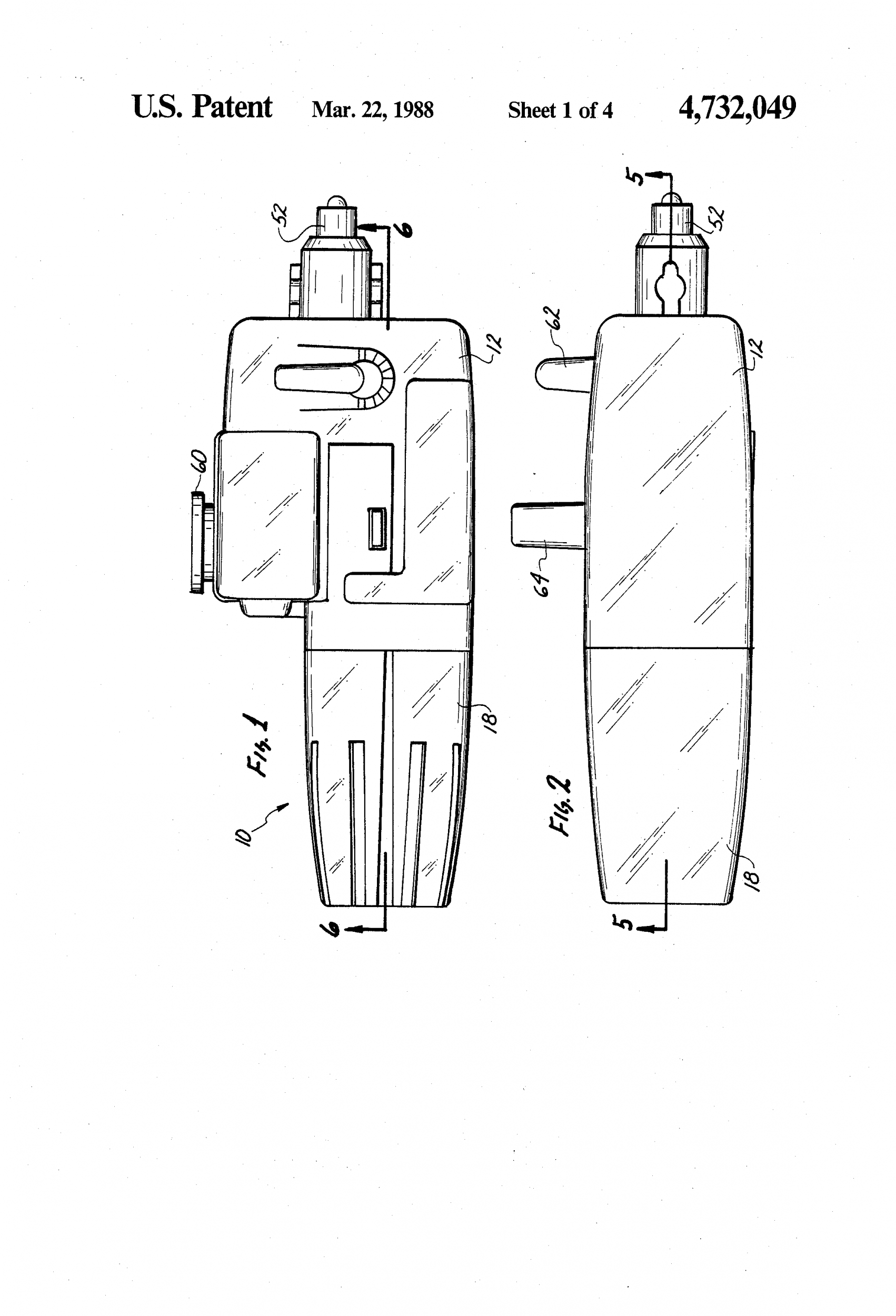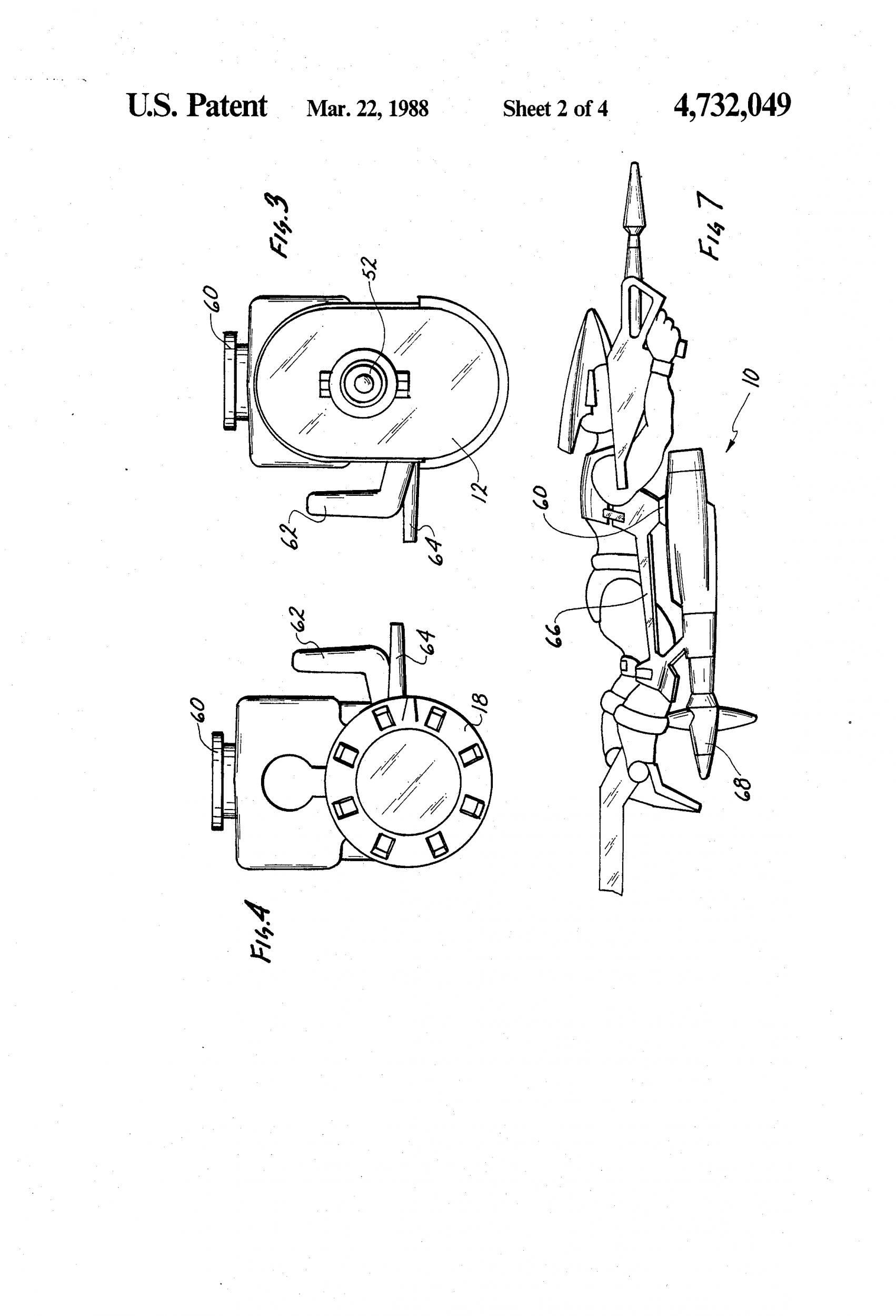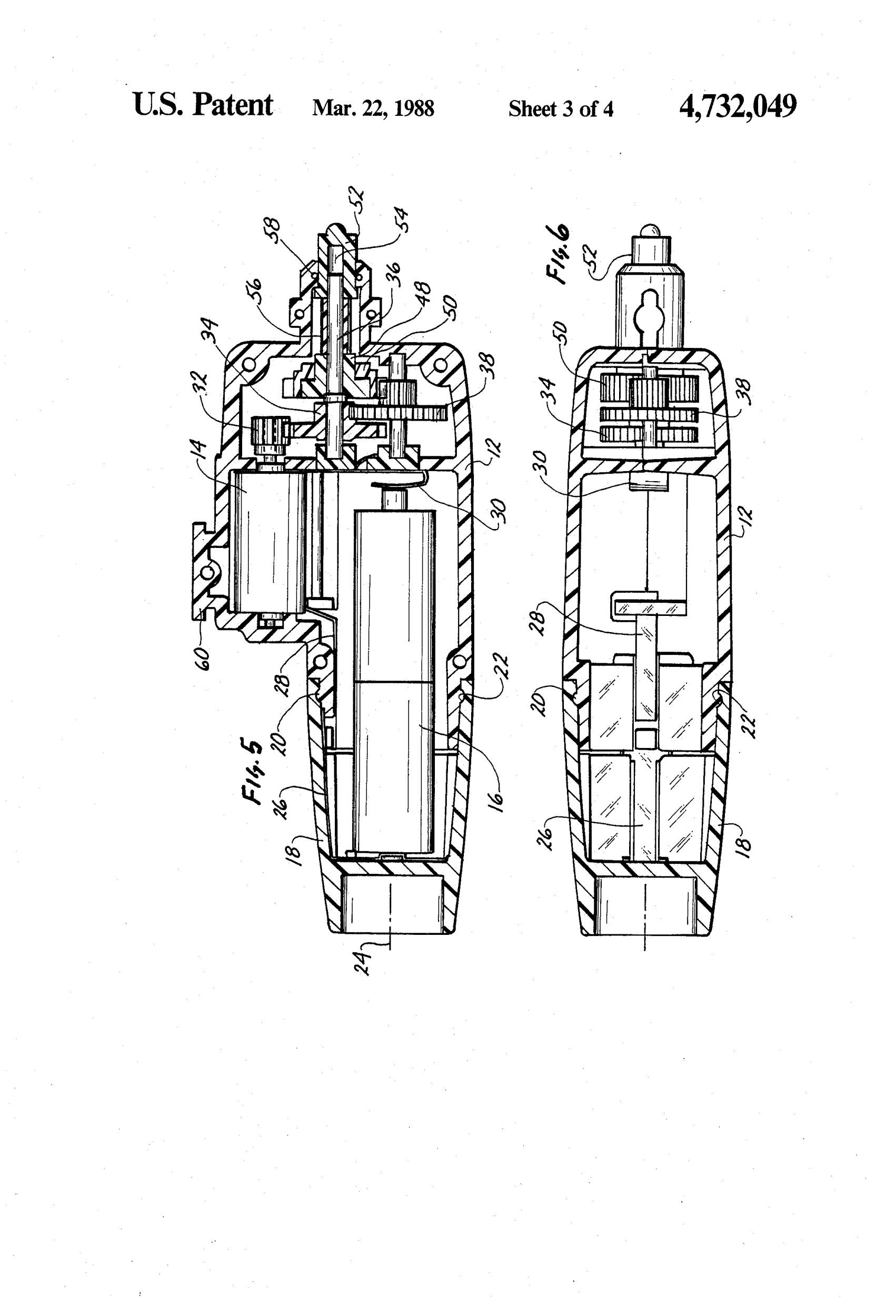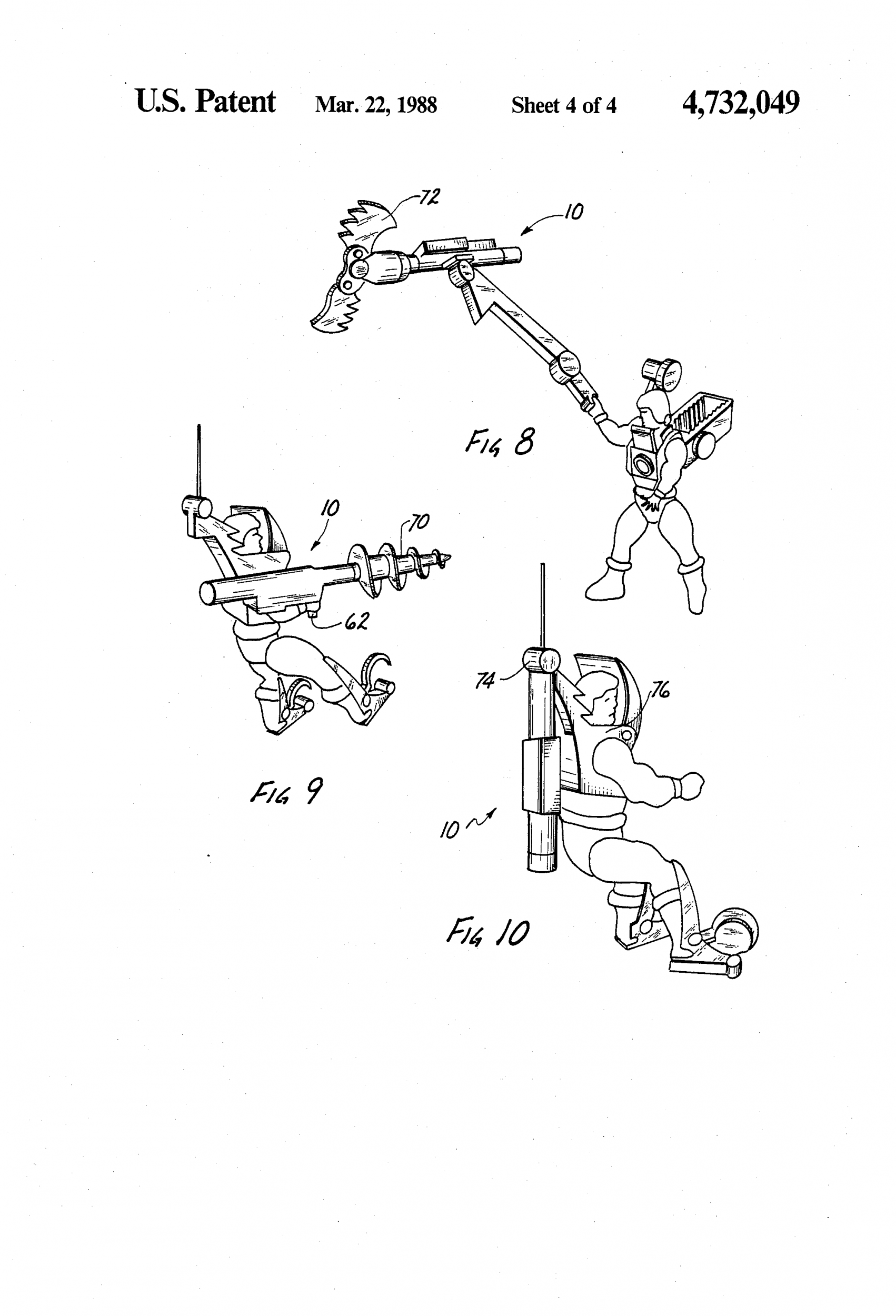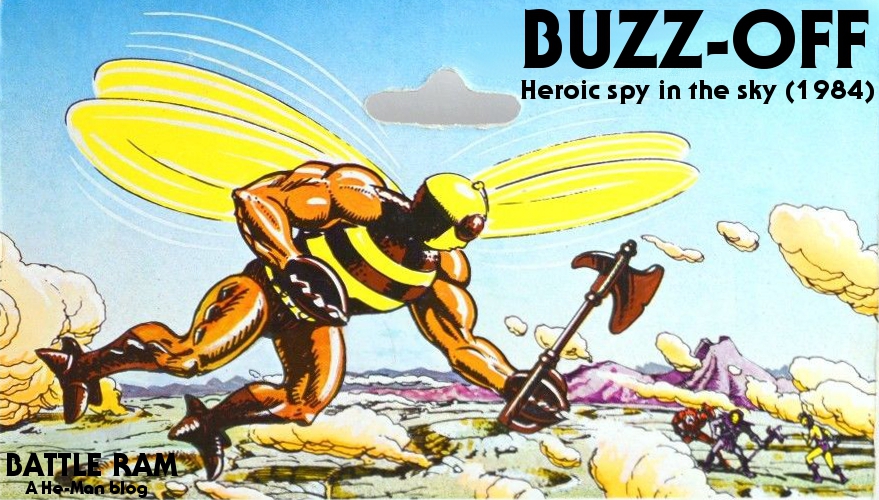
Buzz-Off is one of those figures that I never owned as a kid and had limited exposure to in general. I remember seeing him only once in the wild – when visiting some distant relatives for the first time. I remember their son showing me his He-Man collection, which included Mekaneck and Buzz-Off (the first time I had seen either figure in person).
My exposure to him as a character otherwise was mostly punctuated by his appearance in the Filmation cartoon episode, “Disappearing Dragons”, and his inclusion in a couple of my favorite mini comics.
Buzz-Off first appears in the December 1, 1982 Masters of the Universe Bible, under the name Bugoff. I believe that many of the characters listed in the Bible were just very early “back of the napkin” ideas without much development. In this case, Bugoff was based on a beetle rather than a bee, although Buzz-Off retained the high-tech wings in the description below:
BUGOFF* – part man, part beetle, but with high-tech wings, flies swiftly and fast. His sword and lance are his stingers. Bugoff’s beetle-like armor protects him from many dangers including some of the laser weapons of Skeletor and his crew.
*These names are not set yet and may change
In July of 1982, Colin Bailey finished an illustration of a character called Wasp Man, who has many design touches in common with the final Buzz-Off action figure. He has the wings pinned to his back, the yellow and brown striped chest, the helmet with the enlarged insect eyes, the clawed hands, and the enlarged monster toes.
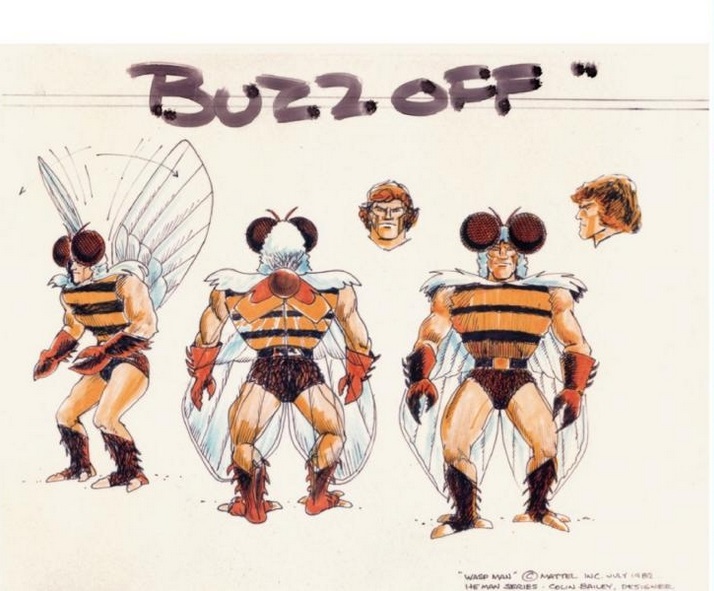
There are a few differences from the final figures as well. Wasp Man has spiny protrusions on the sides of his lower legs, and it looks like his clawed hands were supposed to be gloves. His thighs lack the bony protrusions of the final toy. He has white fur around his shoulders and head, and his wings are white and almost moth-like. But the most obvious difference is the head – it’s a reuse of He-Man’s head. From the working name Wasp Man it doesn’t sound like he was supposed to be a kind of He-Man variant, so the idea of reusing the head from the main protagonist in this way is rather bizarre. Then again, it’s possible that part of the original He-Man head was used as a basis for Mekaneck, so it’s not unheard of.
In this early mock-up of the figure (below), we see a hand-painted mashup of parts, with He-Man’s head (with brown hair instead of blond) and limbs borrowed from Zodac. The striped chest on this piece almost seems to resemble a rib cage. You can see some very thin insect wings on his back, and of course a large helmet with a somewhat creepy-looking insectoid face.
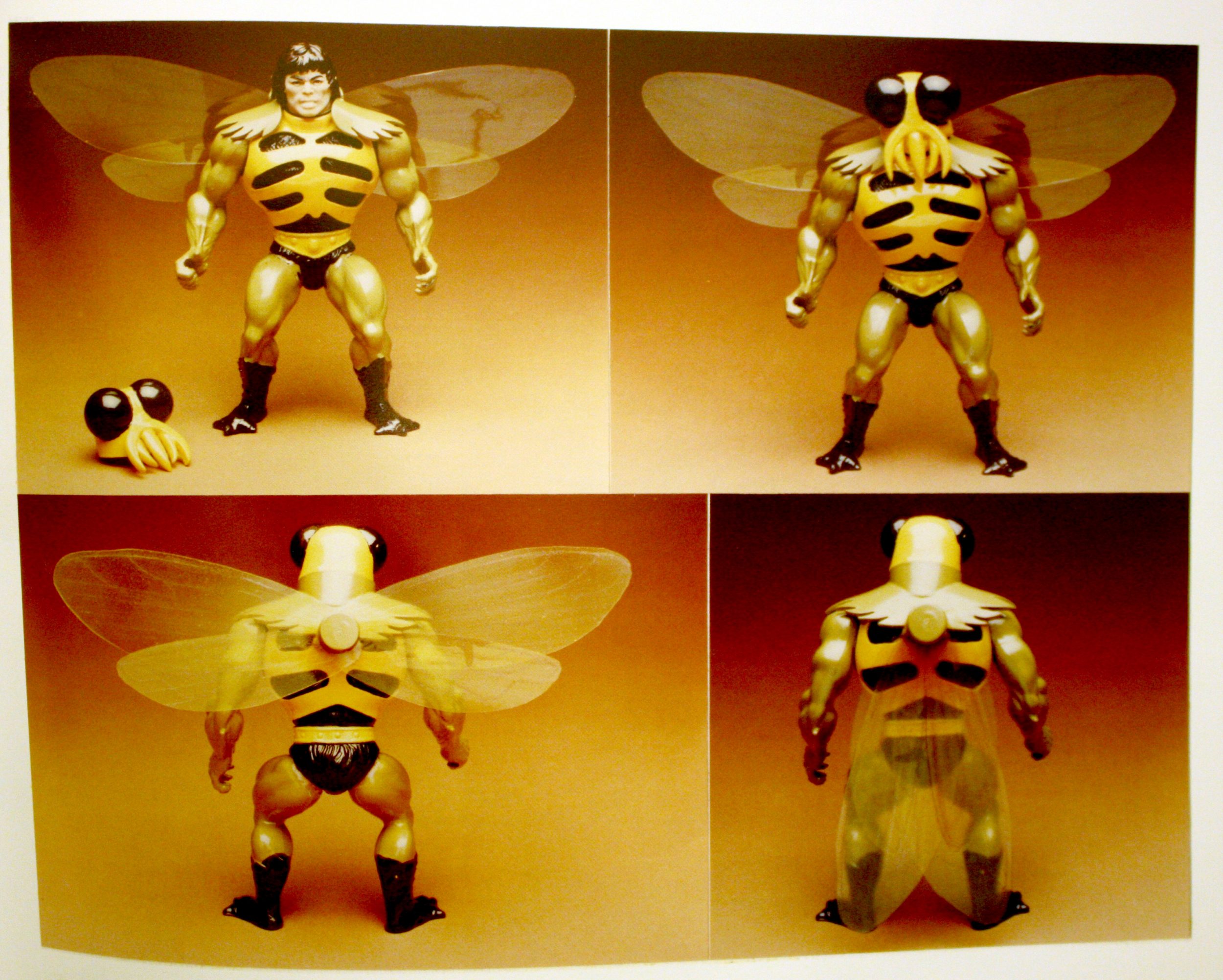
Given the parts used here, as compared to the concept drawing, it’s likely that Buzz-Off’s limbs had not yet been sculpted, and the designers went with the closest analogs they had on hand.
Interestingly, there was a version of He-Man released with brown hair – often called Savage He-Man (or erroneously “Wonder Bread He-Man”), he seems to have been been given out as part of a promotion, but otherwise very little is known about him. He may not have anything to do with Buzz-Off, but I thought it was an interesting little connection.
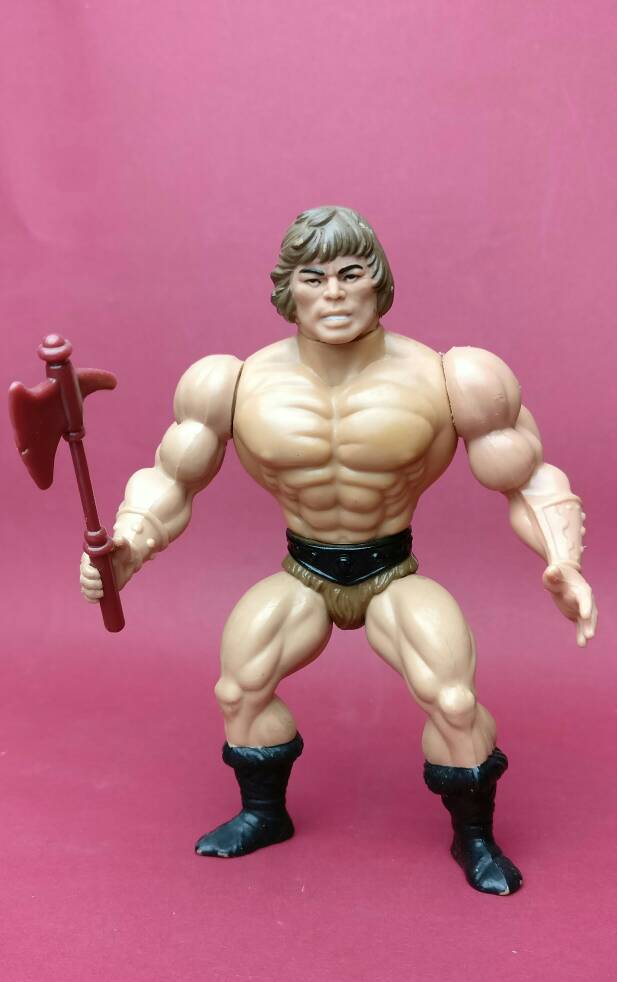
Roger Sweet designed a character called Mandible Man, who seems to fit the description of Bugoff from the MOTU Bible. Mandible Man even shares the limbs and torso that Buzz-Off had (also used selectively on Clawful and Whiplash). Colin Bailey’s design for Wasp Man don’t seem to exactly match those final sculpted parts, although it certainly looks like an early pass at them. Mandible Man appears to have been made with the exact final sculpted Buzz-Off/Whiplash parts in mind. Putting on our historian’s hat, that should tell us this design came after these parts were sculpted, and Wasp Man came before.

The final version of Buzz-Off is mostly derived from the original Colin Bailey artwork. Wisely they decided to give him a unique insect head, which has none of the creepiness of the prototype model’s mask. The final, hand-painted prototype appears in the promotional image below:

The hand-painted prototype also appears in a 1984 Mattel German catalog. In this imeage you can see that the model appears to have been cast in pink and painted over by hand.
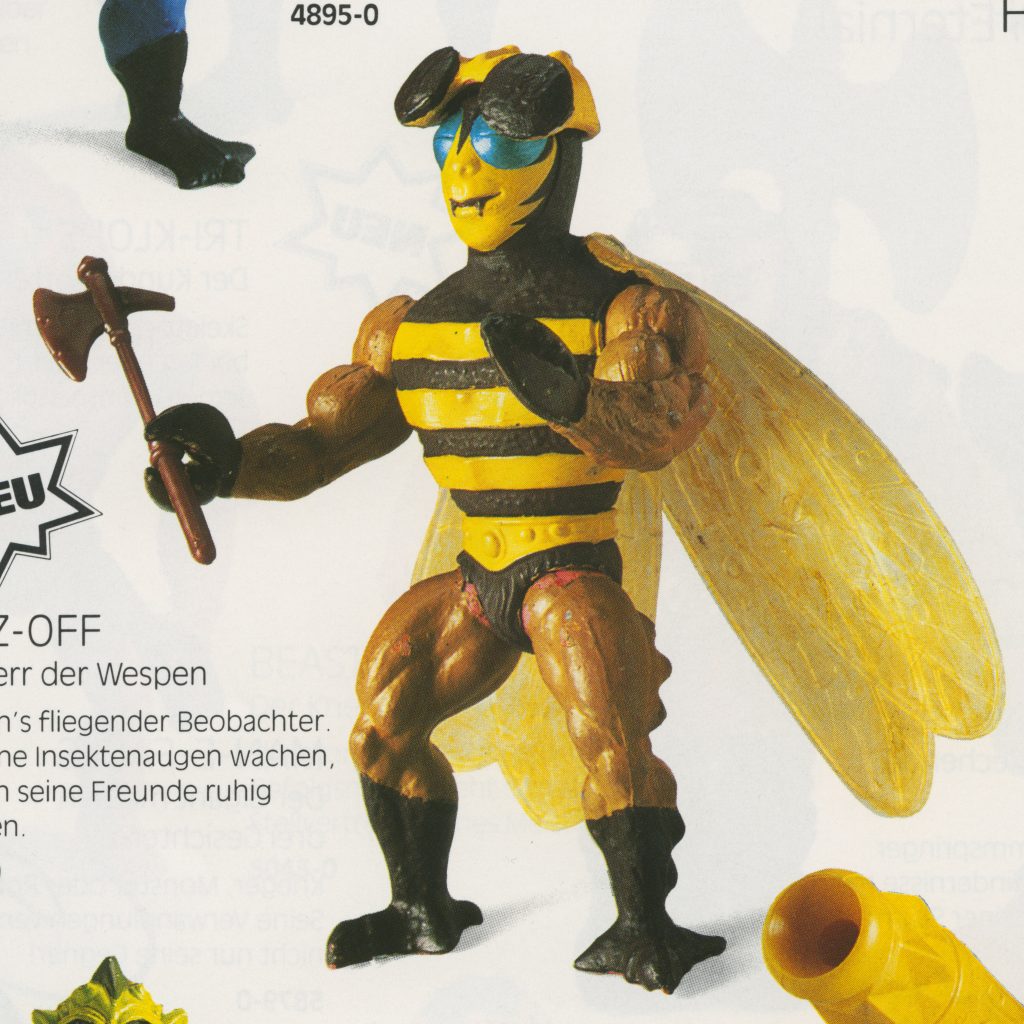
This cross sell artwork used to promote the toy is quite faithful to the design of the final prototype. The final prototype itself is identical to the final toy, except for the eye color, which was changed to blue/green for the mass-produced toy.
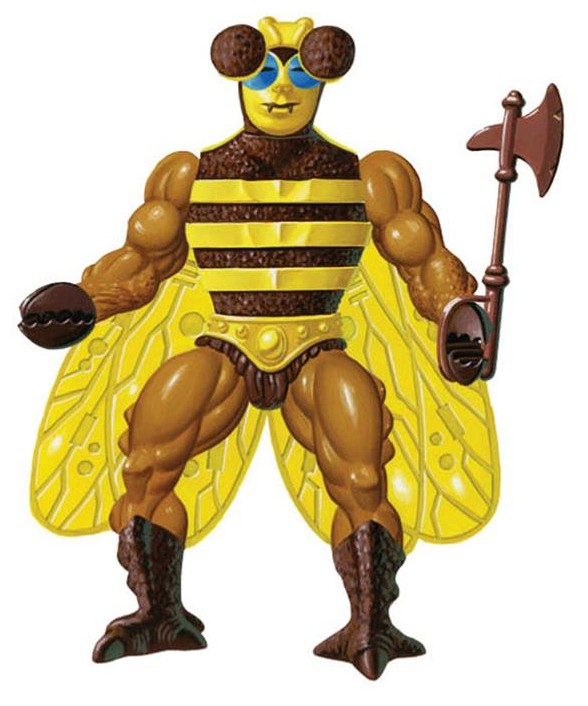
His clawed arms have the same spiky protrusions as the concept art, although now they look like a part of his anatomy. Similar structures were added to his thighs. His helmet was removable, but so loosely fitting that it was easily knocked off. For a weapon he was given a brown version of the axe from Castle Grayskull’s weapons rack, albeit with an extra loop to allow him to hold it. Even so, it didn’t work terribly well – had his claws been rotated 90 degrees, he could have held the weapon much more naturally.




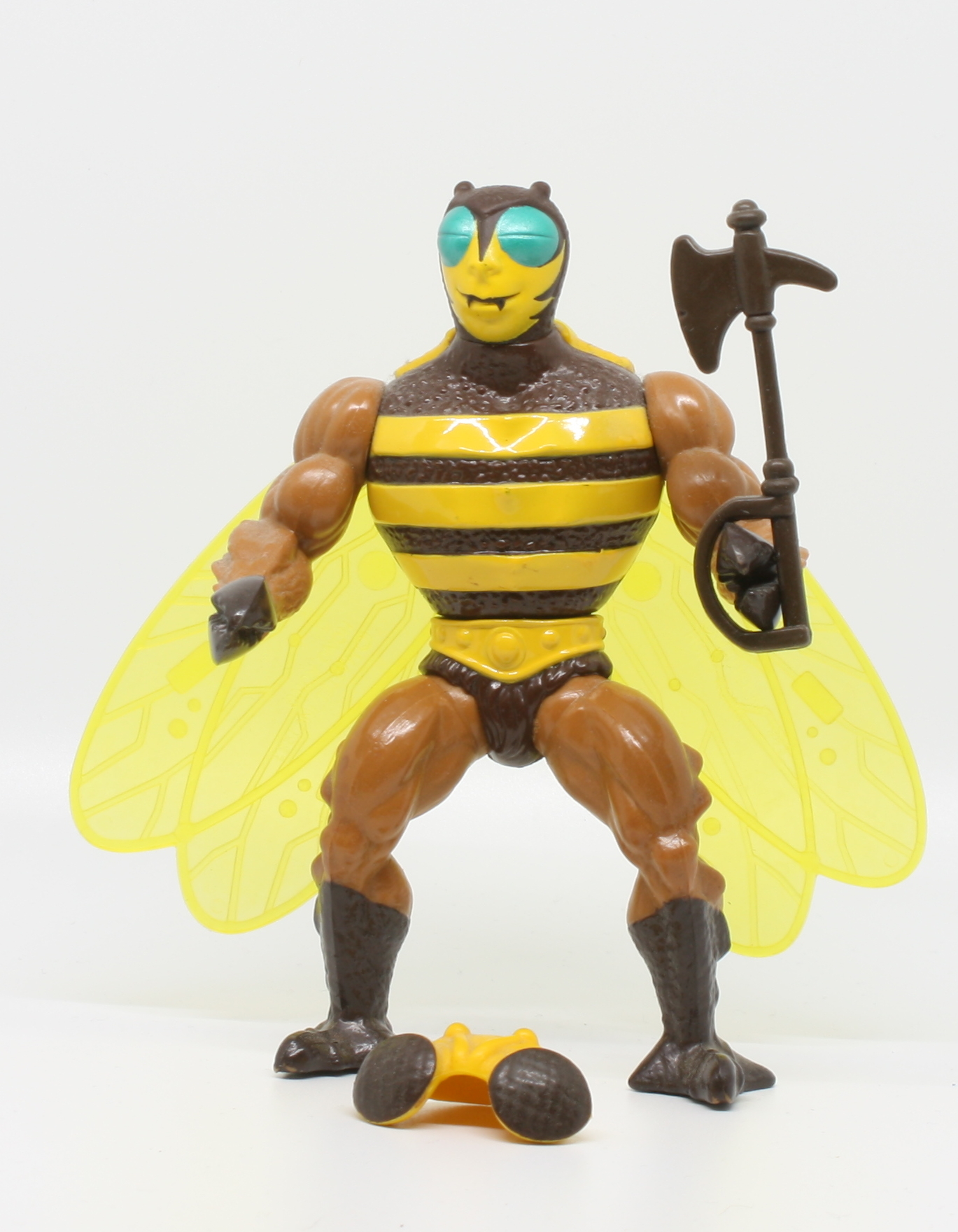
One my my favorite things about Buzz-Off is the design of his chest. The brown area is covered in little bumps, while the yellow bands that go around this chest are mostly smooth, with a few alternating ridges. That makes him wonderfully tactile in hand.

His wings are quite remarkable as well. Cast in translucent yellow, they have little mechanical parts throughout the structure. There are lots of details to discover in this toy.

Although Buzz-Off’s limbs are technically new pieces, it is apparent that they were made by modifying the original arms and legs used on He-Man. The musculature, in the areas where there are no added ridges or bumps, is identical.
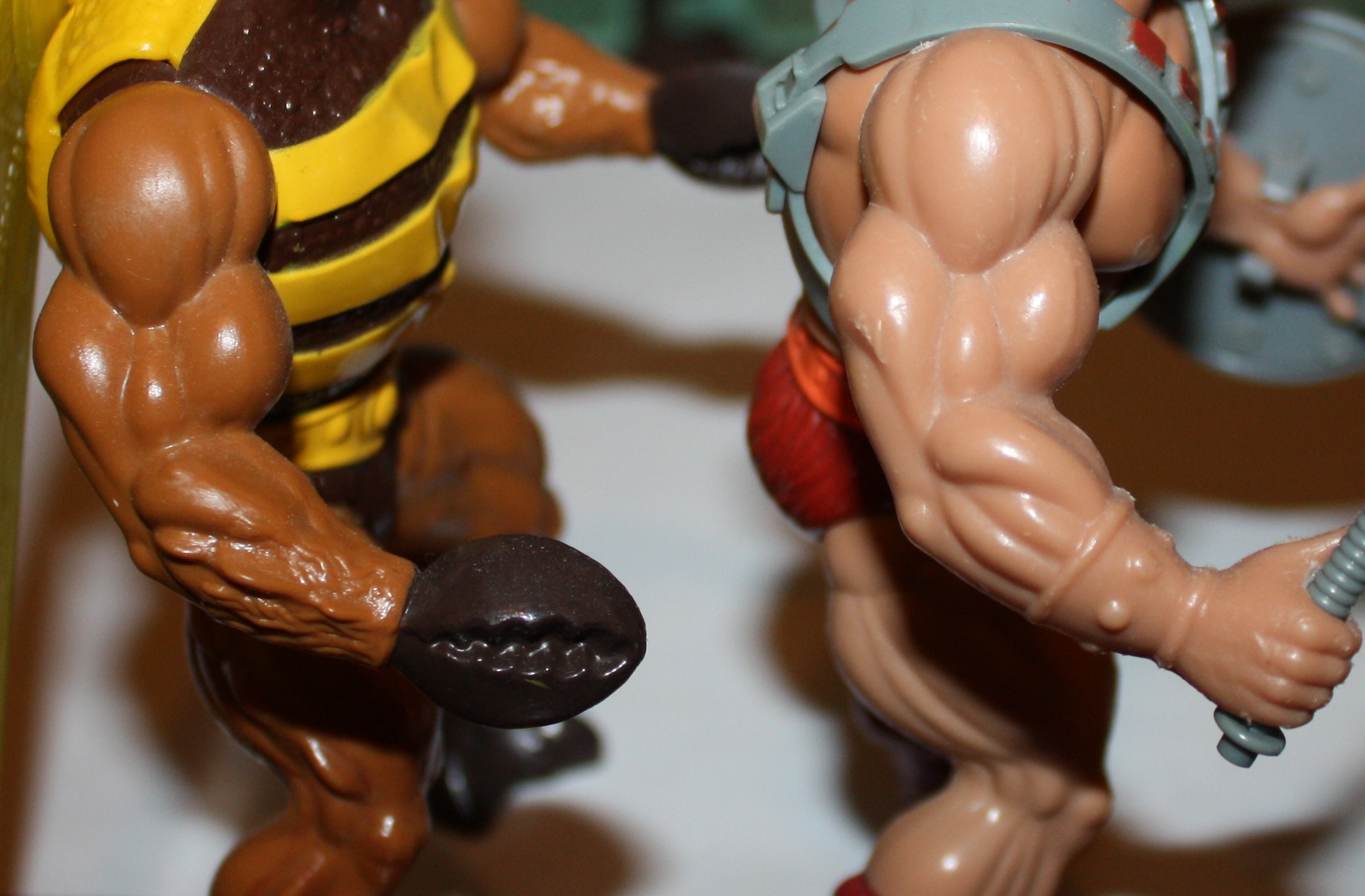
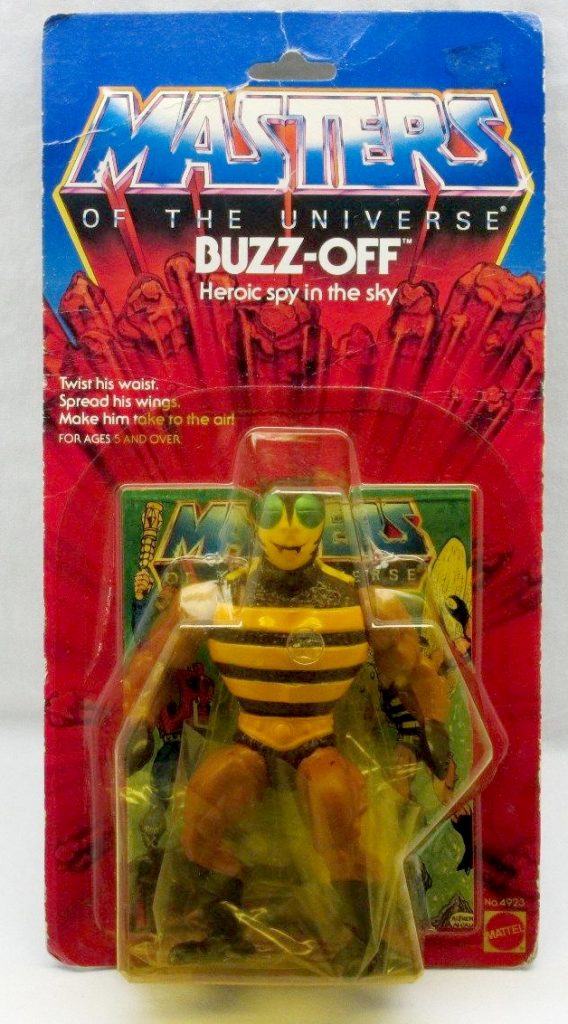


The action illustration on the back of Buzz-Off’s card was done by Errol McCarthy. There are actually two different versions of the illustration on the printed cardbacks. Both of them are different from an earlier take that Errol drew that was not used. I’ll show them in what I believe is the order of design. You can see that Buzz-Off starts off with feet that are quite bird-like in the line art version below:

Cards marked “NEW!” on the front (representing the early release cards) often feature the illustration below on the back, which is similar to the illustration above, but with feet that are a bit closer to the shape of the toy:
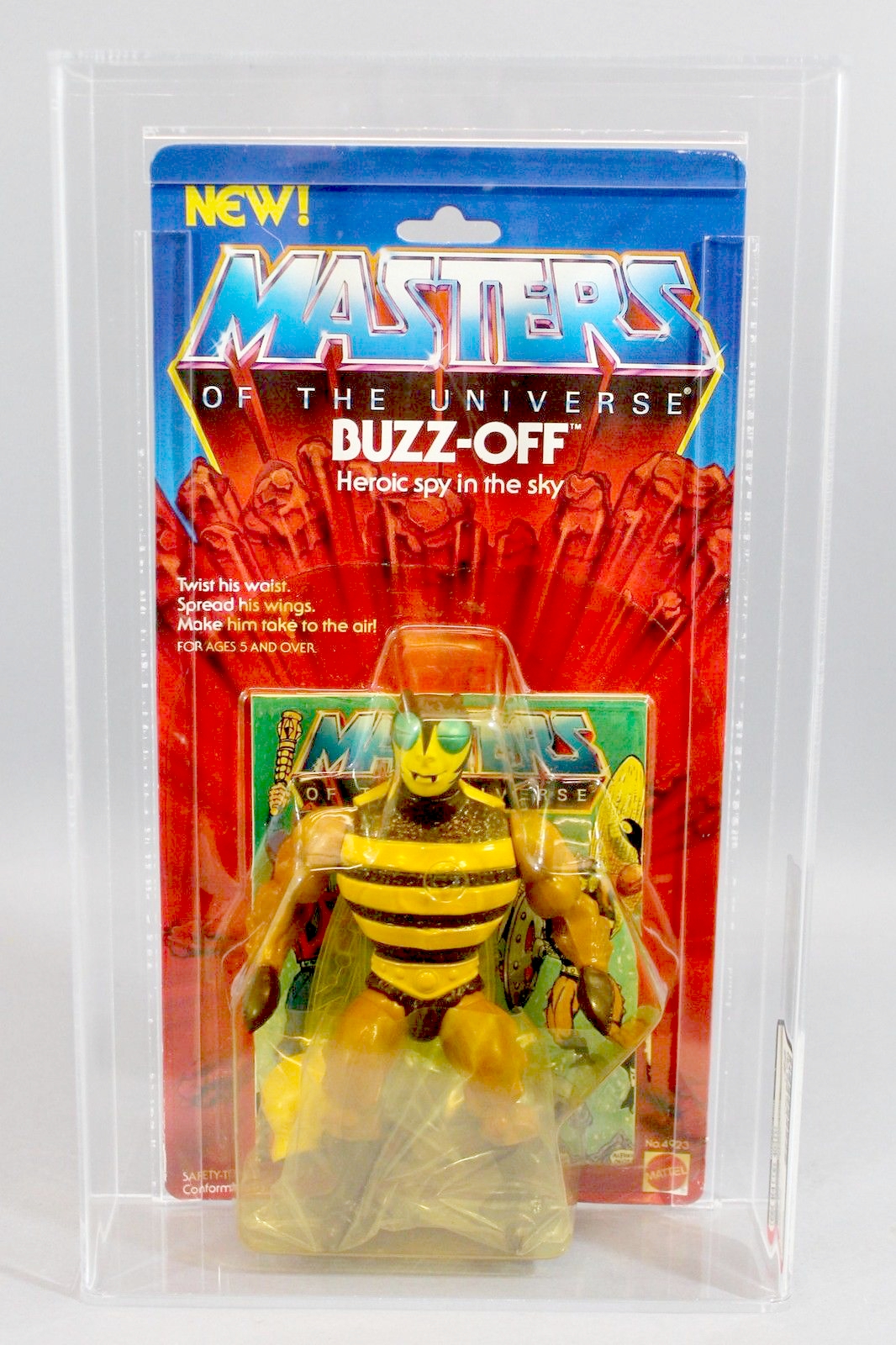

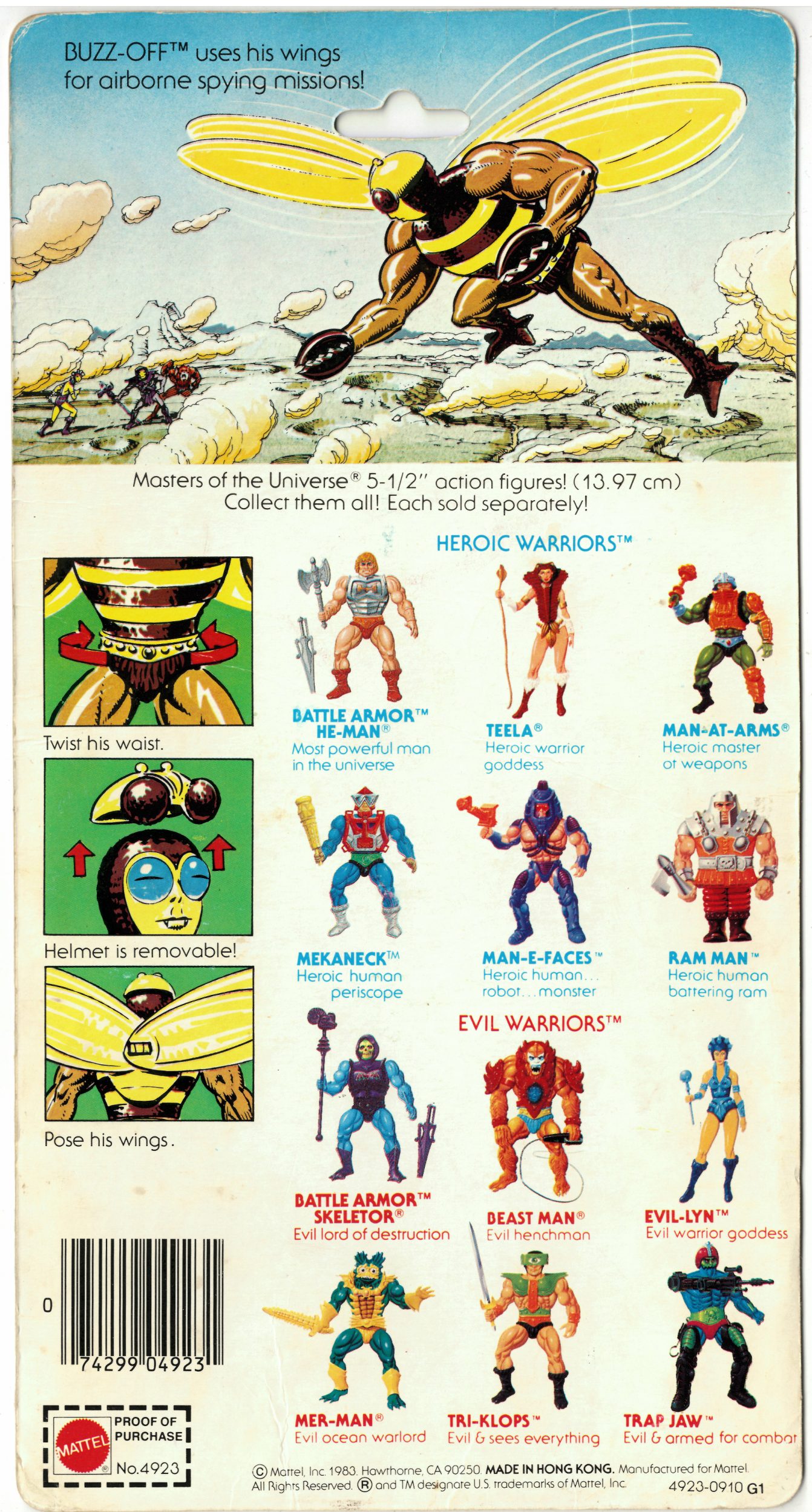
The more common version of the cardback illustration has feet that are closer still to the look of the toy, with thicker toes and clearer delineation between claws and feet. The image is also flipped in mirror image from the original.

McCarthy also illustrated Buzz-Off (along with many other characters) for licensed He-Man T-shirts. This one has feet reminiscent of Skeletor’s:

Buzz-Off was also sold in a gift set with Moss Man and Mekaneck, and in a JC Penny two-pack with Fisto.

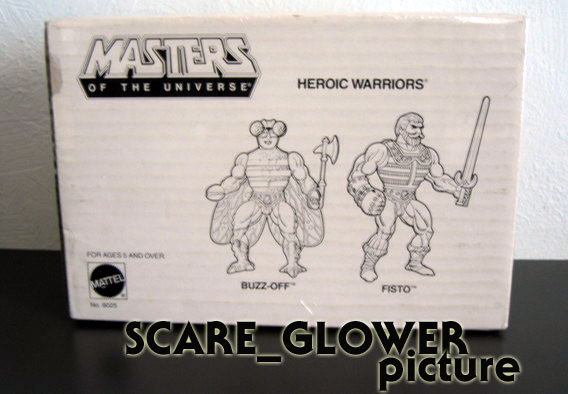
Buzz-Off makes a couple of appearances in the MOTU box art, in the illustrations for Battle Bones and The Fright Zone. Both were painted by William George:
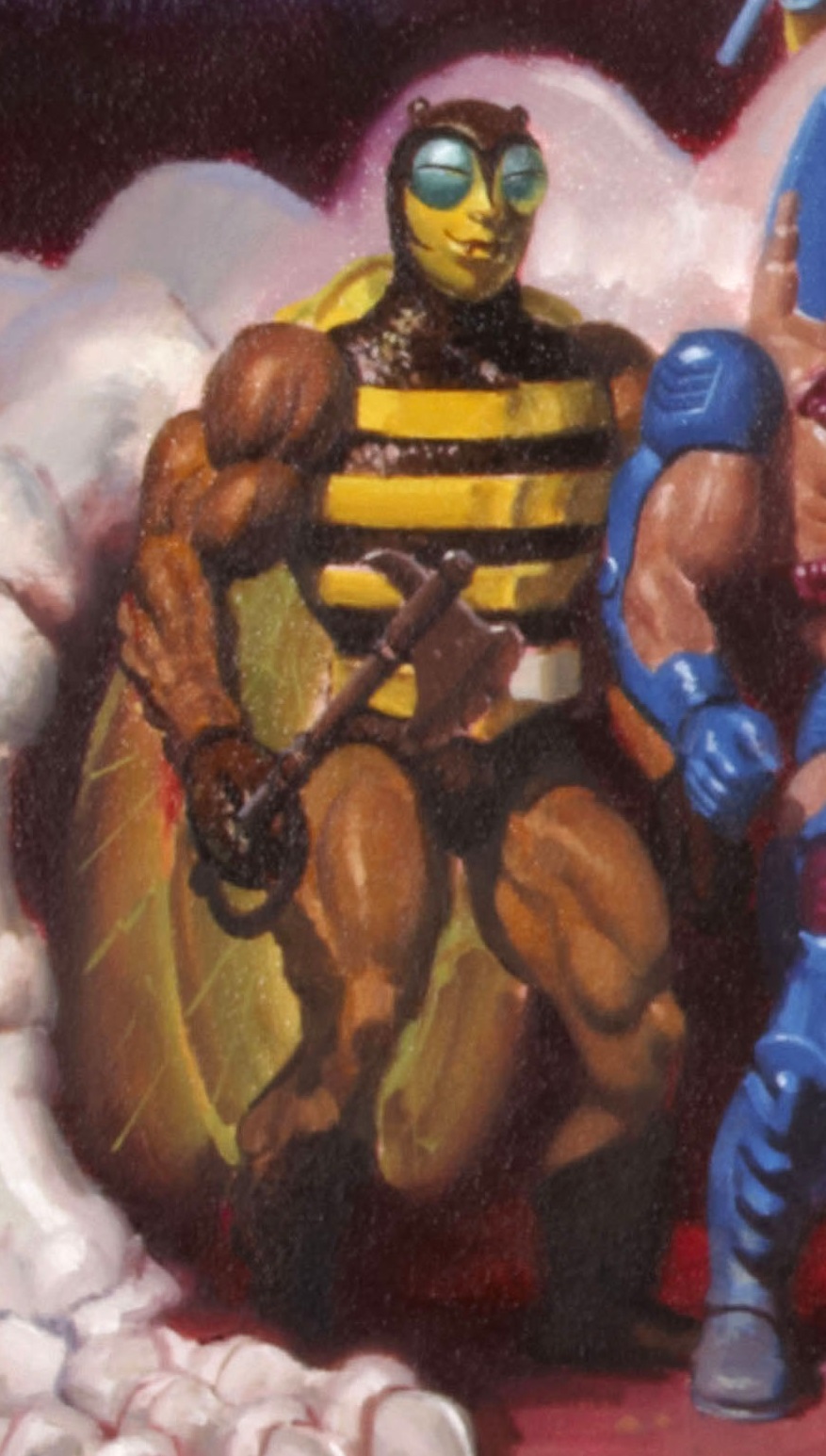
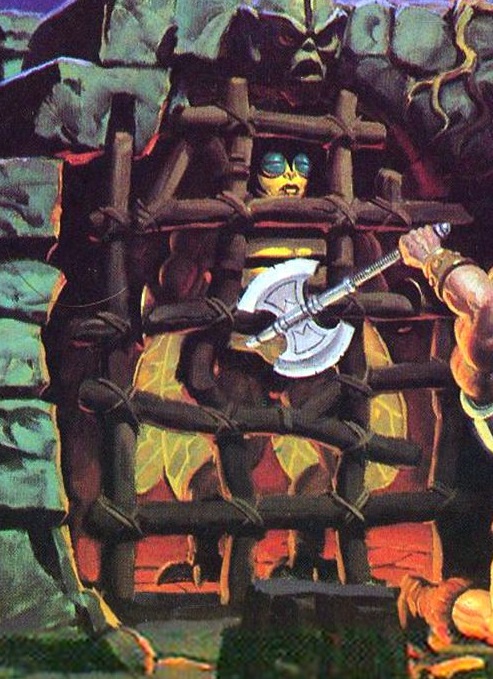
Buzz-Off also shows up in a few posters by Earl Norem and William George:
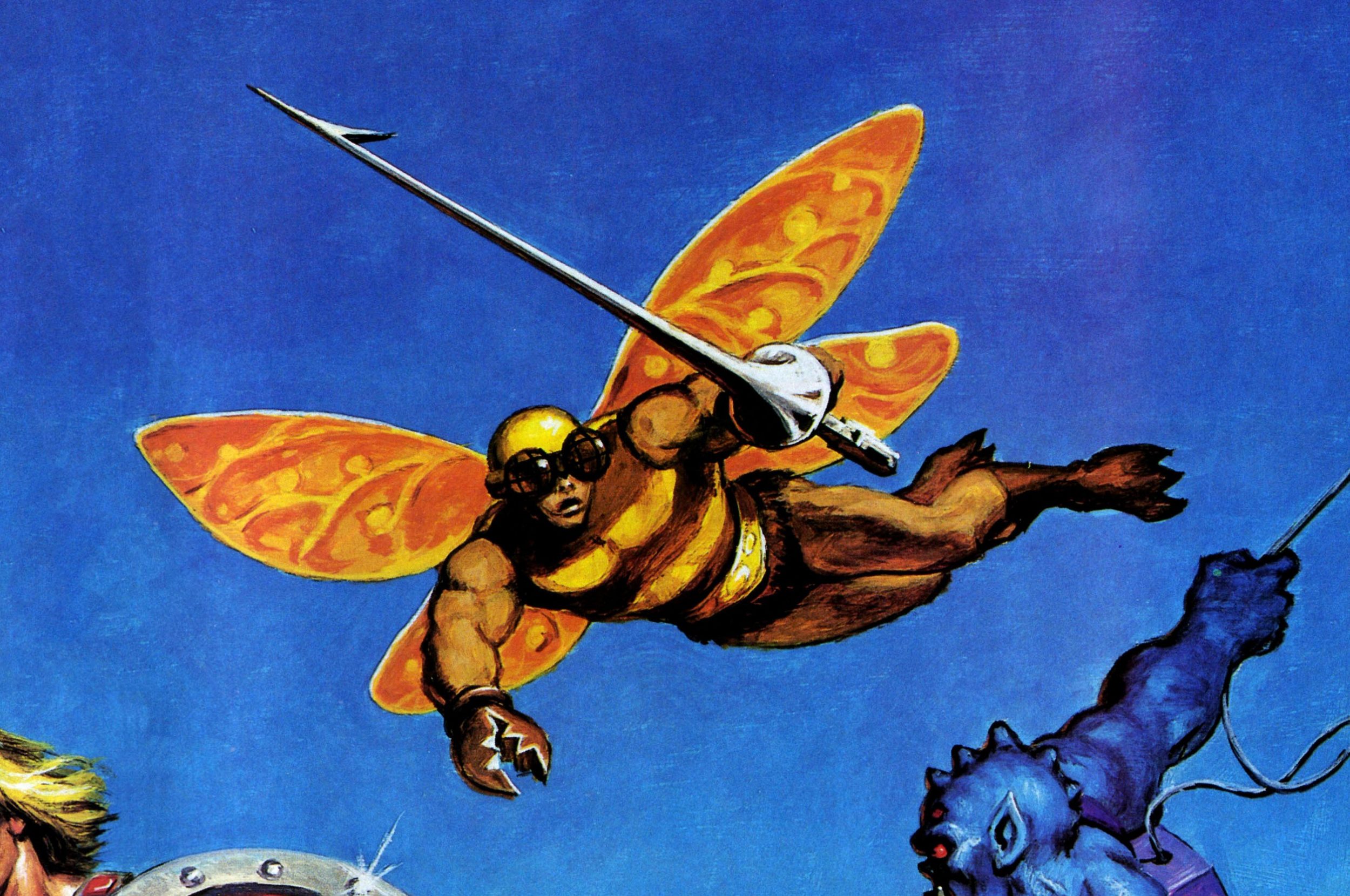

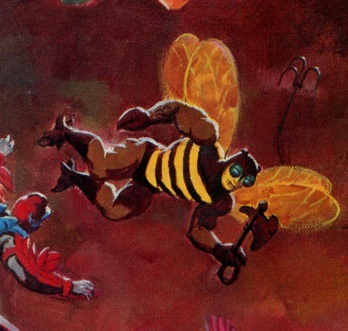
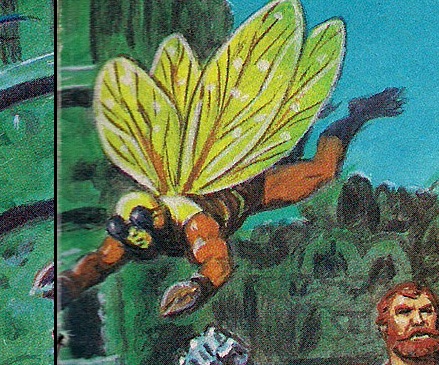
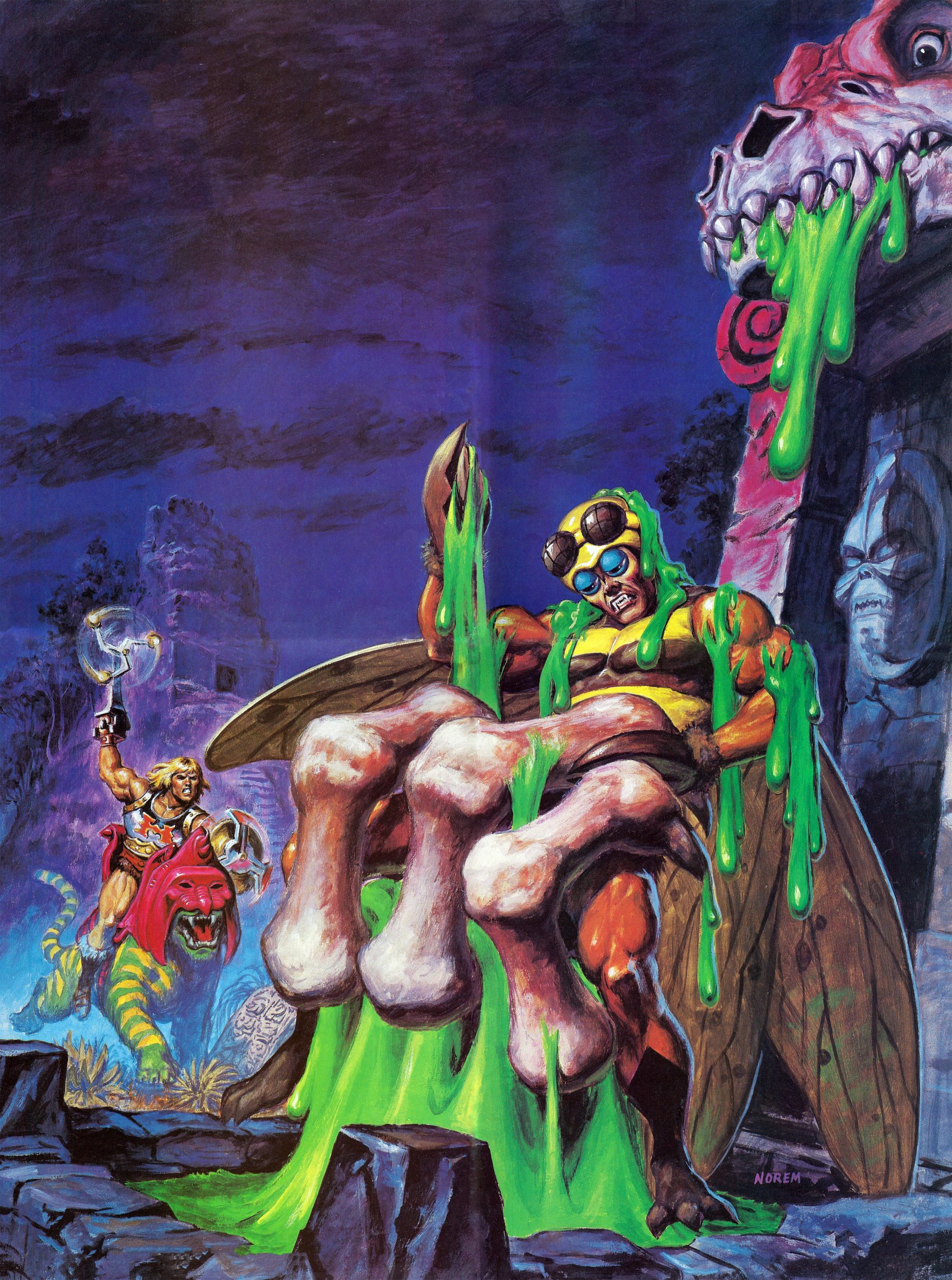
Buzz-Off shows up fairly frequently in the mini comics. My favorite appearances are in He-Man and the Insect People and The Obelisk, due in large part to the artwork by Alfredo Alcala.
In Insect People, He-Man, Teela, Buzz-Off and Mekaneck discover a race of insect-like people living under ground. Apparently, however, they are unrelated to Buzz-Off and no mention is made of any kind of connection between the two (mini comic images via the He-Man and the Masters of the Universe Mini Comic Collection).
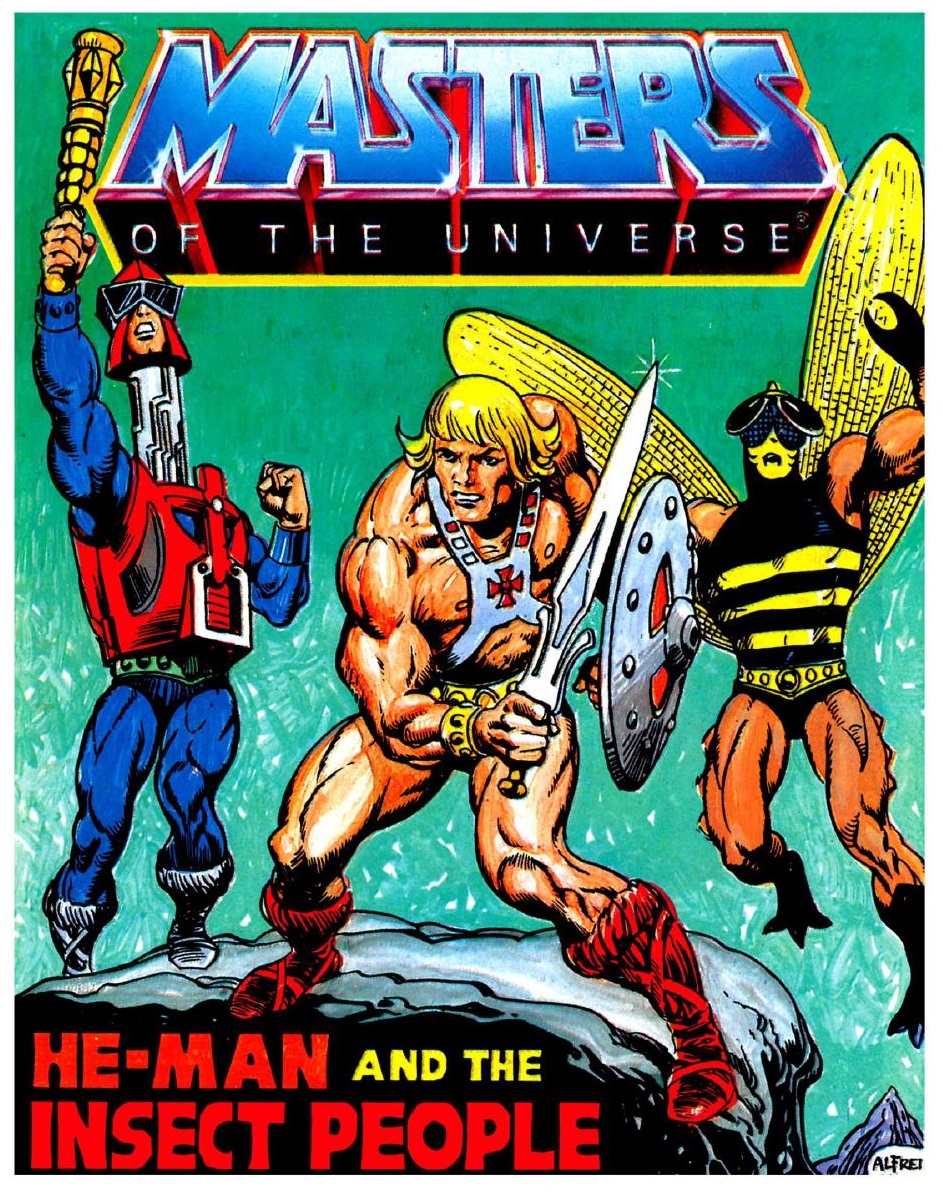
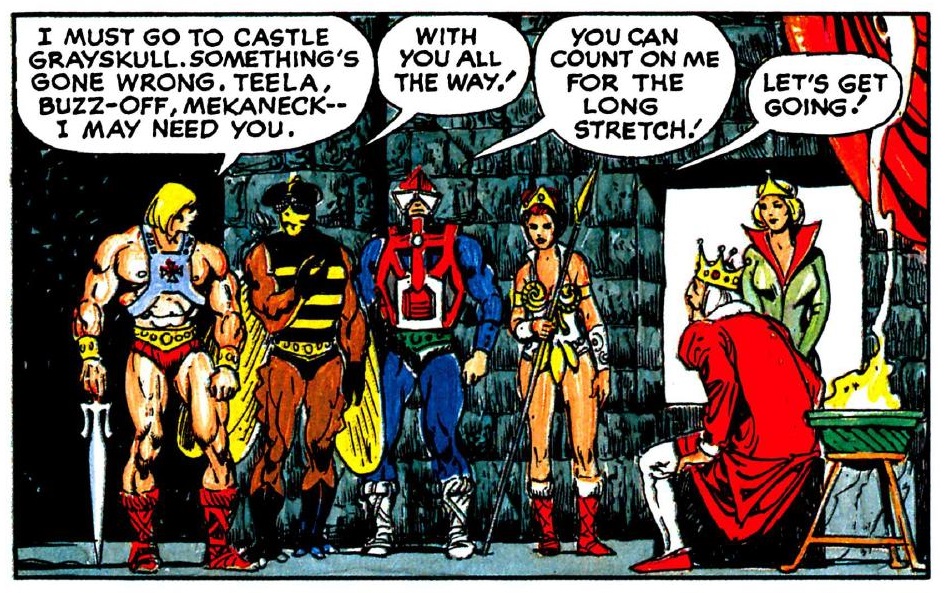
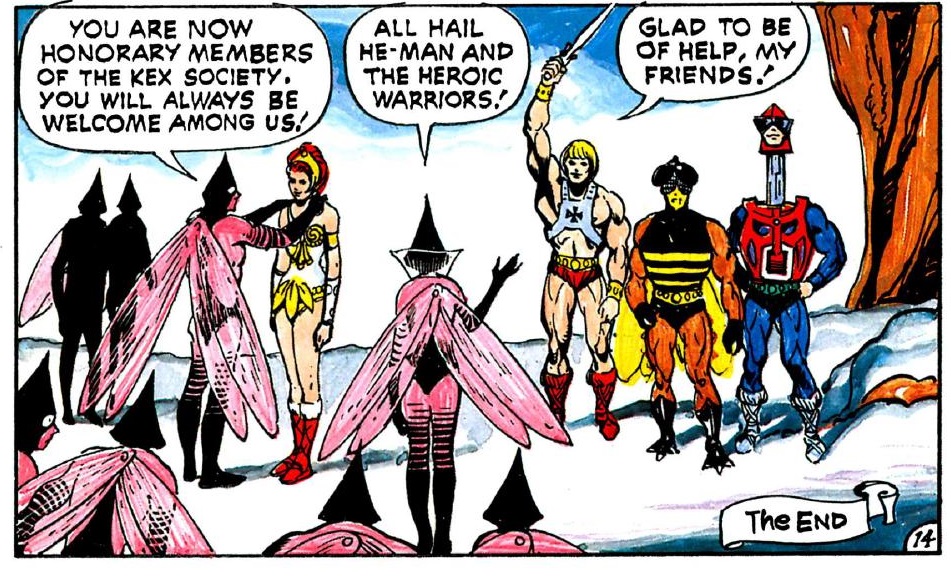
In The Obelisk, Buzz-Off plays a much more active role in the story, first as spy, and then as a warrior who manages to send Skeletor running:




Buzz-Off is also a major character in Grizzlor: The Legend Comes Alive! Buzz-Off scares his compatriots (Man-At-Arms, Fisto, and Teela) with a spooky campfire story about a legendary monster called Grizzlor, who turns out to be very real.


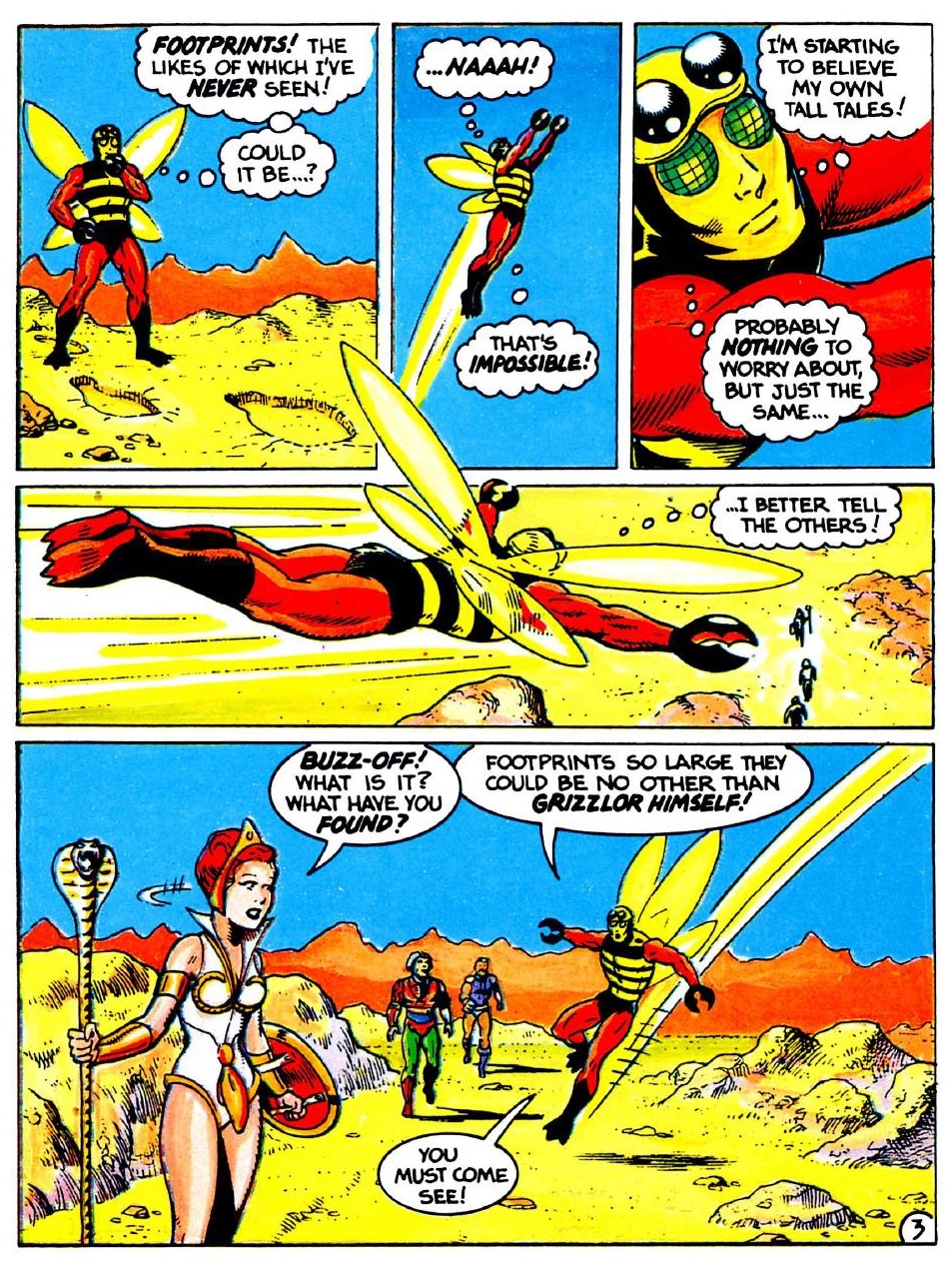

Buzz-Off is a frequent collaborator with Mekaneck, not only in the mini comics but also in the Filmation He-Man cartoon series. Both of them are supposed to be spies, although in a fight I think Buzz-Off’s claws and axe (or stinger lance, which he used in the cartoon) would come in a lot more handy than Mekaneck’s periscoping neck and ornate club.
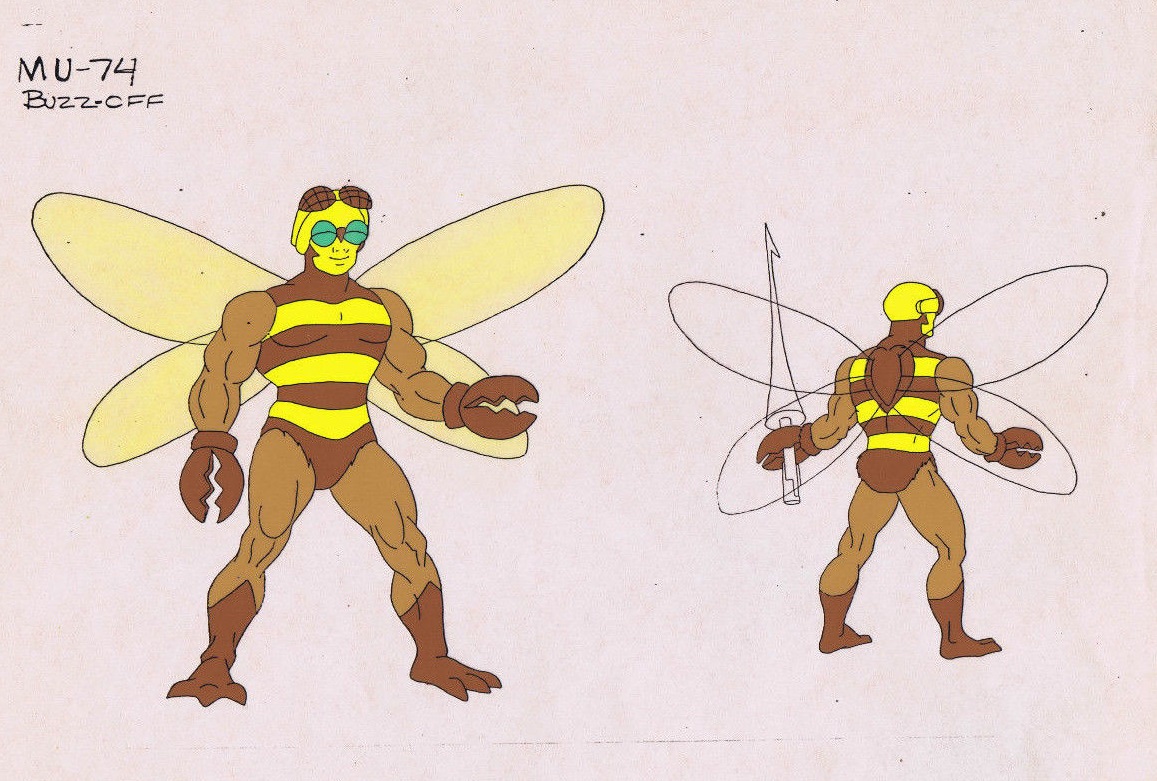

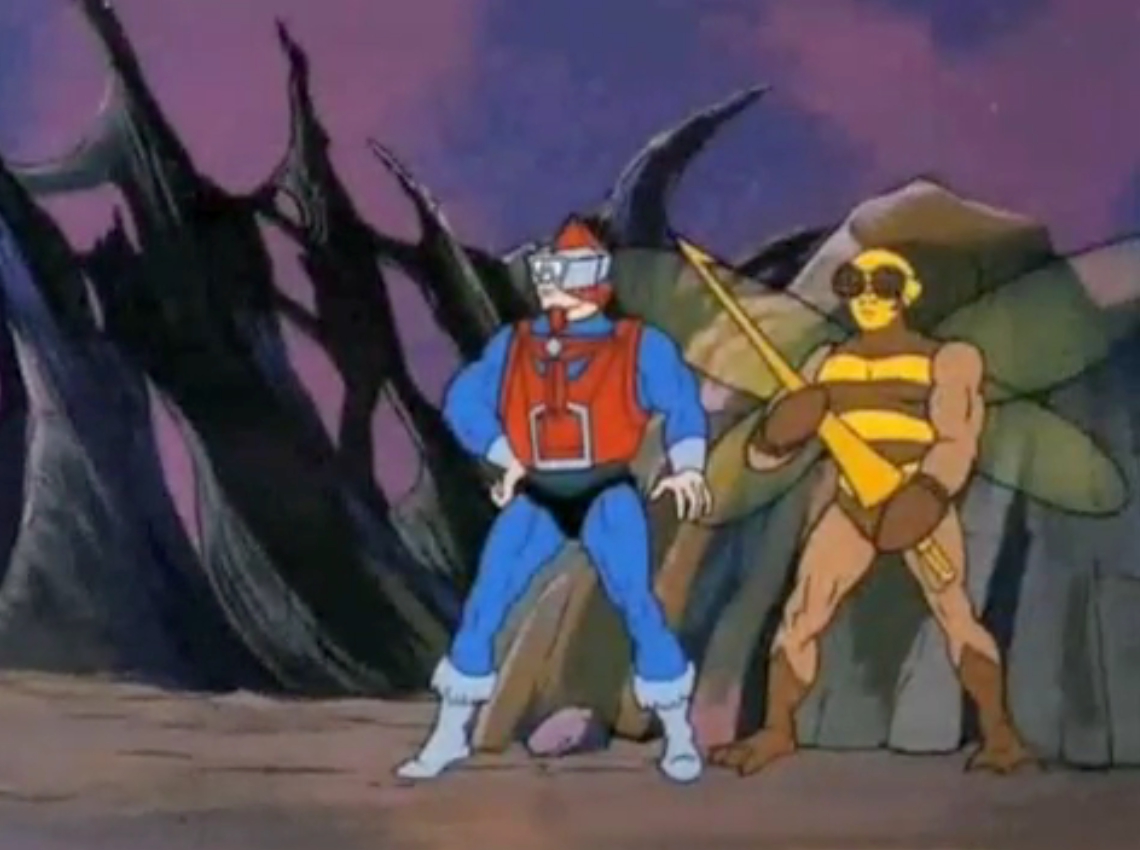
In the cartoon, Buzz-Off is part of an entire race of bee people. This is one of the few times an animalistic character is said to be part of a larger race of sentient beings in the cartoon series.
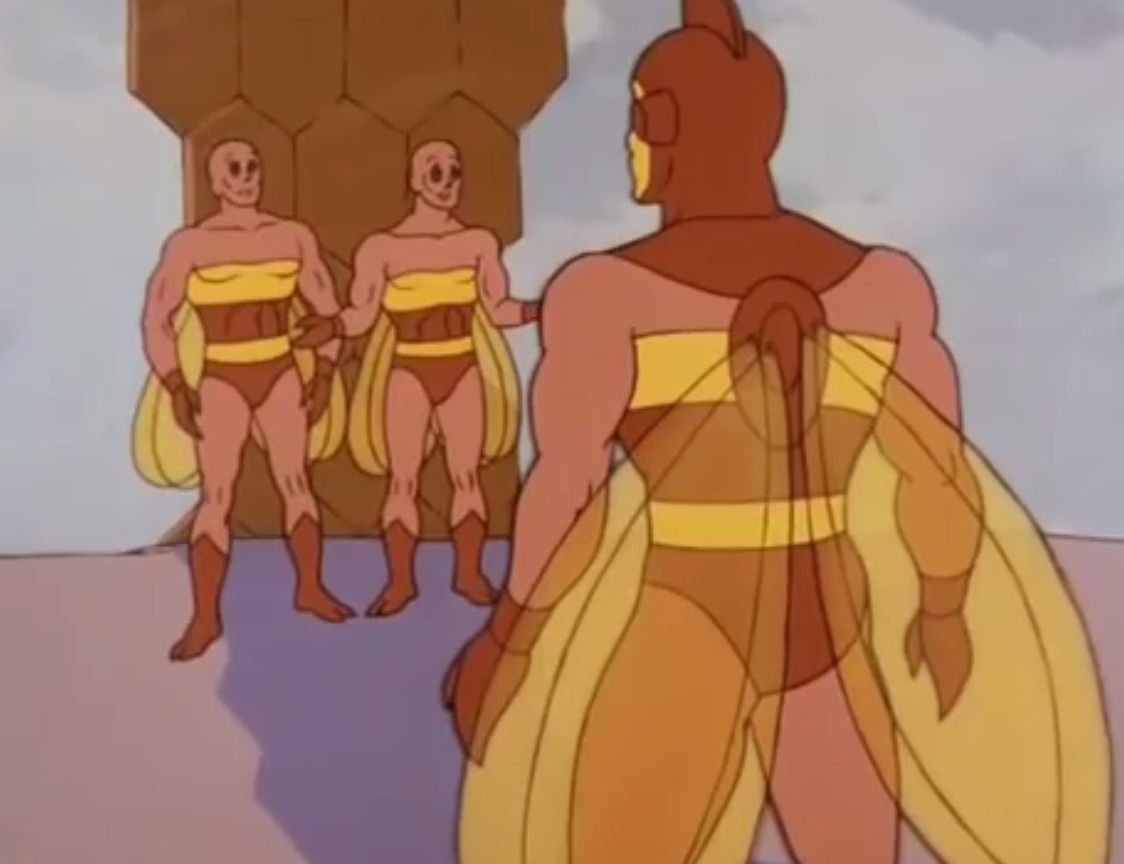
Several years back, The Power and the Honor Foundation shared this early model sheet for Buzz-Off (edit: Dušan Mitrović informs me that this was for Bug-Off), which is based off of Colin Bailey’s original concept drawings. Often Filmation would go with concept designs rather than final toy designs given the lead time required to produce an episode. In this, case, however, they ended up going with a simplified version of the final toy design.
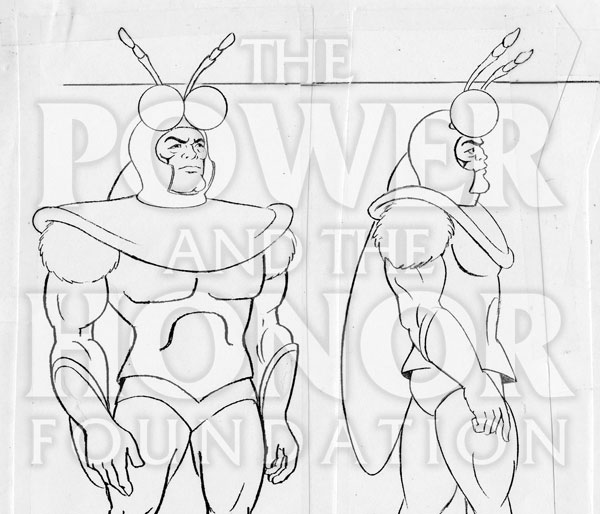
Buzz-Off is also a recurring character in the Golden Books series of He-Man books, although perhaps his strongest appearance is in The Rock Warriors:




Buzz-Off seems to have been fairly popular, given the relative frequency of his appearances in the cartoon and mini comics. He was even offered as a Halloween costume by Ben Cooper back in 1985:



Conceptually, Buzz-Off is not so different from characters like Mer-Man or Beast Man. Like them, he is a kind of human/animal hybrid. The bee motif does make him seem less serious, but he remains a personal favorite of mine.


